|
Ron Williams, author of Landscape Architecture in Canada, called King's Square of Saint John, New Brunswick, "one of the most memorable urban squares in Canada." [1] Ian Sclanders in his 1958 MacLeans article called it, "a monument-studded park."[2] The square is both of these things - a lovely space where visitors can stroll and relax and also a site for taking in the province's rich history. The square, established in 1785 and named for King George III, was created just one year after the province of New Brunswick was formed. Early uses included: oxen roasts, militia parades, cricket games, firework displays, public pillories, agricultural fairs and a slaughterhouse. In 1844, the square was developed as a park and its current design was implemented. Orthogonal and diagonal paths were laid out, reminiscent of the Union Jack. The paths meet in a central circle housing a fountain (built in 1851) and a two-storey bandstand (erected in 1908). [3] Williams explained that the square fused two spacial archetypes typical of the 18th century together, namely the place and the square. The place was usually commercial in surroundings and often paved. The square, on the other hand, was typical in residential surroundings and characterized by green space. When describing King's Square he expressed that, "[it] is almost always filled with people, the benches fully occupied. Those out for a stroll, students, people using the park as a shortcut, tourist accompanied by their guide-- all share the space comfortably." [4] The square is a beautiful and quaint spot to visit in Saint John. Making it even more noteworthy are several large monuments dotted throughout, commemorating many different people, as well as local and national events. The Loyalist Cross At the end of the American Revolution (1783) those who wished to remain loyal to the British Crown (known as Loyalists) flocked to British North America, including Saint John and other areas of what became New Brunswick. Approximately 15,000 loyalists settled in New Brunswick during this period. [5] These settlement numbers had convinced the British Government of the advantages of creating a province in 1784, and Brigadier General Thomas Carleton, responsible for transplanting many Loyalists there, was chosen as the first Governor. Tilley Memorial A beautiful memorial for Sir Samuel Leonard Tilley greets visitors at the west end of the square (his actual remains are in nearby Fernhill Cemetery). The monument, erected in 1910, was created by Canadian sculptor Philippe Herbert. Tilley was born in Gagetown, New Brunswick in 1818. He entered politics in the 1840s and had a successful career as federal cabinet minister, Lieutenant Governor of New Brunswick, and Father of Confederation. In 1879, he was made Knight Commander of the Order of St. Michael and St. George by Queen Victoria and later made a companion of the Order of the Bath. [6] War Memorial In 1925 a war memorial, sculpted by Alfred Howell, was erected in the square. Howell was born in 1889 in Oldbury, England and studied at the Royal College of Art in London. Once in Canada, he taught at the Toronto Central Technical School. Howell found much success in Canada, creating war memorials in other Canadian cities, including: St. Catharines, Guelph, Sault St. Marie, Oshawa, and Pembroke (All in Ontario). In his book To Mark Our Place: A History of Canadian War Memorials, Robert Shipley stated, "Howell's monuments were often more complex than earlier ones found in Canada," adding they were, "more romantic than the static figures of the previous century." [7] This memorial stands at the entrance to the square as a solemn reminder of those who paid the ultimate sacrifice. Interestingly, its placement was the topic of much debate. Initially, the Women's Christian Temperance Union's drinking fountain (1883) stood in its place, commemorating Loyalist women who founded the city. PhD candidate, Thomas Littlewood in his article, "Conflicting Commemorations: The Saint John War Memorial and the Women's Christian Temperance Union Foundation, 1922-1925," explained that there was a divide in public opinion over the memorial's placement, with many community members wanting to remove the drinking fountain in order to give the war memorial the most prominent spot. Others, including the mayor, strongly felt removing the fountain would be an erasure of history and lead to, "forgetting the city's Loyalist roots." In the end, the war memorial was not placed at the head of the square; instead, it was given a spot nearby. By 1962, the drinking fountain had fallen into disrepair and was removed. [8] The Gorman and Young Memorials The impressive Gorman memorial, built in 1962, captures speed skater Charles I. Gorman, whose leg was injured by shrapnel during the First World War. During the 1920s he excelled in speed skating and was referred to as the "Man with the Million Dollar Legs" and the "human dynamo." Interestingly, he was also a great baseball player. He even turned down an offer to play with the New York Yankees to focus on skating. He participated in both the 1924 and 1928 Olympics, finishing seventh in both. After a lengthy illness he passed away in 1940. At his funeral, thousands of people lined the streets of Saint John to pay their respects. He was later inducted into the Canada Sports Hall of Fame in 1955. [9] Nearby, the Young memorial relates a poignant story of a nineteen year old boy, John Frederick Young, who drowned in 1890 while attempting to save ten year old Freddie Mundee from meeting the same fate. The memorial's plaque has a message from John 15:13, which reads, "[g]reater love hath no man than this that a man lay down his life for his friends." Richard Rubin, columnist for the New York Times stated that the Gorman and Young memorials were "two monuments to men who tried and failed, but went down nobly." [10] Last Alarm Bell Monument The Last Alarm Bell Monument was erected by the Saint John Firefighters Association, Local Union No. 771 and the City of Saint John in order to commemorate the bicentennial of the Saint John Fire Department (1786-1986). Its plaque reads: Dedicated to the memory of those firefighters who answered their last alarm while serving in line of duty, may their sacrifice be perpetuated in everlasting memory by those for whom they serve." In 1877, several years before the Firefighter Association was formed, there was a great fire in Saint John. The fire left 13,000 people homeless. As a result, many people slept in King's Square. Scholar Ronald Rees explained that, "[w]ooden buildings, closely built on commercial and some residential streets, and the ubiquitous tar, ropes, and tindery wood associated with shipping and shipbuilding, all invited flames." Nineteen people lost their lives and 1,600 buildings burned, most of them to the ground. [11] King Square Today In 2013, John Irving and Dr. Richard Currie donated $100,000 for the restoration of the bandstand. 400 people attended the unveiling and the St. Mary's band played, the first band to play there in a decade. Project foreman Andrew Shaw said that, "just watching all the smiles on everybody's faces and all the elderly people that remember the bands that used to play, and watching them play again. It's really exciting to be here. It's a proud moment." [12] The bandstand certainly holds a special place in the hearts of many Saint Johners. 93 year old Marjorie MacDonald recalls, "getting [her] first kiss at the bandstand from a high school sweetheart in 1941." [13] Few places in Canada provide so much local and national history in one small area while also providing a park setting conducive to fresh air, walking, and, when the weather permits, enjoying some sunshine. Strolling through King's Square demonstrates how heritage sites and modern public spaces need not always be at odds with one another; some sites can provide both modern recreation and historical learning. Saint John is a lovely city with a rich history and beautiful architecture. A trip to King's Square is a great way to spend an afternoon and is an absolute must-see! Acknowledgements A special thanks to the staff of the New Brunswick Museum for providing me a copy of the aerial photograph of King's Square. [1] Ron Williams, Landscape Architecture in Canada (Montreal and Kingston: McGill-Queen's Press, 2014), 93-94.
[2] Ian Sclanders. "King," Macleans Magazine August 16, 1958. [3] Public plaque in King's Square [4]Ron Williams, Landscape Architecture in Canada, 94. [5] Ronald Rees, New Brunswick: An Illustrated History (Halifax: Nimbus Publishing, 2014), 32. [6] Sir Samuel Leonard Tilley - St. John, NB, Canada. Waymarking. (accessed November 27, 2019); P.B. Waite and Carolyn Harris, "Sir Samuel Leonard Tilley," The Canadian Encyclopedia, January 20, 2008 (accessed November 27, 2019) [7] Robert Shipley. To Mark our Place: A History of Canadian War Memorials (Toronto: NC Press Ltd., 1987), 129. [8]Thomas M. Littlewood, "Conflicting Commemorations: The Saint John War Memorial and the Women's Christian Temperance Union Fountain, 1922-1925," Journal of New Brunswick Studies, vol. 10 (2018) [9] Charles Gorman, Wikipedia (accessed November 2019) [10] Richard Rubin, "In Saint John in Canada, Exploring the Legacy of the Loyalists," New York Times, October 27, 2016. [11] Ronald Rees, New Brunswick: An Illustrated History, 151. [12] CBC. Refurbishing King's Square Bandstand Unveiled, August 1, 2013 [13] Shawn Rouse, Saint John's historic bandstand stolen from King's Square, The Manatee, June 23, 2016.
0 Comments
"After all, a lively interest in one’s own environment makes for all that is best in life." -B.M. Winegar [1] In 1885, Donald A. Smith drove the last spike of the Canadian Pacific Railway (CPR), marking the completion of a railway line connecting eastern and western Canada. Shortly after, the CPR worked to beautify railway stations throughout Canada. Shrubs, trees and flowers were planted in an effort to beautify towns along the line. By 1915, they tended to an astonishing 1,500 gardens.[2] Railway Gardens in the West In the 1870s, Canada's first Prime Minister, John A. Macdonald, set forth the National Policy. Initially, this economic policy aimed at protecting manufacturers by placing higher tariffs on imported goods. Over time, the policy changed, recognizing that immigrants were needed to help build the infrastructure that would turn Canada into a great country. It called for the construction of the CPR and settlement of the West.[3] As a result, the CPR developed vast tracks of land in western Canada. In a small way, railway gardens helped fulfill part of the policy's aim by beautifying the prairie landscape in the hopes of attracting new settlers. These gardens were used as advertisements and links to the outside world, showing visitors and those passing through the beauty and fertility of prairie life.[4] Many immigrants found the expansiveness of the prairie landscape daunting. There were few trees, and the land stretched as far as the eye could see. Italian immigrant Luigi Fincati recounted that upon arrival in Canada in 1920, his family took the train from Montreal to Saskatchewan. The family's first impressions of the new country were that it was very vast; they seemed to travel on the train for days, and it felt endless.[5] Many immigrants coming to the prairies had the same impression. Railway gardens were often seen as a welcome and colourful break from the flat landscape.W.J. Strong, a native of Wolseley, Saskatchewan, wrote an article for the OAC Review (1910) expressing this sentiment. He wrote that: If the good work now begun goes on increasing year by year until the Prairie is literally dotted with these beautiful spots, how different will be a journey across the great wheat lands of Canada. Instead of the traveller and settler being wearied with the monotony of huge grain fields and open prairie, they will have, at short intervals, beautiful pictures composed of trees and shrubs, and lawns and flowers, upon which to rest their gaze. Thus their first impressions of this vast prairie country will be so pleasant that they will desire to make their homes here.[6] Royden Loewen, Chair of Mennonite Studies at the University of Winnipeg, argued that the open prairie landscape often required new immigrants to undergo a "mental reorientation".[7] Railway gardens were thus seen as a welcome change of scenery and a taste of "home"; they were used as a symbol for demonstrating the robustness of prairie life. Railway Gardens in the East Railway gardening was prevalent in the West, but it was also practiced in eastern Canada. The CPR was pressured by beautification groups in places like Ontario to create gardens at railway stations. This era was a time when beautification efforts were heavily championed. Vacant lots were filled with flowers, schools created gardens and horticultural societies did various plantings. Considering these efforts, it only made sense that railway stations and lines were beautified in the same way. Much like their western counterparts, people in the East recognized that railway stations were important points of entry; they felt it was important to plant beautiful gardens in order to make a good first impression. B.M. Winegar, representative of the CPR, expressed this view in 1921 when he stated: For the traveler who spends many weary hours on a transcontinental train the sight of a garden is joy. He appreciates our efforts and his ideas of the town he goes through many times are influenced by the appearance of the station and its grounds. Later on he will say, ‘I remember that town, there must be a fine spirit there, the station was neat and the little garden was well kept, and the surroundings attractive.’[8] Railway Garden Creation and Maintenance The earliest CPR gardens were created and maintained by employees who volunteered their time in this pursuit. In 1907, a Forestry Department was created within the company, with a special branch created to take charge of the park and garden work. That year, a nursery in Springfield, Manitoba was established. By 1912, there were greenhouses operating in Fort William, Kenora, Winnipeg, Moose Jaw, Calgary, Revelstoke and Vancouver. From these nurseries, trees, shrubs and plants were distributed to different stations along the rail line.[9]The company also established a Floral Department. In 1911, this department distributed over 100,000 packages of flower seeds to the company's agents, section men, and other employees. A 1911 Globe article explained that: [t]he effective work of the [CPR] Floral Department has had wide-reaching beneficial effects, not only in encouraging a love of flowers amongst its army of employees and in beautifying its long lines of rails, which is highly appreciated by those who travel by the company’s trains, but in showing the world that all corporations are not exclusively after the almighty dollar always.[10] As added incentive, prizes were often awarded to the best gardens. For instance, the 1920 first prize for the "best kept plot" was awarded to the Chalk River Division, where a beautiful garden was kept by baggage man Ed Williams who "devoted his spare time to its cultivation."[11] The outstanding efforts of the CPR and its employees resulted in many beautiful gardens dotting the railway lines, which were enjoyed by the many who saw them. 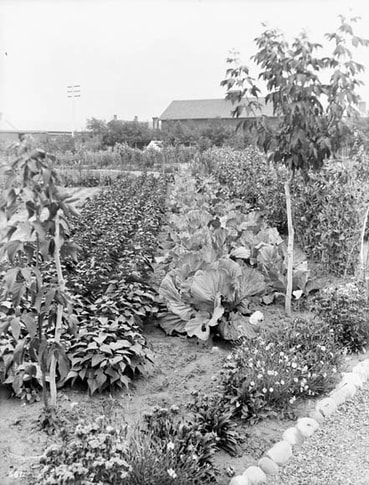 This Calgary CPR station grew both flowers and vegetables. Many stations during the First World War began growing vegetables to support ongoing war efforts. This photograph is undated, so it cannot be said for sure if this garden was created with these means in mind. Source: Topley Studio / Library and Archives Canada / PA-026186/ Mikan 3424622 Where Did the Gardens Go? Railway gardens were created and maintained until shortly after the Second World War. At that time, Canadian society underwent a rapid transformation. Rural settlement of western Canada began to slow down. Newer technologies and increased disposable income meant that people could now travel more conveniently by car or plane. Railway stations, although still frequented, became seen as less vibrant entry points to the community. It seems fitting to end this post with a quote from Canadian garden historian Edwinna von Baeyer, who said that “[i]n many places where station gardens bloomed, there are now only parking lots.”[12] [1] B.M. Winegar, “Railways and Horticulture” in Sixteenth Annual Report of the Horticultural Societies for the Year 1921 (Toronto: Department of Agriculture, 1922)
[2] Edwinna von Baeyer, Rhetoric and Roses: A History of Canadian Gardening 1900-1930 (Markham, Ontario: Fitzhenry and Whiteside Ltd., 1984), 26. [3] Donald Grant Creighton, John A. Macdonald: The Young Politician, the Old Chieftain (Toronto: University of Toronto Press, 1998), 119-120 [4] Edwinna von Baeyer, "The Rise and Fall of the Manitoba Railway Garden," Manitoba History, Number 31, Spring 1996. [5] Saskatchewan Archives Board, audio tape file number A-307 side A, Fincati, Luigi, interviewed by Anna Maria Crugnale, August 2, 1973. [6] W.J. Strong, “The Beautification of Station Grounds by the Canadian Pacific Railway in Western Canada,” in The O.A.C. Review, Vol. 23, No. 3, December 1910. [7] Royden Loewen, Ethnic Farm Culture in Western Canada, The Canadian Historical Association Canada Ethnic Group Series Booklet No. 29, p. 7. [8] B.M. Winegar, “Railways and Horticulture” [9]Edwinna von Baeyer, Rhetoric and Roses: A History of Canadian Gardening 1900-1930, 25. [10]“C.P.R. Sends Seeds to the Employees,” The Globe, April 5, 1911. [11] Renfrew C.P.R. Station Garden Wins Div’n Prize, The Globe, November 3, 1920. [12] Edwinna von Baeyer, Rhetoric and Roses: A History of Canadian Gardening 1900-1930, 33. At the turn of the twentieth century, businessman and philanthropist, Moses Rittenhouse, funded several projects in his hometown of Lincoln, Ontario, including a school and gardens. These rural children were educated in nature study and natural history, and put theory into practice by learning to grow fruits and vegetables. School gardening taught children valuable life skills, a topic discussed in depth in my previous entry "The Greatest Education-Nature: School Gardening in Canada." The current post explores the history of the Rittenhouse School, with a focus on school gardening. Moses Rittenhouse The Rittenhouse family first came to America in the seventeenth century; they built the first paper mill in the North American colonies in Philadelphia in 1690. Moses' father, John Rittenhouse, was originally from Philadelphia. He moved with his parents to Upper Canada in 1800, settling in Lincoln. Then, in 1846, Moses was born. As a child, Moses went to school in the winter and worked on the family farm in the summer. At the age of eighteen, he left for Chicago, and soon after became a successful businessman. Following in his ancestors' footsteps, he worked in the lumber industry. He was president of the Rittenhouse and Embree Company, and Vice President of the Chandler Lumber Company, the Sixty-Third Street Lumber Company, and the Arkansas Lumber Company. Although he started a new life in America, and a very successful one at that, he never forgot his roots, making occasional visits home throughout his adult years. Rittenhouse donated hundreds of thousands of dollars to Lincoln County as a means of enhancing the rural community. Some of the projects he funded included: the establishment of a lending library (1886); the Rittenhouse School (1890); an addition to the Vineland Cemetery, which included a trust that was to be invested and used for future cemetery maintenance; a gift of land to the government for a horticultural experimental station; the building of Victoria Hall used for public performances; and the creation of a park with a bandstand. He was known to be a very generous man. An article written about him for the American Lumberman stated that “[h]is charitable instincts are largely developed and every act of his life, whether in a business or a social relation, is prompted and controlled by the principle laid down in the Golden Rule.” Moses passed away in Chicago in 1915 at the age of 69. He was buried with his family in the Vineland Cemetery which he helped to fund. Rittenhouse School and Gardens “Education was not so long ago designated by the three ‘R’s’, but to-day a liberal education is demanded, one more properly known by the three ‘H’s’, the Hand, the Head, and the Heart.”-Rittenhouse School Gardens, 1911 The Rittenhouse School was founded in 1890. Moses bore half of its cost and the Globe called the school "one of the finest in the country." The structure was built in the place of the old stone school, of which Moses was a pupil in his youth. With a focus on natural history, the school was equipped with a library (with more then 2,000 volumes), a museum, children's gardens, and a conservatory. Approximately 45 children between the ages of 4 and 10 attended the school each year. The first school gardens appeared on the property in 1907. Teacher Harvey Gayman stated that, “[t]he fact that our school grounds were cared for by a gardener, and the children had little to do but admire the beauty of the flowers and plant life, led to the establishment of a school-garden which was to be theirs, one in which they might experiment, and receive elementary instruction in the principles of agriculture, as a part of their education.” He believed that children in country schools should be taught about farm occupations and economics; school gardening was a wonderful way to get children interested in country life. Around Arbor Day children prepared their individual plots for planting. Plots were 6ft by 10ft for students of the third, fourth and fifth grades. Smaller plots were used for younger students. All pupils were required to use half of their plots for vegetables and the other for flowers. A few months prior to planting, they were given lessons on germination and garden care. They were also responsible for working out their garden plans in exercise books. Gayman explained that "Last year [1910] each child in the Third, Fourth, and Fifth Classes was allowed to plant in his own garden what pleased him best. By this method each child sowed his individuality, and results were quite satisfactory." One year, students performed an experiment with tomatoes. The Ontario Agricultural College supplied students with seeds of 13 varieties of tomatoes, in order for them to determine from a canner's and grower's standpoint which tomatoes were the best. With these seeds, the children planted 480 tomatoes. The Beamsville Canning factory tested the different varieties and it was determined that the Marvel and Ignotum varieties were the best. The students also grew impressive numbers of other vegetables, including 300 celery plants planted in 1911 and 300 watermelons grown annually. Today The Rittenhouse School no longer stands, as both it and Victoria Hall were expropriated for the Queen Elizabeth Way interchange at Victoria Avenue in 1936. Victoria Hall was moved to Prudhommes Landing in Vineland and later closed in 2005 due to structural issues. It sadly burned down in 2008. Although these structure no longer stand, the legacy of Moses Rittenhouse is still felt in Lincoln today. The Rittenhouse Library still exists. In 1969, it moved to a new facility built with money from the Rittenhouse Trust. In 1995 it moved again, this time to a bigger facility, on Victoria Avenue. In 2006, Rita Washko, great-great-great granddaughter of Moses, donated his 1897 desk at the request of her father, Paul Rittenhouse Jr. to the Lincoln Library for their 10th anniversary reception at their new location. The Lincoln Museum had an exhibit to honour the legacy of Moses Rittenhouse in 2006. The Museum's then Director, Helen Booth stated that "Rittenhouse put Vineland on the map as a centre for agricultural experimentation, for education and for just being a pretty town." The legacy of Moses Rittenhouse shows how the effects of philanthropy can reverberate throughout the ages. His projects have positively benefited Lincoln, and are still celebrated today. Acknowledgements Thank you to the staff of the Lincoln Museum for providing me with scanned images and research materials to include in this post. Thank you to Sheldon who kindly gave me his copy of Rittenhouse School and Gardens. [1] "Death has Summoned Vineland Benefactor," the Globe, November 8, 1915
[2] "Ontario School Gets Part of a Fortune," the Globe, November 18, 1915 [3] “The New Experimental Station in the Niagara District,” Canadian Horticulturist, Vol. 29, 1906, p. 171-173. [4] Photographs courtesy of the Lincoln Museum, Library and Archives Canada and the Biodiversity Heritage Library [5] Harvey M. Gayman, Rittenhouse School and Gardens, Toronto: William Briggs, 1911. [6] "Rich History Lost in Fire," Niagara this Week, March 20, 2009. [7] Whatson, "Legacy of Rittenhouse Family Showcased at Jordan Museum," Niagara this Week, June 2, 2006. [8] Lincoln Public Library, "A Brief History of Lincoln Public Library," https://lincoln.library.on.ca/brief_history (accessed March 22, 2019) [9] "Library Donation Opens up Story of Rittenhouse Family," Niagara this Week, September 29, 2006. “Let music swell the breeze, And ring from all the trees, On this glad day. Bless Thou each student band O’er all our happy land: Teach them Thy love’s command, Great God, we pray.” -"Class Day Tree" [1] By 1850, almost all Southern Ontario forests had been cleared, largely as a result of agricultural expansion and timber exploitation by new settlers.[2] Upper Canadian homesteaders had to burn the underbrush of their land, cut down trees, and remove rotten stumps to make way for productive farmland. Southern Ontario's landscape, once lush with forest vegetation, was forever changed. Today, further changes are ongoing. Land is being paved over for housing, strip malls, and parking lots. These changes make it hard to imagine what it would have looked like 200 years or more ago: large forests thick with trees and teeming with animals. In the late nineteenth century, some settlers began to take issue with the vast changes to the landscape. Many began to consider ideas of civic beautification and initiatives to plant trees, flowers, and shrubs in an effort to recapture some of the lost beauty. One such initiative was Arbor Day. Arbor Day was established in Nebraska in 1872. Very shortly after it became popular in other states as well as in Canadian provinces. In 1884, citizens of New Brunswick organized a campaign on Arbor Day, where they landscaped five original town squares in Charlottetown.[3] Quebec began celebrating Arbor Day in 1883.[4] In 1885, Ontario's Education Minister declared Arbor Day a school holiday, so that the time could be devoted to improving and beautifying school grounds through planting flowers, trees, and shrubs. He stated that "the condition of the school grounds throughout the Province is anything but complimentary to our taste and tidiness as a people."[5] Each year school children throughout Ontario had one day off in May to help their teachers beautify school grounds. One teacher, who penned her name as "Girl with the Apron" wrote into the Globe in 1912, detailing how her class spent the holiday. She asked students to bring seeds into class; the response was overwhelming. They spent the day planting nasturtiums, dahlias, hollyhock, gourds, morning glories, asters, poppies, and sweet Williams. She stated, perhaps in a tongue-in-cheek manner: "the arrangements, I'm afraid is utterly contrary to the Ladies Home Journal's ideas of proper color massing. But we'll hope the violent contrasts aren't in blossom at the same time." At the end of the day her class accompanied her on a walk through a nearby forest. Arbor Day concluded with a homework assignment that involved writing an essay on "a ramble in the woods with our teacher."[6] Many people over the years wrote to the Globe arguing about the holiday's importance. Several people took philosophical views, namely that cultivating beautiful things can make for better people. One author, in his 1903 article, expressed that, "what is wanted more than almost anything else is the humanizing and civilizing influence of the beautiful."[7] In 1918, another author asked his readers what could be done to beautify villages and small towns. He then eloquently declared that, "the answers would fill a book, but meanwhile the words 'Arbor Day' float down from somewhere among the gorgeous foliage of the maple trees and write themselves upon the paper and upon the brain and upon the heart."[8] He went on to explain that the maple tree was much more than just a beautiful tree; it was also a meaningful Canadian symbol that instilled patriotic pride. He wrote this during wartime and explained that "in thousands of letters that are crossing the ocean at this moment its leaves are enclosed as symbols of infinite solicitude and affection, carrying messages to sons and brothers and fathers and lovers with an eloquence and pathos that no words could command."[9] Thus, Arbour Day was not just about civic beautification and teaching children about gardening; it also instilled a pride of place in Canadian citizens. Several other writers discussed the importance of Arbor Day through a conservation lens. People were witnessing the disappearance of forests and animals. The landscape was changing before their eyes, and they wanted to preserve and encourage the growth of trees, not just for the aesthetic and educational benefits they could instill, but because tree planting was a means of stewarding the environment. Springs had shrunken and small streams had disappeared as a result of the disappearance of trees. Deforested areas were also subject to cold winter winds, with one writer explaining that farmers feared the effects of this wind every season on crops and orchards.[10] After discussing the negative environmental effects that deforestation had caused, the author explained that "the spirit of Arbor Day should pervade this year [1893]. Children should be taught to value trees and regard them, whether in the school grounds or by the wayside, as silent teachers and companions."[11] In 1915, another author wrote that "the idea of developing trees for the gratification of a future generation is a useful lesson in altruism, and the self-sacrifice involved should be thoroughly understood by those who make it."[12] He felt that planting trees was good for producing shade and improving the climate, and that the removal of trees had contributed to the climate's aridity, injuring plants and animals through a lack of moisture in the soil and air. These writers' statements show that people at the close of the nineteenth and beginning of the twentieth century were thinking about the repercussions of deforestation and saw initiatives like Arbor Day as important ways to get youth to understand the importance of trees and forests in the natural landscape. Beginning in the 1930s people began to write into newspapers expressing their disappointment that Arbor Day was becoming a thing of the past. Concurrently in 1934 the city of Toronto began to record the numbers of tree cutting and plantings. In a later study, City workers uncovered that by the end of 1952, 47,673 trees were removed from streets and parks. During the first seven years of the study 10,640 trees were planted. There were no records of any plantings before 1941, except for a few trees dotting University Avenue and Jarvis Street. [13] A 1953 Globe and Mail article stated that, because of these figures, there was a need for the government to better inform the younger generation of the meaning of conservation, explaining that "it could start in the backyards and on the streets of the city itself." [14] In the past several decades there has been a resurgence in tree planting, perhaps not for some of the poetic sentiments expressed above, but because of links between nature, conservation, and mental health. There has been a burgeoning number of studies and articles linking nature to better physical and mental states. As rampant development continues, Canadians are noticing severe changes to their environment, few of them positive. This development, coupled with increased hours spent in front of screens, takes its toll on our ability to connect with nature. People are beginning to notice an emptiness; many are starting to see the importance of green space and nature's beauty in their own lives. These revelations, along with things such as a celebration of locally produced foods, arts and crafts, etc., have led to an increase in beautification initiatives and nature education. Every September, Canadians now celebrate National Forestry Week. The Wednesday of this week was declared National Tree Day (Maple Leaf Day) in 2011. On this day Canadians are encouraged to plant trees in their communities. Tree Canada, an organization that dedicated efforts to organize the holiday, states that the day serves "as a celebration for all Canadians to appreciate the great benefits that trees provide us - clean air, wildlife habitat, reducing energy demand and connecting with nature." [15] Ontario also celebrates Arbor Week in April/May, Prince Edward Island celebrates Arbor Day on the third Friday in May, and Calgary celebrates the holiday on the first Thursday in May. There are several organizations which support backyard and school yard tree planting and education. Here are a few to check out: Local Enhancement & Appreciation of Forests (LEAF) | Forests Ontario | Planting for Change (P4C) initiative by the Association for Canadian Educational Resources (ACER) | One Million Trees Mississauga | Think Trees Manitoba Forestry Association | Tree Canada Get out there and get planting! [1] The "Class Day Tree" was first published in the New York Arbor Day Circular. I found it in an article written by M.A. Bryant entitled "An Arbor Day Exercise" in the April 1896 volume of the Popular Educator.
[2] Ron Williams, Landscape Architecture in Canada (Montreal and Kingston: McGill-Queen's Press, 2014), 93-94. [3] Ibid., 162. [4] Legislative Assembly of the Province of Quebec. Arbor Day: A Few Advices to Farmers on the Planting of Forest and Ornamental Trees (Eusebe Senecal & Fils, 1884) [5] The Globe, April 17, 1885. [6] Arbor Day at School, The Globe, August 3, 1912. [7] Arbor Day, The Globe, March 31, 1903. [8] Arbor Day, The Globe, October 5, 1918. [9] Ibid. [10] Arbor Day, The Globe, March 25, 1893. [11] Ibid. [12] The Significance of Arbor Day, The Globe, April 28, 1915. [13] Toronto's Vanishing Trees, The Globe and Mail, June 6, 1953. [14] Ibid. [15] Tree Canada. "National Tree Day," https://treecanada.ca/engagement-research/national-tree-day/ (accessed February 12, 2019) In 1914, Canadian Grant Lochhead was detained at Prisoner of War Camp, Ruhleben in Germany for the duration of the First World War. Grant had just finished his PhD at the University of Leipzig, but did not succeed in leaving Germany before war broke out. Upon returning to Canada his experiences were recounted in two publications, The Ottawa Naturalist and the MacDonald College Magazine.[1] What was Ruhleben? Ruhleben (German for "quiet life") was a prison camp located at an old horse racing track outside of Berlin, where approximately 5,000 men from Allied nations were interned. At the start of the war, the camp's conditions were poor, but they improved with time as communities within the camp were established. Kenneth I. Helphand, author of Defiant Gardens, described the camp as being "a mud-filed swamp when it rained, cold, with poor latrines and wretched food."[2] German soldiers acknowledged that the prisoners behaved better if left to their own devices; thus the camp was self-governed. The internees created an "English village," where there were tradesmen, barber shops, shoe makers, and carpenters.[3] They even used British street names, such as Bond and Fleet Street. Grant Lochhead's Story When the First World War began, Grant left the Leipzig station for Holland with a group of fellow Britons. Their journey was interrupted by German authorities and the group was taken to a nearby prison. Grant explained that: When we were welcomed by the police officials we were forced to submit to an exceedingly thorough search, and were finally ushered to our cells. To elaborate the feeling one has when the bolt of the cell- door is shot to for the first time is unnecessary, and would only be appreciated by those who have done time.[4] One week later he was given a pass to leave. While on board a train to Holland (for the second time) Grant was arrested at a station near the Dutch border. He was then taken to the Schloss Hotel where eighty men - consisting of Britons, Frenchmen, Russians, and Belgians - were kept in two rooms under heavy guard by German forces in the hot month of August. Two weeks afterward he was taken to a military prison in Hanover, where "one did have the luxury of a cot to one's-self."[5] After one month's stay, he was brought to a camp where the Germans held detained Alsatians. After only one week in the Hanoverian prison, he was liberated by the American consul, at which point his belongings were returned, with the unfortunate deduction of "one mark and fifty pfennig per day for 'board and lodging.'"[6] For one month he and the other liberated men lived in the town under strict police supervision. Then, on Nov. 6th, a general order was issued stating that British subjects in Germany were to be interned at Ruhleben in retaliation for England's harsh treatment of German prisoners. For the duration of their stay at Ruhleben, internees slept in a sparsely furnished horse stable. Grant remembered that, "in the course of time much work was done by the prisoners themselves in endeavoring to make their quarters a little more habitable."[7] He also mentioned that those in England were helping to feed the camp by sending weekly food parcels. The parcels were a much welcomed form of aid, especially since the camp's menu offered meager and bland rations. Grant explained that: The official menu was simple and the daily allowance meager — one-fifth of a loaf of bread, coffee substitute for break- fast, soup for dinner, more coffee substitute with an occasional slice of sausage of doubtful derivation for supper.[8] Another internee wrote about the food in his journal lamenting, "Cabbage soup again, third time in seven days."[9] Grant also spoke of the diverse population of internees, ranging from, "mercantile marine illegally detained with their ships before war was actually declared, [...]students, business men, jockeys, trainers, tourists over on a week's holiday trip, and men representing occupations.." [10] and that: One can easily imamine [sic] the little domestic squabbles which might arise when a musician, a jockey, a fisherman, a bank manager, a theological student and a horse-dealer found themselves living together in a space 4 yards each way. All the while, however, a settling process was evident, and kindred spirits gravitated slowly together so that finally congenial people arranged to live together in time. [11] As mentioned above, the camp's internal affairs were left to the prisoners, making it self-governed (to a point). When prisoners realized they were to remain there for a long time, they created committees and clubs, ranging from drama and gardening, to art. A community garden was tended with the intent of growing vegetables for consumption. In 1916 the Ruhleben Horticultural Society was formed and membership reached 943 men.[12] They procured many seeds from the Royal Horticultural Society in London. They also brightened up the camp by growing: lobelia, pyrethrum, begonias, antirrhinums, godetia, and many other beautiful flowers.[13] Internees also taught each other physics, chemistry, and biology in laboratories. Grant explained that: The worst feature of life in such a place was not to be found in the physical discomforts and annoyances, but in the dull, unending monotony of life with the uncertainty which over-shadow- ed everything — this and the enforced in- activity when our fellow-countrymen were doing so much outside. [14] Grant's former botany professor, Tubeuf, sent his student microscopes and other equipment for use while he was a prisoner.[15] For Grant and the other prisoners, their liberation came as a surprise; when they received word of their freedom they were carrying on with "life as usual." They were rehearsing the Christmas play when the news arrived that they were to be freed. Grant returned to Canada, where he had a successful career as the Head of Bacteriology at the Central Experimental Farm in Ottawa.[16] Further Reading For researchers interested in learning more about Grant Lochhead and his time at Ruhleben you can visit Library Archives Canada, where they have a fonds consisting of his thesis, journals from 1914-1972, and photographs of the prisoner of war camp. Click here to learn more. [1]Unknown Author, "Microscopy and Biological Activities at Ruhleben" The Ottawa Naturalist, Vol. XXXII, No. 5, November 1918; Grant Lochhead, "Experiences in German Prison Camps," MacDonald College Magazine, Vol. 9, No. 3: February-March 1919
[2] Kenneth Helphand, Defiant Gardens: Making Gardens in Wartime (San Antonio: Trinity University Press, 2006) 114. [3] Ibid. [4]Grant Lochhead, "Experiences in German Prison Camps," MacDonald College Magazine, Vol. 9, No. 3: February-March 1919 [5] Ibid. [6] Ibid. [7] Ibid. [8] Ibid. [9] Elgin Strub-Ronayne, "Cabbage soup again"-the hardships & resilience of men held in Germany's Ruhleben prison camp', in John Lewis-Stempel, Where the Poppies Blow: The British Soldier, Nature, The Great War (London: Weidenfeld & Nicolson), 219. [10] Grant Lochhead, "Experiences in German Prison Camps," MacDonald College Magazine, Vol. 9, No. 3: February-March [11] Ibid. [12] John Lewis-Stempel, Where the Poppies Blow: The British Soldier, Nature, The Great War, 221. [13] Ibid. [14] Grant Lochhead, "Experiences in German Prison Camps," MacDonald College Magazine, Vol. 9, No. 3: February-March [14]Royal Horticultural Society Lindley Library, "Ruhleben Horticultural Society," https://www.rhs.org.uk/education-learning/libraries-at-rhs/events-exhibitions/ruhleben-horticultural-society [15]B. Elliott. "A Tale of Two Societies: the Royal Horticultural Society and the Ruhleben Horticultural Society In the Occasional Papers from RHS Lindley Library, Volume 12, September 2014, Horticulture and the First World War Were a kind fairy to suggest that I might have one wish granted, it would be that I would like to see every child given an opportunity to have flowers, birds and animals, a place to play, a garden in which to work, and something all his own to love."-J.A. Taylor [1] A Brief History of School Gardening Newton Wiley's 1912 Globe article highlighted the successes of school gardening, stating that "in Ontario during the last four or five years a remarkable development along educational lines has taken place that has been little heard of outside of the centres affected. It has consisted in a broadening of the public school curriculum to a wider utilization of the greatest education-Nature."[2] At the turn of the twentieth century there were several programs that focused on teaching children gardening. In 1904 Nature Study was established as a course at the Ontario Agricultural College (OAC), with the purpose of improving the aesthetic side of rural life in Ontario.[3] Through this program, rural boys and girls were prepared for farm life, where they believed this was "nature's own method of training her children."[4] That same year, Montreal philanthropist Sir William Macdonald initiated and funded a school gardening program. Under the directorship of James W. Robertson, Dominion Commissioner of Agriculture and Dairying, the program commenced. Twenty five schools - five for each province - were selected in Ontario, New Brunswick, Quebec, Nova Scotia, and Prince Edward Island.[5] The program allowed for selected teachers to be sent to one year nature study programs, funded by Macdonald, in places like the University of Chicago, Cornell, the Ontario Agricultural College, and Columbia University. To support future teacher training Macdonald donated $175,000 to Ontario to build what is now known as the Macdonald Institute at the Ontario Agricultural College.[6] Macdonald School Gardening and Nature Study were very popular and successful initiatives that brought students and their teachers closer to nature through practical application. These programs came to a close with the beginning of the First World War, but there was a silver lining. Ontario Horticultural Societies took up the torch where these programs left off. Individual societies throughout the country encouraged children to garden. A ten year old girl who tended a school garden in the Windsor area stated: I grew in [my garden] vegetables, such as radishes, beets, carrots, onions, beans, tomatoes and turnips; all of which grew very nicely. Some of my vegetables I canned after having been shown the way to do them and took them to the Windsor Fair, and got a first prize for $3 for 1917.[7] Another little boy participated in a horticultural society gardening contest and his proud teacher stated that: At the end of the season he got a prize, 75 cents. They sent it to him in the form of a cheque, which the parents had framed, the father saying if they cashed it for him the money would be gone, but they could show the framed cheque to their friends.[8] School gardens were an important part of children's education at the turn of the century. Teaching children to garden instilled many important values. The next section will discuss some of these skills and values, showing how people thought about gardening at the turn of the century. 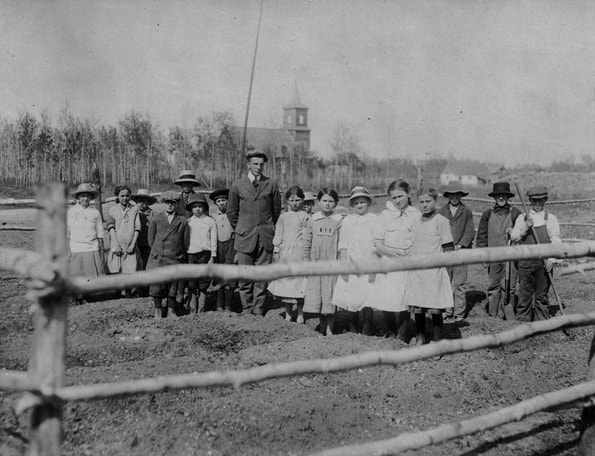 Teaching in Komarno School, Man. (garden making with students) 1917 Source: Library and Archives Canada/George E. Dragan fonds/a088420 Teaching in Komarno School, Man. (garden making with students) 1917 Source: Library and Archives Canada/George E. Dragan fonds/a088420 What was the Value of School Gardens? As discussed above, school gardens meant more than just learning to garden, and students reaped more than just plant knowledge. In 1903, Professor W. Lochhead of OAC wrote an article for the Canadian Horticulturalist magazine where he answered, "what is the value of school gardening?" He believed that it: (a) Inculcates habits of order, care, neatness and method and forces the child to constant observation. (b) Brings the mind into closer communication with nature (c) Teachers and scholars are brought closer in touch (d) Physical recreation of a helpful pleasurable nature is provided (e) Provides a hobby that may keep many from less desirable occupations during their leisure time (f) A greater interest is taken in garden work in the community (g) Indirectly, a love for home and its environments is created (h) Gives boys and girls the rudiments of an industrial training which may be of value later in life.[9] This insightful list shows that there was far more positive skills learned by students than just producing vegetables. Below we will explore these, and other virtues that school gardening taught children in detail. Citizenship and Nation-Building School gardening made good citizens. It was thought that, "through the work of the school garden the pupil of either the country or city school is made a better student and a more useful citizen. "[10]Thus, school gardening was used as a nation-building tool. The act of gardening connected students with the land around them, making them prideful of where they lived. Professor Lochhead illustrated this idea when he stated, "there is no more civilizing influence anywhere than that of the school gardens, and history tells us that one of the greatest advances in the history of the race occurred when men began the cultivation of plants, he then became a home builder, and gave up his wondering, nomadic habits."[11] Gardening also taught children many different skills. One such skill was discussed during the First World War when food production became a patriotic way of helping Canadian and Allied troops. J.A. Taylor expressed that, "school gardens also contribute to national prosperity. We know that the cost of vegetables [is] exceedingly high. It is nothing but right that the children should be taught to play their part in national prosperity."[12] Gardening, then, taught children about economics and enlisted them to help in the war effort. Character Development Through Moral Education School gardening also made good children. George D. Fuller, Director of the school in Brone Country, Quebec, said that gardening had a very positive effect on students because their attention "turned to a consideration of the beautiful to the exclusion of many baser thoughts."[13] Essentially, students spent more time on the virtuous activity of gardening than on activities that might get them in trouble. Thus, it was determined that school gardening in cities usually meant a decrease in crime. In St. Thomas, for example, it was reported that there were fewer juvenile court cases after school gardening was put into the curriculum, because children were busy tending gardens.[14] In addition, active horticultural society member Mrs. R.B. Potts believed that school gardening instilled empathy in Canadian youth. She believed that, "people of all nations are recognizing as a truth that knowledge is for man a means to an end; true education is based on sympathy for fellow man and a widespread appreciation of nature, best gained through observation and continued self activity."[15] Better Students School gardening also made better students. Garden historian Edwinna Von Baeyer stated that "absenteeism, always the bane of the rural school, decreased as the students rushed to school to see if their beans were up yet."[16] Not only did students spend more time in school, but the ones who gardened typically received better grades than those who did not. J.A. Taylor believed this to be the case because, "school garden help[ed] to furnish an environment in which their characters are to develop and grow. Environment forms a large amount of life's course of study, and its enrichment makes noble tastes, refined ideas, elevated thoughts and lofty ideals, and sweetness of soul."[17] A Progressive Idea? Students learned about the environment around them by going outside and gardening. They made mistakes, suffered disappointment, felt pride, and had their curiosity for the outside world satiated. John G. McDonald of the Aurora Horticultural Society explained that, "it is a recognized principle that we learn by doing. So in school gardening nothing will awaken an interest in this subject so much as getting to work at it."[18] This practical application of education is an early example of the progressive educational model. The progressive educational movement began in Canada after the First World War. At this time people re-examined the values of existing, traditional values against innovative ideas. This movement promoted active and personal learning opportunities for pupils by encouraging them to learn through more hands-on experiences. This type of education emphasized life-long learning that taught students to be socially responsible, democratic citizens.[19] Gardening was a way for children to get outside and "learn by doing." Engaging in gardening made them lifelong students who became good Canadian citizens. School Gardening Today School gardens are still in use today, although the way we think about these gardens has changed. Earlier gardens took on the Victorian ideals of crafting moral and just children. Today, school gardening focuses on teaching children more about conservation and respect for the environment. Marjorie Harris, garden columnist for the Globe and Mail, stated that "the sooner you teach a child the joys of the garden, the more likely you'll have an adult who respects the environment."[20] Engaging in school gardening also helps children stay active. In 1996, Nancy Lee-Collibaba of Royal Botanical Gardens called out to parents, "are you looking for some interesting activities that will keep the kids away from computer games or TV, or provide skills to enrich their minds? Introduce your children to gardening!"[21] Gardening is not in the school curriculum, and programs depend on individual teachers' interest in the subject. In 2000, Ossington-Old Orchard Public School's garden, which had fifty students tending it, was threatened with removal when the school could no longer fund the instructor. Grade five student Alex Dault-Laurence was dismayed at the news, stating (perhaps with help from his parents) that, "if the garden disappears, part of the school's identity disappears too."[22]There is a successful school garden at Humewood Community School in Toronto, where students are encouraged to design their own garden plots. The project's coordinator, Alex Lawson, said that "when I saw the students' designs--their wide range of plant choices, their lively sense of colour--I was impressed."[23] In British Columbia there is a popular program called Farm-to-School, which matches participating schools with farmers in order to help teach students more about where their food comes from.[24] There are also many programs outside of schools which provide children with garden education. Royal Botanical Gardens has had children garden plots since 1947. The idea of the plots was initiated by Barbara Laking, the wife of then Director Leslie after her visit to the Brooklyn Botanical Gardens, which had a child gardening program in place.[25] When explaining the value of the gardens, Brian Holley of RBG stated that one of the objectives of the plots was "to provide the children with knowledge. The educational opportunities that a garden makes available are almost unlimited. In addition to gardening techniques, students are instructed in botany, cooking, flower arranging, crafts, and natural history."[26]RBG's child gardening plots are still very popular, and more information about their program can be found here. Many horticultural societies continue to support junior gardening throughout the country. There are also other initiatives to get children gardening, like the Junior Master Gardener, Lucy Maud Montgomery Children's Garden of the Senses, Children's Eco Programs, Spec School Gardening Program, Evergreen's Weekend Nature Play in the Children's Garden, High Park's Children's Garden, and so many more! [1]J.A. Taylor, "The Influence of School Gardens on Community," 12th Annual Report of the Horticultural Society for 1917 (Toronto: Department of Agriculture, 1918), 50.
[e][2] Newton Wiley, "School Gardening in Ontario," The Globe, June 15, 1912. [3]Ibid. [4]Alexander M. Ross, A College on the Hill: A History of the Ontario Agricultural College, 1874-1974 (Toronto: Copp Clark Publishing, 1974), 73. [5] Edwinna von Baeyer, Rhetoric and Roses: A History of Canadian Gardening 1900-1930 (Markham, Ontario: Fitzhenry and Whiteside Ltd., 1984), 40. [6]Ibid. [7]J.A. Taylor, "The Influence of School Gardens on Community," 49. [8]Ibid. [9]W. Lochhead, "School Gardens," The Canadian Horticulturist, July 1903, 273. [10]Newton Wiley, "School Gardening in Ontario," The Globe, June 15, 1912. [11]W. Lochhead, "School Gardens," The Canadian Horticulturist, July 1903, 246. [12]J.A. Taylor, "The Influence of School Gardens on Community," 31. [13]Edwinna von Baeyer, Rhetoric and Roses: A History of Canadian Gardening 1900-1930, 42 [14]J.A. Taylor, "The Influence of School Gardens on Community," 29. [15]R.B. Potts, "School Children and Horticulture," 8th Annual Report of the Horticultural Societies for the Year 1913 (Toronto: Department of Agriculture, 1914), 54. [16]Edwinna von Baeyer, Rhetoric and Roses: A History of Canadian Gardening 1900-1930, 42 [17]J.A. Taylor, "The Influence of School Gardens on Community," 48. [18]John G. McDonald, "School Gardens," 14th Annual Report of the Horticultural Societies for 1919, 89. [19]John Elias and Sharan B. Merriam. Philosophical Foundations of Adult Education (Krieger Publishing Company, 1995) [20]Marjorie Harris, "Students Watch how their Garden Grows," The Globe and Mail, May 16, 1992 [21]Nancy Lee-Colibaba, "Gardening with Children: Cultivating Enriched Children," Pappus, Summer 1996, 24-25. [22]Theresa Ebden, "Please Save our Garden, Student Pleads," The Globe and Mail , May 11, 2000 [23]Marjorie Harris, "Students Watch how their Garden Grows," The Globe and Mail, May 16, 1992 [24]Jessica Leeder, Farm-to-School programs boosts the health of B.C. students and the food economy, The Globe and Mail, October 11, 2011 [25]Brian Holley, "Gardening with Children-Sowing Seeds for the Future," Pappus, Summer 1985, 9-10. [26]Ibid. Spreading their Wings: Fred and Norah Urquhart’s Search for the Monarch Butterfly Wintering Ground1/18/2018
Every summer, monarch butterflies fill Canadian skies, dancing from flower to flower. They offer us inspiration, nostalgia for childhood, and visual reminders of nature's beauty. For these reasons, and many others, they have always been of interest to Canadians. In a 1906 Globe and Mail Article an unknown author exclaims:
Who does not know the Monarch, with his great, bright, reddish wings, bordered and veined with black, and decorated with two rows of white spots.[1]
Apart from their striking appearance, much about monarchs' lives remained a mystery, especially their migratory patterns. At the turn of the century people speculated about this phenomenon, wondering where monarchs went during the winter months. In 1916 another author posited they must winter in a warmer climate, stating:
For the first time during a ten years' residence in Canada I saw the trek or migration of the "Monarch" butterflies (Ansola plexippus) to a warmer climate...when one thinks it over one cannot help marvelling that the migratory insect should be so strongly developed in such an apparently frivolous race as the butterfly.[2]
Seven years later another author speculated that monarchs seemed to travel from the south during the springtime, explaining that:
From June until October one may often see the Monarch butterfly flitting about over fields and meadows...these butterflies come from the South in the spring or early summer.[3]
These statements show that people at the beginning of the twentieth century understood that monarchs were indeed migratory insects and that they flew south for the winter. But where did they go? Dr. Fred Urquhart wanted to find out the answer.
Dr. Fred and Norah Urquhart
Like many Canadian children, Fred Urquhart loved catching butterflies. The difference between Urquhart and other children, though, was that his childhood activity turned into his lifelong work and passion--finding monarch butterflies' wintering spot. "I've always been hot on butterflies" he said in a 1976 Globe and Mail article, stating that: As a kid I spent my summers bumbling around with a butterfly net. There was a man in our town who had a large butterfly collection and when I wasn't chasing butterflies, I was pouring over his books. One day I read about the monarch, about how no one knew where it wintered. That got me going. I had planned to be a musician. Instead I became an entomologist.[4]
Fred became the Head of the Life Sciences Division and Curator of Invertebrates at the Royal Ontario Museum. He also taught Zoology at the University of Toronto. During the late 1930s he began trying to figure out where monarch butterflies overwintered.
But how does one track monarchs? Tagging their wings seemed to be the answer. It took Dr. Urquhart five years to develop a tag that could be adhered to monarchs' fragile wings. He "tried everything," stating that he tried: painting the wings, punching holes in the wings, even glueing on tags: but nothing seemed to work. With the gluepot we just ended up with a sticky mess of butterflies glued together.[5]
When he painted the wings he commented that, "it just looked like they had flown into a freshly painted fence" and that he "quickly scratched that approach."[6] By 1940 he started to use paper stickers that worked as long as a patch of scales on the wings were scraped off.[7]
Just before the Second World War began, the research director at the University of Toronto would not let Dr. Urquhart include his project in the annual report "for fear the government would think we were doing nothing but running around chasing butterflies."[8] During the war years, his quest remained on pause, but after the war ended, his search continued. In 1945, he married Norah, a sociologist whom he recruited into his monarch search. At first she wasn't too keen on butterflies, but soon admitted that she had, "grown to love the little things" and that she "might not have found things so easy if they'd been ugly little insects."[9] In 1952 Dr. Urquhart and his wife published an article in Natural History magazine which discussed their tagging problem and asked for volunteers. Letters poured in and the Urquharts began sending volunteers labels which read, "Send to Zoology University Toronto Canada."[10] To study these butterflies, the Urquharts spent a lot of time around sewage disposal plants collecting larvae. These areas were great places to look because monarchs lay their eggs on milkweed, which tends to grow in damp places. "People think it's all such pretty work," Dr. Urquhart stated, "I think they have this mental picture of Norah and I perpetually gamboling through the meadows with our butterfly nets looking romantic. What we really do is spend a lot of time in miserable places."[11]
The couple continued to develop new labels. They successfully created one that would stick in any condition. These tags were half an inch (1.27 cm) wide and one inch (2.54cm) long. Half of the tag folded over the leading edge of the front wing and included an address and an individual code.[12] Now that they had better labels, the Urquharts furthered their cause, putting out 3,000 news releases about their project, resulting in many people wanting to help.[13] To trace the migration, Dr. Urquhart said that he got assistance "from about 600 people-high school students, housewives, lawyers, doctors- anyone from age 12 to 84."[14] In 1957 nine-year-old Fred Jacob of Wickford Rhode Island mailed a small package containing a monarch butterfly with a tagged wing to the Urquharts.[15] Lloyd Beamer of Meaford, Ontario, a retired science teacher, was one of Dr. Urquhart's most devoted volunteers in Ontario.
Initially, the couple believed that monarchs wintered in Florida, so they set up several research stations throughout the state. By 1966 this hypothesis resulted in a dead end. "We did get returns" he said, "but there just weren't enough to account for all the migrating butterflies of Eastern Canada and the United States."[16] In 1970 at Norah's urging, Dr. Urquhart wrote an article in a Mexican newspaper, asking naturalists to look for monarchs. Kenneth C. Brugger, an American Engineer stationed in Mexico, responded to the article saying that he had seen a dead monarch on the ground. Dr. Urquhart said: When Mr. Brugger wrote to us that he had seen many dead butterflies along the back roads while travelling in his camper van, I felt certain we were close to a discovery.[17]
At the beginning, Ken did not know much about monarchs. Norah explained that "he kept sending us specimens that didn't remotely resemble the monarch! But we couldn't have had a better research assistant."[18] While Ken got better at identifying the butterfly he married a Mexican woman, Cathy Aguado, who was also a butterfly enthusiast. The couple showed a monarch specimen to local loggers who said they had seen those exact butterflies in the mountains.
On January 9, 1976 Kenneth called the Urquharts' from Mexico, telling them that he and Cathy had found the overwintering colony in the Sierra Madre mountains. He described large masses of monarchs covering evergreen trees in a 20 acre area.[19]Unfortunately, Dr. Urquhart was in the hospital at the time of the discovery and had to wait another year to see this phenomenon for himself. When he made the trip one year later he exclaimed: my heart was pounding so hard we had to stop every few feet and gasp for air. The air was terribly thin and the way in very difficult. We're not young people anymore and I keep thinking 'my God, imagine getting this far and dying before I ever see the things!'[20]
When he did finally see what he had been searching for he beamed, that:
there were probably 30,000 butterflies on every branch. There were so many a branch broke from the weight of them and crashed to the ground as we stood there watching. You couldn't take a step without crushing them. Everywhere, those glowing wings. I felt paralyzed.[21]
Making the story even more amazing, among those that fell from the branch was a butterfly with the label, "Send to Zoology University of Toronto Canada."[22]
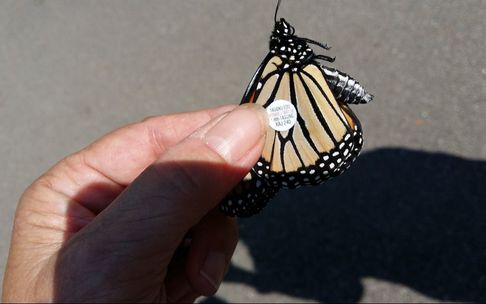
One of the monarchs that Karin Davidson-Taylor, Education Program Officer at Royal Botanical Gardens, tagged and released last year. Karin is a member of the Monarch Teacher Network of Canada, an organization of educators and nature enthusiasts who teach people about monarchs through hands-on training and experiences.
Species at Risk
Thanks to Fred and Norah Urquhart and their team of researchers we now know the wintering location of the monarch butterfly; however, this overwintering phenomenon might one day be something of the past, as these butterflies are now a species at risk. Even sadder is that the decline in monarch numbers is not specific to this species. Many other plants, animals, and insects in North America (and the world) are experiencing declining numbers due to the destruction of their habitats. There are several reasons why the monarch is faced with dwindling populations. Chip Taylor of Monarch Watch, a not-for-profit organization based out of the University of Kansas that helps track monarchs, states that a big problem lies with: our insane desire to make everything look like our front lawn and mow and use herbicides along all our roadsides- that has eliminated a lot of monarch habitat.[23]
Monarchs lay their eggs on milkweed and many factors have contributed to the elimination of this key piece in the monarch life cycle. For one thing, milkweed is considered a noxious weed in Canada.[24] Farmers and gardeners actively remove it from their properties. Changing farming practices in the United States’ Midwest have also resulted in a large decline of the plant, more specifically in the Corn Belt region where increased cultivation of genetically modified soybeans and corn has greatly impacted milkweed numbers. When these genetically modified crops are planted the fields are sprayed with large amounts of herbicides in order to wipe out other crops. More and more land is being used to grow corn in order to create ethanol, turning once fallow lands - perfect for monarch breeding into highly sprayed croplands.[25] Increased Mexican logging has also led to the destruction of the monarch's overwintering habitats.[26]
All three countries: Canada, the United States, and Mexico are working to ensure that proper conditions are met to make stable milkweed populations, and sufficient breeding grounds.[27] In 2014 the monarchs’ breeding area shrank by 44% from the previous year. “The result is the lowest since conservationists began tracking monarch winter populations…” said Omar Vidal, director of the World Wildlife Fund Mexico. He went on to state that, “if we don’t take immediate actions, we are very close to losing this migratory phenomenon.[28] In 1995 Canada and Mexico formed an agreement to provide more research and better monitoring of the species.[29]
What can you do to help?
One of the easiest ways to help monarchs is to plant milkweed in your backyard. Please check with your local nursery that the plant has not been sprayed with pesticides. If it has, it will kill caterpillar populations. You could also plant nectar-producing plants in your yard, like salvia and mint. Lastly, donate or volunteer with organizations that are working hard to help our little friends. Here are a few good places to start: Monarch Teacher Network of Canada | Journey North | Mission Monarch | Monarch Watch | Save our Monarchs | The Monarch Joint Venture | Live Monarch | The Monarch Foundation | World Wildlife Fund Canada | Monarch Larva Monitoring Project |
Acknowledgements
I would like to thank Karin Davidson-Taylor, Education Program Officer at Royal Botanical Gardens for loaning me her personal book on monarchs, providing me with names of organizations, and teaching me about these wonderful insects. Also, thank you too Bill Kilburn from the Back to Nature Network for teaching me to stop and appreciate the natural world, reminding me of how complex and beautiful it really is. And also a big thank you to ProQuest for making digital copies of the Globe and Mail accessible and easy to search for. Last but not least, thanks to Adam Montgomery for proof-reading this post!
[1]Unknown author. A Midsummer Carnival of Butterflies, The Globe, September 15, 1906
[2]Unknown author. The Trek of the Butterflies, The Globe, September 30, 1916 [3]Unknown author. The Monarch Butterfly, The Globe, August 25, 1923 [4]Carson, Susan. The Lost Kingdom of the Monarchs, The Globe and Mail, October 2, 1976 [5]William, Shannon. The Monarch Man Keeps Searching, The Globe and Mail, July 30, 1976 [6]Carson, Susan. The Lost Kingdom of the Monarchs [7]William, Shannon. The Monarch Man Keeps Searching [8]Carson, Susan. The Lost Kingdom of the Monarchs [9]Ibid. [10]Ibid. [11]Ibid. [12]William, Shannon. The Monarch Man Keeps Searching [13]Ibid. [14]Unknown author. Migration Traced: Monarchs Gather for Journey South, The Globe and Mail, September 11, 1973. [15]Unknown author. Tiny Tags Help Trace Butterfly Migrations, The Globe and Mail, August 16, 1957 [16]William, Shannon. The Monarch Man Keeps Searching [17]Ibid. [18]Carson, Susan. The Lost Kingdom of the Monarchs [19]William, Shannon. The Monarch Man Keeps Searching [20]Carson, Susan. The Lost Kingdom of the Monarchs [21]Ibid. [22]Ibid. [23]Hammer, Kate. Flying Alongside a Royal Migration, The Globe and Mail, October 8, 2012 [24]Matas, Robert. "Canada, Mexico to Nurture Butterflies," The Globe and Mail, October 18, 1995. [25]Boychuk, Evelyn. Monarchs' Decline Driven by Milkweed Loss, The Globe and Mail, June 5, 2014 [26]Semeniuk, Ivan. "Monarch Butterfly Numbers Dwindle to Lowest Ever," The Globe and Mail, January 30, 2014. [27]Mittelstaedt, Martin. "Monarch butterflies can’t Get by on a Wing and a Prayer," The Globe and Mail, July 1, 2008. [28]Semeniuk, Ivan. "Monarch Butterfly Numbers Dwindle to Lowest Ever," [29]Matas, Robert. "Canada, Mexico to Nurture Butterflies," Our gardens and our environment deaden or brighten our souls.[1] -Annual report of the Horticultural Societies, Department of Agriculture, 1908. In 1955 Elsinor Burns, member of the Canadian National Institute for the Blind (CNIB) building committee and an executive member of the Garden Club of Toronto (GCT), had the idea of creating a fragrant garden outside of CNIB's headquarters to be enjoyed by the blind. She was joined by Lois Wilson, Gardening Editor for Chatelaine Magazine, who was also a member of the GCT, in spearheading the project. The club voted to raise $400 ($3,684.51 in 2017) for the project. Astonishingly, they raised $21,000 ($193,436.82 in 2017). A committee was created consisting of five GCT members, as well as five blind members of the CNIB, in order to create a beautiful, but equally important, functional garden that could be enjoyed by those who were sight impaired. The garden, located on Bayview Avenue, was "set on a gently rising hilltop in the geographical centre of Toronto, circled by the buildings of the National and Ontario headquarters of the Institute, it [was] an acre of gardens planted with fragrant flowers, scented herbs, shrubs and trees, blooming from earliest spring till frost."[2]  Image courtesy of the Centre for Canadian Historical Horticultural Studies at the Royal Botanical Gardens. Image courtesy of the Centre for Canadian Historical Horticultural Studies at the Royal Botanical Gardens. More than one hundred types of plants made up the plant list. "Most [were] fragrant by wafting their perfume far on the wind as lilacs and apple blossoms do, or by having their leaves bruised as with mint and lavender. Others [were] chosen for their sweet, close-up scent like carnations and sweet William."[3] Several plants were included because of their interesting tactile qualities like, woolly rabbits' ear and furry old man's beard. Pine trees were chosen for making a "lovely sound in the wind," while other plants were picked because they encouraged the nesting of songbirds.[4] "Whispering aspens rustle[d] in the wind; petunias and geraniums abound in the raised beds, their petals ready for the seeing hands of the sightless; such plants as artemisia feel like long-piled rugs; and the scent of thyme, mint and other herbs linger[ed] in the air."[5] Many people helped put this project together. Scientists came to analyze the soil. Professors of botany suggested fragrant plants to include in the garden space. Landscape architects worked extensively with the blind to ensure that the garden was laid out in a manner that could be fully enjoyed by the latter. More than an acre of the garden was framed around its outside edge by a rectangular exercise walk that was 700' wide. The asphalt surface of the walkway changed to wood slats as it approached the corners as a way of indicating to the walker that it was time to turn around.[6] In 1957 a blind resident of the CNIB stated, "all we residents at Clarkwood [residence of CNIB] take a daily walk around the garden just to see what has happened there each day. The blind need something to hang onto physically, such as a cane or an arm of a friend, and we have found the garden something to hang on to in a different sense."[7] Completed in 1956, the garden was enjoyed by the nearly one thousand blind and partially sighted people living, working or visiting the centre every day. It was the first garden of its kind built in Canada, and one that came to be recognized throughout the rest of the world. The GCT copied their plant lists for others who were interested in creating a garden for the blind.Their records indicate that they sent their lists to Australia, South Africa, Chile, Brazil, the United States, and other Canadian cities. Art Drysdale, a well-known Canadian horticulturist, mentioned that in 1974 the park director in Budapest, Hungary showed him their fragrant garden . Their department had contacted people in Toronto because "the best such garden is there." He also mentioned a similar experience occurring in New Zealand in 1983.[8] In 2002, the CNIB began construction on the property, which resulted in part of the rose garden being removed. Then, sadly, in 2004 the rest of the garden disappeared as "the balance of the land [was] developed into condos and upscale townhouses."[9] There were talks about making a smaller fragrant garden. The author found no other records indicating what transpired of the project. [1]Department of Agriculture, Third Annual Report of the Horticultural Societies of Ontario for the Year 1908, (Toronto: Ontario Department of Agriculture, 1909), 10.
[2]Lois Wilson, The Story of the Fragrant Garden (Toronto: Toronto Auxiliary, c. 1980s) [3]Ibid. [4]Ibid. [5]Fragrant Garden is Gift of Club to the Sightless, The Globe and Mail , September 7, 1956 [6]The Fragrant Garden pamphlet, 1955 [7] New Garden for Blind Appreciated, The Globe and Mail, January 25, 1957 [8]Art Drysdale. "Canadian Horticultural Personalities" http://www.artdrysdale.com/loiswilson.html (accessed November 9, 2017) [9] Ibid. Humans have always been fascinated by death. In the western world, this fascination has taken many curious forms, especially in the past few centuries. In her thought-provoking book, Relics of Death in Victorian Literature and Culture, Deborah Lutz states: "The dead body's materiality held a certain enchantment for Victorians, a charmed ability to originate narrative. Bodies left behind traces of themselves, shreds that could then become material for memories. Such vestiges might be found in objects the body had touched as it advanced through existence: clothing worn, letters written, utensils handled... More concretely, the body itself or its parts functioned for the Victorians as mementos[.]"[1] One such body part was hair. There is a long history in European cultures of preserving hair as a keepsake of lost love, friendship, or affection, stretching back at least to the time of Charlemagne in the ninth century. This practice persisted throughout the centuries, reaching its peak during the second half of the 1800s. As just one example, Queen Victoria created at least eight pieces of jewelry with her late husband, Prince Albert's hair.[2] Hair mementos most often took the form of jewelry or wreaths, in part because hair is the most ornamental, the easiest to alter, and is "the relic that has the strongest relationship to moments of the past."[3] This post focuses on the latter, hair wreaths, during the Victorian period. Hair wreaths acted as "repositories" for stories about the past, capturing the narrative of the body and displaying it for reading by the living.[4] Victorian culture was heavily steeped in Romanticism and individualism, which gave death mementos a meaningful and tangible connection to a particular person. With hair wreaths, as with other death mementos, one need never feel that a loved - your loved one - was entirely gone; a piece of that person lived on not just in mind, but in the physical world as well. Mementos thus served a dual role of being both a link to times of happiness and togetherness, and also a small, physical piece of the deceased individual that could be carried until one's own death. This mental and physical connection, among other things, provided a sense of permanence for a society that was constantly reminded of the human body's fragility by accident and disease. Despite being separated by an ocean, middle-class Canadian society was heavily influenced by Victorian culture, particularly when it came to death.[5] The many surviving hair wreaths preserved by local museums across Canada are a testament to the way that Canadians likewise used death mementos as a means to preserve the memory of loved ones. Grimsby Museum, in the Niagara Region, has in its collection a hair wreath from the Merritt family, one of the region's earliest settler families with roots stretching back to Loyalist times.[6] Not much is known about the wreath, save for a few details in the museum's catalogue. We know that the artifact was created in 1870 with blonde and brown hair from at least two members of the family. The hair was shaped into flowers and leaves with the use of wire, and someone unfamiliar with death wreaths viewing it for the first time could be forgiven for thinking it was used for some sort of celebratory purpose rather than as a death keepsake. Aside from these few facts, we are left with many unanswered questions. Where was this wreath kept in the family home? On prominent display, or hidden away for the occasional viewing, when a sight, sound, or smell made family members long for a tangible link to better times? Was it created to forever link two separated lovers, or as a means of family remembrance? Did they live a long and happy life, or were they one of the many young victims of hardship and disease that permeated nineteenth century life? Although we will never know the answers to these questions, studying death mementos nonetheless brings the nineteenth century and its attitudes towards death into focus and causes us to ponder over our own views and ways of commemorating those we have lost. The recent rise of photography, both print and, more recently, digital, has altered the ways in which we interact with and commemorate death. Mourning photography does not capture the tactile feel of the body; it essentially distances us from the corporeal, tangible person we are mourning.[7] Photos undoubtedly provide some form of consolation, but with photos, especially digital images, the person is out there, somewhere in the sea of our mind, while physical mementos give us the sense that the person is also still right here, in both our mind and our hand. Some may find Victorians' physical preservation of pieces of loved ones odd or even creepy, but in our increasingly digital age we stand to lose some sense of the physical that connects us with our inevitable mortality. The recent return of storefront space for physical books at the expense of digital reading devices, like the Kobo or Kindle, speaks to a continuing and perhaps universal need for tangible experiences. Just as books tell the story of past societies or fictional worlds, death mementos told the story of lives lived and the human experience as encapsulated by the one universally human event: death. They were, in their own way, the books that told of friendship, family, love, and ultimately, separation by the forces that still mystify us today. This post was co-written with Adam Montgomery. Acknowledgements Thank you to the Grimsby Museum for providing information about the Merritt family hair wreath. And, a special thank you to Julie Bushey for assisting me with photographing it. [1]Deborah Lutz, Relics of Death in Victorian Literature and Culture (Cambridge: Cambridge University Press, 2015),1.
[2]Ibid., 132. [3]Ibid., 134. [4]Ibid., 2. [5]Susan Smart, A Better Place: Death and Burlial in Ninteenth-Century Ontario (Toronto: Dundurn Press, 2011), chapter 3. [6]Dorothy Turcotte, People & Places from Grimsby's Past (Grimsby: Grimsby Historical Society, 1995), 150. At the turn of the twentieth century, numerous Canadians were concerned with civic beautification. A beautification movement erupted out of a reforming zeal initiated by prohibitionists, suffragettes and evangelists. Gardening became a quest for "good citizenship, improvement, social remedy, morality, material progress." [1] Horticultural duty, gardeners believed, would "purify home life...promote a greater love of home...and thereby lay the foundation of a patriotism worthy of the land we possess." [2] Soon after, that patriotism was tested when the First World War erupted. Citizens all throughout Canada began growing crops for wartime food production; horticultural Societies urged their members to plant backyard gardens. John Webber, head of the Hamilton Horticultural Society, spoke of the desirability of using all backyard space to grow vegetables, something he viewed as a patriotic duty. [3] Vacant Lot Associations were organized with the mission of getting the unemployed, as well as returned soldiers, to garden on vacant plots of land. Many of these gardens produced vegetables for the war effort. In 1917, Toronto had 798 vacant lots in cultivation, with produce valued at $40,000 (over $650,000 in 2017). [4] The war resulted in an exodus of male farmers and factory workers leaving for the front. Most older women filled in for them by working in munition plants. This exodus also left space for young women to spend their summers working on farms to aid the war effort. Known as Farmerettes, these women planted, tended and harvested crops. At first, they were met with skepticism; many were deemed "city girls" who would not provide much help. This assumption proved wrong, as numerous county and city girls alike rose to the task, providing an immeasurable contribution to wartime food production.[5] In Niagara, the Young Women's Christian Association brought women enrolled in universities and women's colleges to harvest fruit. They came from Montreal, Quebec City, and other Ontario communities. With the women's help, fruit was harvested with minimal loss. [6] There were a plethora of initiatives that showed the desire of everyday citizens to pull together to aid the war effort. For some, it was as simple as planting crops in a backyard garden; for others, it meant dedicating more substantial amounts of time to farm labour. However big or small the contribution, Canadians worked hard to feed both Canadian and allied soldiers. Acknowledgements Thank you to Julie Bushey, Collection Management Assistant of the Grimsby Museum for selecting, scanning and sending the above images. [1] Edwinna von Baeyer. Rhetoric and Roses: a History of Canadian Gardening (Markham: Fitzhenry & Whiteside, 1984), 3.
[2] Canadian Horticulturist, May 1904, 190. [3]Hamilton Horticultural Society Centennial Year Book and Garden Guide, 1850-1950, 12. [4] Philip F. Dodds and H.E. Markle, The Story of Ontario Horticultural Societies, 1854-1973 (Picton: Picton Gazette Publishing Company, 1973), 58. [5] St. Catharines Museum. Niagara's Farmerettes. St. Catharines' Blog https://stcatharinesmuseumblog.com/2016/10/18/niagaras-farmerettes/ (accessed September 10, 2017) [6]Community Memories. Grown in the Garden of Canada: The History of the Fruit Industry in Grimsby, Ontario, http://www.virtualmuseum.ca/sgc-cms/histoires_de_chez_nous-community_memories/pm_v2.php?id=exhibit_home&fl=0&lg=English&ex=00000438 (accessed September 10, 2017) Like during the First World War, many Canadians worked to produce food for the war effort during the Second World War. There were several food production initiatives throughout the war years; this post focuses on the students engaged in Farm Service. Male and female students worked on farms in the summer as a means of gaining course credit while also assisting with food production. Not only did this program help provide food for soldiers fighting overseas, it also instilled democratic values in Canadian youth. The 1941 Labour Gazette stated that: Some teachers have questioned the advisability of allowing students to leave school so early in the year because of the loss in education. On the other hand this plan may be a gain for education if there is taken into consideration the value of training in Democracy involved in the self-discipline of farm work, the understanding of urban-rural relationships secured, the responsibility of the individual to the community which is developed in rendering a fair day's work for a fair day's pay, the co-ordination of body, mind and spirit in serving the social purpose of food production, and the realization of the value of time, work and money. [1] Others, like the Chairman of the Toronto Board of Education, echoed this sentiment when he stated, "in these troubled days, may the boys and girls in our own schools learn the lessons of true patriotism and thus prepare themselves to champion loyalty, fair play and truth."[2] A 1941 government issued handbook (shown below) states that, "this challenge [of Farm Service] is a call to you to take your place in this line of defence and man it so effectively that Great Britain and her allies- fighting for life, liberty and freedom, ours as much as theirs, need never fear a shortage of food." [3] In the war's closing years, approximately 35,000 Ontario students were enrolled in Farm Service and stationed on sixty farms across the province. This number included members of Canadian Girls in Training, whose summer program was combined with the Farmerettes. More young women than men were engaged in this service, which was partly attributable to the men fighting on the front, as well as men's tendencies to seek more lucrative summer employment elsewhere in the expanding wartime economy.[4] Below are several pages of The Handbook for Students Registering for Farm Service in Collegiate Institutes, High, Vocational and Continuation Schools of Ontario Under Dominion Provincial Training, a pamphlet issued in 1941 by the Minister of Education in Co-operation with the Minister of Agriculture and the Minister of Labour. Image reproductions are courtesy of the Royal Botanical Gardens's Canadian Centre for Historical Horticultural Studies. [1]Wartime Farm Labour Program In Ontario, Labour Gazette, April 1943, http://socserv.mcmaster.ca/oldlabourstudies/onlinelearning/article.php?id=856 (accessed September 14, 2017)
[2] Empire Days in the Schools of Ontario, May 23, 1940 quoted in Charles M. Johnston, "The Children's War: The Mobilization of Ontario Youth During the Second World War" In Patterns of the Past: Interpreting Ontario's History edited by Laurel Sefton MacDowell, et al. (Dundurn Press, 1996), 357. [3]The Handbook for Students Registering for Farm Service in Collegiate Institutes, High, Vocational and Continuation Schools of Ontario Under Dominion Provincial Training, 1941, item found at the Royal Botanical Garden's Canadian Centre for Historical Horticultural Studies [4] Jeff Keshen, "Revisiting Canada's Civilian Women During World War II" Histoire Sociale/ Social History vol. 30, no. 60, 1997, 364-365. In 1976, Grimsby resident and Recreation and Park Department employee Lawson Allez found six copper kettles, seven french felling axes, a conch shell, two pendants made from a conch, a human skull, and bone fragments in Grimsby's Centennial Park. He knew that he had found a ritual burial ground. Immediately, he contacted Florence Martin, Curator of the Stone Shop Museum in Grimsby, who then advised him to call the Royal Ontario Museum. The next day a team of archaeologists led by Walter Kenyon arrived on site. The dig was a six month project, and at its completion, 300 remains of the Neutral people were found in 63 graves, along with hundreds of artifacts.[1] The largest grave, Grave 62, contained the remains of 104 people (46 adult males, 32 adult women, and 26 children), as well as numerous items[2] According to Kenyon, each grave "reveal[ed] something different in the pattern and manner of burial."[3] Archaeological findings and mentions in writings from early French Missionaries are the only things known about the Neutral People.[4] They once occupied the land between Lake Ontario and Lake Erie. As an agricultural society, they grew corn, beans, squash and tobacco. During the Iroquois and Huron wars, the Neutral people sold flint arrowheads and spear points to both sides (hence the name Neutral). Experts in the field speculated that once the Iroquois beat the Hurons, they turned on the Neutrals, defeating them and assimilating those left into their nation.[5] The earliest account of the Neutral people was in 1615 when Samuel de Champlain sent Missionary Etienne Brulé to the Susquehanna River. Brulé's route for this mission took him through Neutral territory, but beyond this fact, there is no other information recorded. Several years later Father Joseph de la Roche Daillon created the first detailed written account. He traveled into Neutral territory with two French companions, Grenole and Lavallée. While there, he was adopted into the household of Souharisson, a powerful chief. Daillon's 1634 description of his adopted father was as follows: This man is the chief of the greatest credit and authority that has ever been in all these nations; for he is not only chief of this village, but of all those of the nation, composed of twenty-eight towns, cities and villages, made like those in the Huron country, and also of several little hamlets of seven or eight cabins, built in various parts convenient for fishing, hunting, or agriculture.[6] In his writings, Daillon also spoke of the Neutral territory stating that it was "incomparably larger, more beautiful, and better than any other of these countries," and that this idyllic setting made him the "happiest man in the world."[7] According to Daillon's accounts, the Huron tribe was distressed by the Neutral's relationship with the French. He explained that they wanted to suppress Neutral trade with Europeans, "so that they might have the trade with these nations themselves exclusively, which is very profitable to them."[8] As a result, the Hurons spread rumours about Daillon, calling him a magician, and if he was not killed immediately, "he would taint the air of their country, he would poison many of the people, and he would set fire to the villages."[9] Huron descriptions of Daillon resulted in the Neutrals breaking contact with the French and other Europeans. European artifacts were found within the Neutral burial ground. These items would have been acquired by the Huron and Iroquois, rather than from direct trade. A few years after Daillon's visit, various epidemics swept through the area, greatly affecting the Neutral people. Perhaps their suspicion of Daillon and other Europeans did not stem from Huron rumours, but instead from the threats of European contact. This account foreshadowed the negative consequences of European contact for Indigenous peoples in subsequent decades. Sadly, after facing disease, famine and war, it is believed that the Neutral people were defeated by the Iroquois in 1650. 326 years later, Walter Kenyon and his ROM staff "[added] a significant new chapter in the history of the Neutral Indians."[10] Although the dig helped to uncover more information about the Neutrals, several Indigenous groups in the area were upset about the removal of bodies from the sacred burial ground. Larry Johnston, Treaty Research Worker with the Union of Ontario Indians, stated, "we feel highly offended and insulted by digs such as these which are going on throughout the province with no input or consultations from Native people."[11] At that time, there were no measures stipulating that Indigenous peoples' input was required in archaeological digs. In fact, Aboriginal Engagement was not introduced into the Ontario Standard and Guidelines of Archaeologists until 2011.[12] The Neutral findings added richness to the history of Grimsby, Ontario and the country; however, the methods utilized by Kenyon and his team unfortunately disregarded Indigenous peoples' cultural beliefs, and showcased the prejudices the archaeological field and greater society had towards Indigenous people. Since that time there have been many successful digs involving Indigenous communities. This collaborative approach offers a step in the right direction, contributing to reconciliation efforts. Acknowledgements This blog post was made possible with the help from the staff of the Grimsby museum. Julie Bushey, the museum's Collection Management Assistant, kindly pulled together resources on the topic to assist with my research. For those interested in learning more about the Neutral People and the archaeological dig, visit the Grimsby Museum. Further Reading Walter Kenyon also conducted an archaeological dig in the Rainy River District where several remains were found of the Blackduck and Laurel people. To learn more about this, visit my blog post Manitou Mounds of Northwestern Ontatio. Click here to learn more about Engaging Aboriginal Communities in Archaeology (Ontario, 2011) [1] Dorothy Turcotte, Gleanings From Grimsby (Grimsby: Grimsby Historical Society, 2007), 80-81.
[2] Walter Kenyon. The Grimsby Site: A Historic Neutral Cemetery (Toronto: Royal Ontario Museum, 1982), 193-205. [3] Newspaper article clipping, unknown source, 2017.43.5, Grimsby Museum. [4] Walter Kenyon, The Grimsby Site: A Historic Neutral Cemetery, 1-4. [5] Greed Was Fatal Vice for The Neutrals, The Spectator, October 30, 1976. Record 2017.43.6, Grimsby Museum. [6]Walter Kenyon, The Grimsby Site: A Historic Neutral Cemetery, 1. [7]Ibid., 2. [8] Ibid., 2. [9] Ibid., 2. [10]Indians are Insulted and Offended by Digging, newspaper clipping, unknown source, 2017.43.6, The Grimsby Museum. [11] Ibid. [12]Shared Value Solutions. "Archaeology and Indigenous Rights and Interests." http://info.sharedvaluesolutions.com/blog/archaeology-and-indigenous-rights-and-interests (accessed July 25, 2017) On July 2, 1950 on Steep Rock Lake, north of the small mining town of Atikokan, an isolated community in Northwestern Ontario, Gordon Edwards and his wife were fishing. Suddenly they felt the air vibrate. Their first thought was that they were experiencing the effects of a mining blast- a common occurrence at the time as Steep Rock Iron Mines and Caland Mine were both operational. Gordon climbed up a rock face to peek over the bay and get a closer look. Peering through a space in the rock he "could see a large shiny object resting on the water in the curve of the far shoreline..." His wife climbed up to join him and "it was still there. It looked like two saucers stuck together, one upside down on top of the other. Round, black-edged ports appeared to be about four feet apart around the edge." Even more surprising, "the top had what looked like hatch covers open, and moving around over its surface were about ten queer looking little figures." These figures "moved like an automation, and did not turn around- that is right around: they just changed the direction of their feet." After a few moments, the spacecraft lifted itself into the air. A flash of yellow, red and blue lights emanated from it, and then, without warning, it vanished into thin air. Terrified by what they saw, Edwards and his wife vowed never to return to the site. But Gordon broke his promise. A few days later he went back to the site with a friend under the pretext of fishing, so as not to alarm their wives. This time, he brought a camera. On their first visit Edwards and his friend saw nothing, but on the third evening at Sawmill Bay on Steep Rock Lake they came into contact with the saucer. Edwards recounted: It all happened in split seconds. There was the "Saucer" in the same spot. I swung the boat into the wind, my friend made a dive for his camera, and I for mine, while trying to hold the boat into the wind. My hand was so stiff from the cold and holding the steering control that I couldn't even feel the camera. My friend was trying to stand up, and in the excitement hold on while the boat bobbed up and down. The result was neither of us had a chance of a picture. Edwards figured that the "little beings" must have heard them clumsily grabbing for their cameras because they started to disappear into the craft's hatches. "There was a terrific high-pitched whiz, almost a blast, and [the spacecraft] was gone." The above story and quotations are taken from the September and October 1950 edition of the Steep Rock Echo, a monthly periodical issued to employees of Steep Rock Iron Mines. (For a full rendition of the sighting please view the Steep Rock Echo pages found at the bottom of this blog post.) The sighting received a mix reaction from the community, with one letter to the editor sarcastically asking, "are you sure it was tea your correspondent was drinking, and not something stronger?" Nevertheless, media interested was piqued, and the account was picked up by the Port Arthur News Chronical. One woman felt that the Steep Rock Sighting was a wonderful story, and said that her children enjoyed it very much. In contrast, another woman was reportedly scared for days after reading the story. B.J. Eyton, a Chief Chemist at Steep Rock Iron Mines, claimed that after the Chronical story was released many other Atikokan men began reporting sightings of unidentified crafts. Some saw "what appeared to be very small manlike figures on the craft, which fled at their approach." Eyton also stated that Gordon and his wife's account was the most detailed of the stories, and that he believed their account because they were "well known to him." Although the sighting made quite a splash in Northwestern Ontario, it was Frank Edwards (no relation to Gordon), a leading American broadcast journalist and "flying saucer" enthusiast, who first brought mass attention to the Steep Rock Sighting in his 1966 book, Flying Saucers - Serious Business. Edwards became one of the most recognized American broadcasters of the era through his numerous publications of strange occurrences, including Strangest of All (1956), Stranger than Science (1959), Strange People (1962), and Strange World (1964). The Steep Rock Sighting fit perfectly into the mould of stories he liked to tell, and his recounting of it helped put the sighting on UFO researchers' map all the way up to the present day. Unfortunately for UFO enthusiasts and researchers, the Steep Rock Sighting turned out to be an elaborate hoax. As was later revealed, Gordon wrote the story as a means of entertaining his colleagues and to "ridicule newspaper accounts that described 'little green men'- accounts popularized by Frank Edwards." In 1974, UFO researcher Robert T. Badgley wrote the President of Steep Rock Iron Mines to inquire about the sighting and get at the full truth. He received the response that "the story was entirely fictitious and written solely for the amusement of our somewhat isolated community." But by the time of Badgley's 1974 inquiry, the Steep Rock Sighting had already taken on a life of its own. After Edwards's 1966 book, scientist and UFO researcher Jacques Vallee repeated the story in his own 1969 work, Passport to Magonia, a popular book that is still considered part of the UFO literature canon. Today, it might seem easy to ridicule those who believed the sighting actually occurred, especially since it was revealed that Gordon Edwards wrote the story as a prank. But the sighting's original, purported authenticity must be placed in its historical context. The Cold War was in full swing and the space age was heating up. As just one example, in the same Steep Rock Echo issue which reported the sighting, one headline read "First Rocket Trip to Moon Planned." North Americans were looking to the skies and wondering, fantasizing about where humans would be living in the next decades and century. A plethora of science fiction movies (of varying quality) over the 1950s and 1960s also helped to stimulate already fertile imaginations. The Steep Rock sighting also occurred only three years after American pilot Kenneth Arnold's famous claim in June 1947 that he saw several UFOs near Mount Rainier, in Washington state (the first "modern" UFO sighting), and the infamous Roswell UFO sighting only a few weeks later. In this context, it is easier to understand why the Steep Rock Sighting was taken at face value by UFO enthusiasts and some members of the public. Almost seventy years later, very few people in Atikokan seem to remember the Steep Rock hoax, even those who were alive in 1950 when it occurred. But its legacy lives on in various websites and books, some of which still present the sighting as a factual occurrence rather than the hoax it turned out to be. For UFO researchers and enthusiasts, it has all the makings of a great sighting: a landed UFO, coloured lights, vibrating air, and strange little aliens. Perhaps that is why the story took on a life of its own, and why it has such longevity. Certainly some peoples' desire to believe the story must account for part of it. What can be said for certain is that when the story is distilled down to its core, the Steep Rock Sighting provides a fun and humorous example of a small town man committing a big time hoax. This blog post was co-written with Adam Montgomery. [1] Steep Rock Echo, September and October 1950. Atikokan Centennial Museum.
[2] John Robert Colombo. UFOs Over Canada: Personal Accounts of Sightings and Close Encounters (Willowdale: Hounslow Press, 1992) The Women's Institute (WI) was founded by Adelaide Hunter Hoodless on February 19, 1897 in Stoney Creek, Ontario. However, the story really began in 1889, when Adelaide's fourteen month old son, John Harold, passed away from "summer complaint," an intestinal ailment caused by drinking impure milk. Adelaide was shocked by her own "ignorance of domestic hygiene" and "realized that if she, as a careful parent and an educated person, was ignorant of basic domestic science knowledge, then there must be thousands more women like her."[1] After her son's death she devoted herself to promoting domestic science education. She believed that "the educational system in force in Ontario at the time to be absolutely wrong. She did not approve, at all, of educating boys and girls along the same lines, when their life work was so vastly different."[2] After several attempts at realizing her vision, including the creation of a cooking school in Hamilton and promoting schools of domestic science in Guelph, the Women's Institute was finally realized.[3] The WI was created to support women living in rural communities. In one meeting, Hoodless explained that "women's work, homecraft and mothercraft, was much more important than men's since it dealt with the home and the care of the loved ones who dwelt therein."[4] With these powerful ideas as its pillar, the Women's Institute became the largest international women's organization ever created.[5] After its creation in Stoney Creek, many other places followed suit, with more than 2000 branches springing up in communities all across Ontario.[6] The Atikokan Branch The Atikokan branch was formed on April 5, 1922, with an initial membership of nineteen women. By the end of its first year this number grew to thirty one. The Atikokan Branch of the WI was integral to the community's development. As this community was (and still is) isolated, the WI was indispensable because it offered many services to the community that were otherwise not available. For instance, the WI sidewalk committee was instrumental in repairing roads and laying cinder sidewalks.[7] Below is an Atikokan Centennial Museum label that shows other positive additions the WI made to the town. The Federated Women's Institutes of Ontario (FWIO) website offers a PDF listing all of the Women's Institute Branches- Past and Present. This list states that the Atikokan branch was operational until 1979. Tweedsmuir History Book In the 1920s, WI members began collecting and recording community histories. In 1925, the Committee for Historical Research and Current Events was formed and suggested that "more time be given to the study of local history in the hopes of gaining greater insight into the lives and thoughts of our ancestors."[8] By the mid 1930s Lady Tweedsmuir, wife of Governor General Lord Tweedsmuir, took an interest in the WI. She suggested that the WI of Ontario follow in the footsteps of its English counterpart and keep detailed history books. In 1945, a campaign was launched to commemorate the 50th anniversary of the WI. As a way of celebrating, branches were encouraged to start collecting their local histories. In 1947, these books were officially named "The Tweedsmuir Village History Books," as a tribute to Lord Tweedsmuir, who passed away a few years earlier. The Federated FWIO website states that "a decade later the Provincial Board reported that 989 Branches across the province were compiling Tweedsmuir History Books."[9] The Atikokan Branch began creating its book in 1951. Mrs. Phil Rawn was credited with compiling a lot of the information. J. Munn was responsible for most of the assembly. Mrs. Tom Rawn and D.S. McCuaig provided the bulk of the information recorded about Atikokan's early life. Mrs. Rooney and other community members contributed photographs. Organizations also aided in the book's creation. To offer some examples, Steep Rock Iron Mines provided a dearth of information "as they [were] closely associated with the growth of Atikokan."[10] Numerous town churches and organizations also provided information to include in the book's pages. Lady Tweedsmuir's foreword above states: I am so glad to hear that the Women's Institutes of Ontario are going to compile village history books. Events move very fast nowadays, houses are pulled down, new roads are made, and the aspect of the countryside changes completely sometimes in a short time. Lady Tweedsmuir's words encouraged WI members to become local historians. Not only did they collect and preserve newspaper articles, photographs, institutional histories, literary prose and art, they also used oral histories as a means to record the past. As such, these books have become a window into the past, giving details about rural Ontario life; preserved for present and future generations to enjoy. And, true to Lady Tweedsmuir's statement, these books have become an invaluable resource for historians. As an Atikokan Centennial Museum employee, I can attest that I have referenced the local Tweedsmuir book several times to locate historical information. Every so often I flip through the book to find names of community members that may have not been recorded in the museum's accession records. Because of this resource, many people once labeled as "unidentified" have been given names in the museum's records. The FWIO is still in existence today, with many active branches throughout Ontario. They "envision an Ontario where women work together for safe, healthy families, communities and pursue an enriched and balanced lifestyle."[11] Preserving history is still an important activity for the group. In 2010 an agreement was made with the Ontario Genealogical Society and the FWIO to digitize the Tweedsmuir books. The FWIO website states that "this is great news to the WI. Besides having the original documents remain locally, the whole world will be able to access the Tweedsmuirs online to conduct family research, learn about our rich communities, and discover the wonderful work that has been created by WI members."[12] The FWIO also has digital collections available, including ten digitized versions of Tweedsmuir Community History Books. Interested parties can also visit the Erland Lee Museum, the birthplace of the WI in Stoney Creek, located just east of Hamilton. This structure stands proudly on top of the beautiful Niagara escarpment. For those interested in the Atikokan's Tweedsmuir History Book please visit the Atikokan Centennial Museum. There is also a copy of the book at the Atikokan Public Library. [1] Linda M. Ambrose. For Home and Country: The Centennial History of the Women's Institutes in Ontario (Boston Mills Press, 1996), 17.
[2] Ibid., 19. [3] Ibid., 19. [4] Ibid., 21. [5] Ibid., 22. [6] Federated Women's Institutes of Ontario. "Branches: Past & Present, http://www.fwio.on.ca/branches-past-present (accessed March 26, 2017) [7] Allan A. Viita. A History of Atikokan: 75th Anniversary Edition, 68. [8] Federated Women's Institutes of Ontario. "Tweedsmuir History Books," http://www.fwio.on.ca/tweedsmuir-history-books (accessed March 26, 2017) [9] Ibid. [10] Atikokan Branch of the Women's Institute, Tweedsmuir History Book, Atikokan Centennial Museum. [11] Federated Women's Institutes of Ontario, "About FWIO,"http://www.fwio.on.ca/about-fwio" [12]Federated Women's Institutes of Ontario. "Tweedsmuir History Books," http://www.fwio.on.ca/tweedsmuir-history-books (accessed March 26, 2017) “At the going down of the sun and in the morning, We will remember them.”[1] -War Memorial in Drummondville, Quebec “We are at any moment the sum of all our moments, the product of all our experiences” [2]. - A.A. Mendilow During times of hardship, people collectively attempt to comprehend and transcend tragedies by creating commemoration sites. Canada has numerous war memorials, so many in fact that Pierre Berton commented that Canada has more Great War memorials than any other nation.[3] This post explores the dichotomy between the ways in which local communities and government officials have chosen to commemorate dead soldiers after the Great War. Both camps worked tirelessly to build monuments that could be used as vehicles to fulfill different aims. Local communities took a bottom-up approach, building monuments as public places of mourning. Government officials, on the other hand, erected memorials as a means for building upon the nation-building narrative. These differing objectives demonstrate that war memorials are, among other things, dynamic cultural symbols. Simply put, memorials mean different things to different people. This post also examines the meanings that local communities as well as government bodies gave to these cultural relics. Lastly, it then considers how those multiple meanings highlight a more encompassing vision of war memorials in Canada. Places Where People Could Mourn Throughout the duration of the Great War over six hundred thousand Canadian men and women aided in Canada’s war effort, with sixty thousand dying from war related injuries.[4] The shock of losing such a large number of men, as well as being visually reminded of the war when seeing thousands of visibly wounded veterans on Canadian streets, had a deep impact on society. For instance, in Ripley, Ontario two hundred and sixty men served, with thirty-three never returning home.[5] Such large numbers meant that most citizens were directly impacted by the loss in one way or another. Mayor Charles Simms captured this sentiment in November 1921 when he expressed to Victoria’s Daily Colonist that “there is scarcely a person in the throng before me who has not lost someone, son, brother, husband or father.”[6] This heartfelt statement starkly showcased the collective loss Canadians were experiencing. The need for communities to bereave and remember those who perished brought them together with the task of creating “fitting tokens of respect.” [7] Many citizens felt a sense of duty to “sacrifice in a noble cause,” which led many communities to form local memorial committees.[8] Shortly after the war ended, a fervor for building monuments swept across the country. One of many committees’ chief aims was to deconstruct the horrors of death by instilling new meaning, as “an abstraction, a collective sacrifice remote from individual extinction” to help justify the loss and make it psychologically bearable.[9] War memorial committees essentially satisfied the need for collective community expression. Communities needed to find a physical place to direct their collective trauma. Connecting memories and feelings with a physical space allowed locals to incorporate tragedy into its collective narrative. This approach to bereavement allowed community members to begin the healing process. In the article, “Sites of Hurtful Memory” Gabi Dolff-Bonekamper discussed what Sigmund Freud termed “working through.” This notion suggests a parallel between individual trauma therapy and collective work on traumatic events in history. Essentially, once a community has allowed the truth to be revealed, in this case, by public commemoration, healing seems achievable.[10] Thus, commemoration results in citizens feeling less socially isolated in their grief. This can be witnessed, for example, by the two thousand people that attended the unveiling of a war memorial in London, Ontario during 1925 celebrations.[11] Communities chose to erect memorials as a means for grounding their displaced sense of loss. Military and cultural historian Jay Winter echoed this sentiment by stating that war memorials are sacred places of ritual, rhetoric, as well as ceremonies of bereavement.[12] Fundamentally, they are places where people could mourn, and be seen mourning. Robert Shipley, author of To Mark our Place: A History of Canadian War Memorials, expressed similar views by arguing that war memorials offered people a place to “visibly express their sorrow." [13] Winter identified these actions as an exchange, where the living admitted a degree of indebtedness to those who died in service. This exchange still occurs at yearly Remembrance Day ceremonies. Thus, it is important to consider how ritual and ceremony play a crucial role in constructing war memorials’ meaning. Philosopher John Dewey expressed that: rite and ceremony as well as legend bound the living and the dead in a common partnership. They were esthetic but they were more than esthetic. The rites of mourning expressed more than grief… each of these communal modes of activity united the practical, the social, and the educative in an integral whole having esthetic form. [14] Memorials are viewed as aesthetic symbols where the individual experience of mourning becomes intertwined with the public, social realm of the community. In this way memorial sites were converted into social havens where members came together in ritual to comfort one another and share their experiences. Meanings inherently change over time and this is something that community members acknowledged. This change is largely due to the fact that cultural meanings are often altered with each new generation. That being said, community members felt that the lessons of the Great War were important and should be cemented in time and place in the form of a memorial. This act allowed future generations to reflect and learn from the past, something essential for identity formation. Thus, memorials work to bind present and future generations together through a collective remembering. Sir Edmund Walker captured this sentiment in 1918 when he stated: If we do not adequately remember those who served and erect a memorial that will cause the students for generations to come to realize that this was a great moment in the history of the university [of Toronto] then we shall be absolutely unworthy of the brothers and sons of the fallen in this war. [15] This statement not only united present and future University of Toronto students, but also acknowledges that the memorial would become a focal point of a collective remembrance shared by the community and nation alike. Similarly, in 1918 Dr. Sprott of Barrie, Ontario spoke of the importance of permanence when dealing with the placement of a memorial. He stated, “if we put this tablet in a building it may not be here 100 years from now. I think a statue would be more lasting.”[16] Memorials would then represent not only the values of the day that they were erected, but also reinforce those values for future generations. Memorials to Build a Nation The Great War was a nation-building experience and the government believed it needed to emphasize the sacrifice to legitimize the war experience itself. Politicians worked to create a “Myth of War Experience” as a means to displace the realities of war, refashioning it into a sacred experience.[17] This sacred experience, in turn, provided the nation with a new sense of religious feeling, which could be witnessed in the numerous religious iconographies on war memorials erected around the country. As historian George Mosse opined, “the cult of the fallen soldier became the centerpiece of the religion of nationalism after the war.”[18] The linking and use of religious feelings and nationalism led to committees like the Ontario Advisory Committee of War Memorials being created as a means of imposing control over local memorialization.[19] They aimed at memorializing the glory rather than the horrors of war, to instil national pride and justify the cause. These committees saw memorials as a means to “commemorate not just the soldier but the nation” and believed that local, amateur artists were not capable of executing this aim. Canadian war historian Jonathan Vance pointed out that viewing memorials from this aesthetic standpoint misses the point of their creation. He argued that memorials were intended to express the feelings of local communities and as such should be designed and installed by them.[20] Many communities created monuments which reflected the citizenry who resided there. For instance, in New Glasgow, Nova Scotia their statue took the form of a piper, giving a nod to their Gallic roots. Such statues demonstrated that monuments reflected regional and cultural traditions.[21] This is not to say that local memorials did not provide symbols of national pride, but rather that it was not necessarily their chief aim. In times of insecurity and rapid change, monuments acted as material sites that served as “rally points” for a shared common memory or identity. They were places where, commemorations were performed, collective memory was reinforced and national identity was constructed.[22] The creation of regulatory war memorial committees meant that there was control over the memorial’s messages, allowing memorials to be used as a means to unite the nation under one narrative. With this in mind, Frances Loring, convener of the War Memorial Committee of the Ontario Society of Artists, gave referrals to qualified sculptors, provided judges for design contests and assisted in choosing suitable sites for memorials to ensure “that the province did not become dotted with bad memorials.”[23] To an even larger extent, Sam Hughes, Minister of Militia and Defence during the Great War, proposed a standard, mass-produced memorial to be installed in communities, with the only difference being the inscription of the deceased soldiers names from that particular place. Thankfully this did not occur, but it was such ideas that showcased the differences in how governments and local communities viewed monuments. Closing the Gap: A Shared Authority The above sections demonstrate the complex, dynamic nature of Canadian war memorials and highlight the dichotomy between the ways communities and government officials viewed them. This final section aims at reconciling both spheres to create a more encompassing picture of war memorials in Canadian society. Both camps used war memorials as a means for reinforcing societal values. The government chose to build memorials to preserve notions of “British Liberty and Democracy.”[24] Communities likewise used memorials as a means for keeping traditions intact. It was Nietzsche who said that monumentalism is “a protest against the change of generations and against transitions.”[25] The Great War threatened traditional values, shaking both individual and collective understandings of community and place. Hence, memorials can be seen as mnemonic devices that expressed the values of the society they were placed in. Both sides, of course, differed on exactly what traditional values they were trying to uphold. Nevertheless, the similarity of their aims demonstrated the shared, ultimate purpose of preserving social norms and values while recognizing the immense upheaval and loss brought on by the Great War. In fact, scholar John Bodnar argued that public memory emerges from the intersection between the official (in this case government) and vernacular (community) cultural expressions.[26] He expressed that: public memory speaks primarily about the structure of power in society because that power is always in question in a world of polarities and contradictions and because cultural understanding is always grounded in the material structure of society itself. [27] Thus, memorials’ meanings are comprised of contested approaches that involve a struggle between advocates from both sides. The idea of contested meanings can be further understood by examining the meaning-making paradigm outlined by museum scholar Lois H. Silverman. Silverman discussed how meaning is constructed through multiple perspectives and argued that history, when viewed as a process, is an interpretation. In other words, meaning is a story or perspective that is crafted by certain people for certain ends. Thus, communication is a process in which meaning is jointly constructed through interactions between multiple groups who negotiate power and authority in the making of meaning.[28] The government and its citizens therefore “share authority” for constructing the past’s meaning. Seen this way, Canadian War memorials are thus symbols comprised of various meanings and physical representations of struggles for contested power. Conclusion Great War memorials are important symbols that represent multiple viewpoints. The aim of their creation is important, but it does not impart an “absolute” definition. For instance, a nationalistic message might be lost on a mother who visited the memorial to grieve her deceased son. Similarly, a visitor could have stood at a monument in a grieving community and felt strong national pride. Thus, the interpretation is just as important as the monument’s original intention. War memorials’ legacies are equally important. Although their messages may have altered over the last century they still remain important symbols in Canadian culture. This fact can be witnessed at yearly Remembrance Day ceremonies. The values and lessons of the Great War enshrined in these memorials still resonate with many Canadians. An examination of war memorials’ meaning is important because it is still a contested issue. One contemporary example is the debate over the “Mother Canada” war memorial in Cape Breton, Nova Scotia. There were many citizens and politicians alike who welcomed the idea of an eighteen-meter high statue as a means to commemorate fallen soldiers who were buried overseas. Others believed that the statue, which was to be built in Green Cove National Park, would disrupt the picturesque scenery. Jane Taber of The Globe and Mail stated that many residents of Nova Scotia were not against the idea of a memorial, but that they “felt left out of the decision making process.”[29] The issue became hotly debated and entangled in politics, resulting in Parks Canada pulling out of the project.[30] This example showcases that stakeholders, residents and politicians should create an open-ended dialogue welcoming different perspectives. Only then will “wars” over the control for a memorial’s message be eased and a more encompassing sentiment be captured. [1] Robert Shipley. To Mark our Place: A History of Canadian War Memorials (Toronto: NC Press Ltd., 1987), 103.
[2] David Lowenthal. The Past is a Foreign Country (Cambridge: Press Syndicate of the University of Cambridge, 1985), 185. [3] Pierre Berton, Introduction to To Mark our Place: A History of Canadian War Memorials, by Robert Shipley (Toronto: NC Press Ltd., 1987), 7. [4] Ibid., 49. [5] Ibid.,50. [6] Ibid. [7] Ibid. [8] George L. Mosse. Fallen Soldiers: reshaping the Memory of the World Wars (Oxford: Oxford University Press, 1990), 6. [9] Jay Winter, Sites of Memory, Sites of Mourning (Cambridge: University Printing House, 1995), 94. [10] Dolff-Bonekämper, Gabi. “Sites of Hurtful Memory.” Conservation 17, no. 2, 2002, 10. [11] Shipley, To Mark our Place: A History of Canadian War Memorials, 13. [12] Winter acknowledged that these sites could also hold other political and aesthetic meanings, but they were most importantly seen as sites for mourning, where people grieved individually or collectively. Winter, Sites of Memory, Sites of Mourning, 79. [13] Shipley, To Mark our Place: A History of Canadian War Memorials, 102. [14] John Dewey, Art as Experience (New York: Penguin Group, 1934), 341. [15] Shipley, To Mark our Place: A History of Canadian War Memorials [16] Ibid,, 89. [17] Mosse, Fallen Soldiers: Reshaping the Memory of the World Wars, 7. [18] Ibid. [19] Jonathan Vance, Death so Noble: Memory, Meaning, and the First World War (Vancouver: UBC Press, 1997), 203. [20] Vance, Death so Noble: Memory, Meaning, and the First World War, 204. [21] Shipley, To Mark our Place: A History of Canadian War Memorials, 114. [22] Brian S. Osborne, “Landscapes, Memory, Monuments and Commemoration: Putting Identity in its Place” Commissioned by the Department of Canadian Heritage for the Ethnocultural, Racial, Religious and Linguistic Diversity and Identity Seminar (Halifax: 2001), 15. [23] Vance, Death so Noble: Memory, Meaning, and the First World War, 204. [24] Shipley, To Mark our Place: A History of Canadian War Memorials, 15. [25] Friedrich Nietzche. On the Use and Abuse of History for Life, trans. Ian Johnston (Virginia: Richer Resources Publication, 2010 [1874]), 15-16. [26] John Bodnar, Remaking America: Public Memory, Commemoration, and Patriotism in the Twentieth Century (New Jersey: Princeton University Press, 1992), 13. [27] Ibid., 15. [28] Silverman, Lois. “Making Meaning Together: Lessons from the Field of American History” in Reinventing the Museum: Historical and Contemporary Perspectives on the Paradigm Shift. Edited by Gail Anderson. Walnut Creek, CA: AltaMira Press, 2004: 233–242. [Reprinted from the Journal of Museum Education 18, no. 3 (Fall 1993): 235. [29] Taber, Jane. “Placement of “Mother Canada” Statue has Cape Bretoners on War Footing” The Globe and Mail, March 7, 2014. [30] The Canadian Press, “Parks Canada Pulls out of Mother Canada War Memorial Project,” The Huffington Post, February 5, 2016. Logging in Northwestern Ontario dates back to the 17th century when voyageurs established canoe routes in the area. These routes later supported the growing industry at the close of the 19th century. In 1878 John A. MacDonald proposed the National Policy, which directly affected the lumber industry. This policy stipulated that a railway be built to connect eastern and western Canada, and that settlement of farmers in the west be encouraged. These events meant that more lumber was needed for railway ties and for the creation of new homes. Increased literacy at this time also impacted the need for lumber. More people reading meant more newspapers printed, and this trend marked the beginning of the pulp and paper industry in the region.1 This was a time when the country's resources were plentiful. Businessmen and provincial officials promoted northern Ontario “as a rich treasury of resources, recently unlocked by modern technology and ready for the taking by men of spirit and audacity.”2 Throughout the first half of the 20th century Ontario logging operations were conducted primarily out of winter camps. As this was seasonal labour, it attracted transient workers, with many coming from the prairies or southern Ontario.3 The 1920 figures given by the Dominion Bureau of Statistics shows the amount of men who worked in these camps. The number of Ontario wood employees on wages peaked that February when 19,099 men worked, and this figure fell to 6,551 in July.4 Many men chose to work in the lumber camps in the winter, and on farms or in the construction field in the summer. A smaller percentage of men worked in the lumber industry year round. These men worked in sawmills in the summer and in the bush camps in the winter.5 This expanding industry drew on immigrant workers for manpower. A 1921 report suggested that the Shevlin-Clarke Logging Company that operated in the Rainy River region, categorized the labour force as being 10% Swedish, 20% English and French Canadian, and 70% Russian, Australian, Polish and Central European.6 Americans were also drawn into the Ontario lumbering industry. J.A. Mathieu, who established the J.A. Mathieu Lumbering Company explained that he, “followed the pine trees that were disappearing in Minnesota and came to Canada in 1902.”7 The isolated bush camp has become an iconic northern Canadian image. It was cheaper to house workers in “rough, temporary camps” within a walking distance to the work site than to build roads or railways into the “ever moving cutting areas.”8 The majority of the camps before the 1950s lacked modern day conveniences. Many newcomers were, “appalled by the primitiveness of the bunkhouse that was to serve as their new home.”9 They had no electricity, and instead used candles or kerosene lanterns for light. Also, plumbing was non-existent; instead the men shared a six seater outhouse. Many, understandably so, opted to remain dirty rather than bathe in freezing cold water. Laundry also proved a challenge. At the turn of the century, operators became afraid of unsanitary conditions, and offered laundry services to the men, although not all camps were given this luxury. If they were not, sometimes wives at the camp, or an Indigenous community member would volunteer to wash the men's clothing. Albert Cain, a lumberjack from Atikokan, recalled that the men's beds were usually made out of hay, and that it was so cold that you "had to keep a fire all night."10 These camps were reformed in the 1950s, and provided men with much better living conditions.11 Over the course of the century other innovations made life easier for the lumberjack. For instance, the first chainsaw used by the Ontario-Minnesota Pulp and Paper company was in 1951. What was to become a revolutionary piece of equipment was not an instant success. Many men chose to carry a swede saw instead, as the early chainsaws were heavy, and often needed two men for operation. However, as technology became better (and lighter) the chainsaw became the obvious first choice. Like the swede saw, the use of horses became obsolete with the introduction of new technologies, namely tractors and trucks. The Ontario-Minnesota Pulp and Paper company notes that the last horse used by its company was in 1965.12 Trucks transporting heavy logs on the highway is now a common site. Trucks did not just replace horses, but also the infamous log drives. Although these drives no longer occur, the imagery they evoke is permanently ingrained into the Canadian psyche, and in turn, contributes to our sense of identity. A long, taxing and often dangerous task, these drives were essential for getting logs from the bush to the mills. In the Rainy River District, two drives were used- one on the Little Turtle River System and the other on the Seine River System.13 These drives brought logs to Fort Frances three to five months after the ice melted in the spring. They did not always make it and sometimes were frozen in until the following year. These drives continued until the completion of Highway 11 in 1972.14 Driving and floating operations required fewer men than the winter logging activities, so professional bush workers usually filled these positions.15 Often the best men on the winter camps were chosen, and this gave the log driver's position a level of prestige. There were several important jobs to be done while conducting a drive. Improvement crews removed rocks and smoothed or reinforced jagged banks that obscured the path of logs. They also built dams along the way so that an increased volume of water could be released if needed. Jam breaking was one of the most dangerous jobs. Men would “clamber out to the front of a jam and pry away at the lead logs, trying to find the kingpin which would release the jam. If the kingpin was pried loose the jam might burst apart, leaving barely enough time to jump clear.”16 Sometimes dynamite was used to break up stubborn jams, but this was a last resort effort as this may damage the logs, and it was usually a perilous task. After the majority of the logs made it down stream the “sweepers” pushed along any logs that had been left behind. 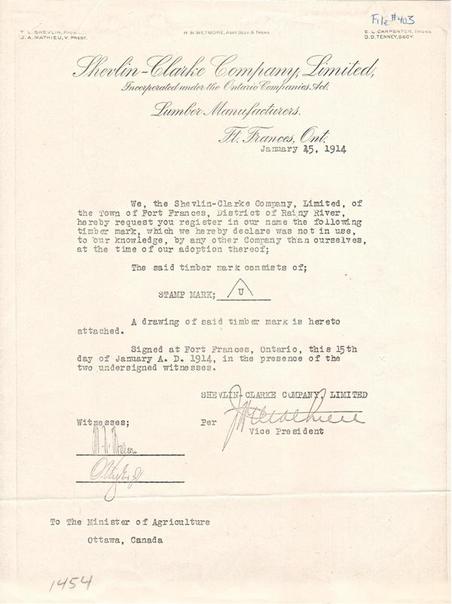 The Shevlin-Clarke Logging Company registering their timber mark. These marks are still used by logging companies when they transport their logs from privately owned land. They certify ownership and help prevent theft. The registered symbols are branded on the logs by timber mallets. Atikokan Museum Collection 2017.90.2. Logging remains a large industry in Northwestern Ontario. This month the Atikokan Centennial Museum is hosting Centennial College Forestry students to teach them about the industry's rich history. I hope that the information and photographs presented helps ground their experiences in the field, making for a richer appreciation of the industry and the changes it has gone through. [1] Ian Radforth, Bush Workers and Bosses: Logging in Northern Ontario, 1900-1980. (Toronto: University of Toronto Press, 1987), 17
[2] Ibid., 9. [3] Ralph O'Donnell Interview, 1985, transcript at the Atikokan Centennial Museum. [4] Ian Radforth, Bush Workers and Bosses: Logging in Northern Ontario, 1900-1980., 26. [5] Ibid., 29. [6] Ibid., 33. [7] Ibid., 15. [8] Ibid., 26. [9] Ibid., 91. [10] Albert Cain Interview, 1985, transcript at the Atikokan Centennial Museum. [11] Ian Radforth, Bush Workers and Bosses: Logging in Northern Ontario, 1900-1980.,91. [12] Unknown author. "The Ontario-Minnesota Pulp and Paper Company: Operations in the Atikokan Area," 1974 In Articles on Mining and Logging in the Atikokan Area. (A collection of articles put together by an unknown source in an unknown year.) [13] Ibid. [14] Ibid. [15] Ian Radforth, Bush Workers and Bosses: Logging in Northern Ontario, 1900-1980., 64. [16] Ibid., 64. “The past events are more remote from our senses than the stars of the remotest galaxies, whose own light at least still reaches the telescope.”[i] -George Kubler Historic sites are inherited physical places that inform contemporaries about the past. Being able to see and experience historic buildings instills pride in one’s history as well as acting as a place of social exchange between community members, drawing people closer together. Heritage refers to the way history is presented when visiting historic sites. It is dynamic in the sense that elements of the past are added and/or removed to adhere to modern day sensibilities. If heritage is only seen through the eyes of its contemporaries, is it possible to have an authentic historical experience? This post will provide a discussion to showcase how heritage is socially, politically and economically constructed. The argument will be made that heritage only offers a simulacrum of the past; thus an authentic historical experience is not something that can be totally realized. Intimately Linked: Heritage and the Economy Historically oriented sites are often created to capitalize on heritage tourism and nostalgia for the past. Sociologist Diane Barthel opined that, “[h]istory is no longer mined for images and ideas that can be associated with commodities. Like the rest of culture, history is being bought and sold.”[ii] Barthel’s statement shows the intimate connection between heritage sites and tourism. Elements of the past are chosen or disregarded, partly as a means for creating “camera-worthy” moments for tourists. Ian McKay felt, quite rightly, that history is presented for the “tourists gaze.”[iii] Heritage construction occurs because people like to imagine a “golden age.” This reality eloquently speaks about “a dependant society confronting the massive cultural changes incorporated in “modernity.”[iv] Cultural changes result in heightened anxieties; heritage offers a window into a “simpler” time. Presenting heritage as means to appeal to tourists has caused some scholars to criticize heritage experiences. David Herbert states that “as the numbers who visit places increases and the majority of tourists become less ‘cultured’ [and] educated, there are fewer who understand these sites without elaborate presentations such as reconstructions of historic buildings or living history programs.”[v] Similarly, Robert Hewison comments that, “when people who have no understanding of history in depth seek out historically related sites, they are not given actual history, but instead are offered a contemporary creation, more costume drama and re-enactment than critical discourse.”[vi] In his discussion of heritage and authenticity, Michael Kelleher opined that these comments show that, “contrived historical preservations are intended to be tools to educate people who do not have a grasp of history…but are created in an attempt to attract tourists and their dollars.”[vii] Simply put, heritage presentations commodify the past rather than offer intimate understandings of it. Sanitizing the Past: How Social and Political Factors Inform Heritage A defining feature of heritage is that it creates important symbolic representations of identity. Heritage can be used to empower or marginalize groups of people by including or excluding them from the meta-narrative. Thus, heritage is politicized when groups struggle for power. For instance, the case of the Sainte-Marie-among-the Huron’s heritage site states that it is culturally important to Ontario because it was the first settlement. This statement discredits the fact that the Wendat First Nation was in the region long before the European Jesuit settlers.[viii] Essentially, it declares that the Wendat do not fit into Ontario’s dominant narrative. This example shows how history is presented (as heritage), and how groups’ views about historic places differ. In this case, Ontario’s heritage is presented within a Eurocentric model. Heritage is constantly updated to ensure it fits contemporary ideals. David Lowenthal declares, “[w]hat endears the heritage is not the finished form but the long process of forging it. Its potency derives from being both ancient and responsive to present needs.”[ix] As one example, there was a debate about whether Franklin Roosevelt’s Washington memorial should show him as crippled (as is demanded by the disabled) or if his crutches and wheelchair should be concealed (as he usually did.)[x] This example shows how heritage is crafted to enhance admirable aspects of the past while ridiculing parts deemed distasteful. Any history presented has been carefully “refashioned” and only retains a semblance of the past. Authenticity: [Re]Creating the Past The concept of authenticity is complex since it can be defined in numerous ways. Heritage scholar Jeremy Wells states that authenticity is traditionally defined “through an objective analysis of extant building or landscape fabric,” i.e. if the building materials of a historic site have remained original.[xi] This logic dictates that if there are newly introduced materials the existing fabric lacks authenticity. Wells offers another way of viewing authenticity. He believes authentic experiences have a connection to ideas or meanings rather than fabric. To offer an example, a one thousand year old temple in Japan has very little of its original fabric, but cultural ideas are embodied in its added construction material.[xii] Thus, it is the ideas and physical space being preserved rather than the original fabric. This definition offers a sophisticated look at the complex nature of authenticity but fails to discuss how ideas change over time. Ideas about historic sites change with each generation and as different groups struggle for position within the narrative. Authenticity, then, is also crafted by public attitudes. Older meanings are cast aside and deemed “incorrect” or “undesirable” to make way for contemporary ideas. These new ideas then become “authentic”, while the old ones are seen as “outdated” and “inaccurate.” Conclusion Heritage presents history to its viewers through modern-day lenses. It is carefully crafted to fit contemporary ideals, highlighting what is deemed admirable while disregarding or changing what is considered distasteful. This is done for economic, political and social reasons. Heritage and tourism are intimately tied. History is “mined” for information and images that are considered appealing, to attract tourist dollars. The heritage narrative is powerful and legitimizes or marginalizes certain groups in society. Heritage is often a struggle for recognition in the story being presented. If the story is constantly changing, then it is impossible to capture and present an authentic historical experience. Because of these changes, authenticity is also something presented through modern guises. What is authentic today will be considered “outdated” tomorrow; then a new authentic historical experience will emerge, casting older “truths” to the wayside. [i] George Kubler, The Shape of Time (New Haven: Yale University Press, 1961), 42-43.
[ii] Michael Kelleher. “Images of the Past: Historical Authenticity and Inauthenticity from Disney to Times Square.” CRM: Journal of Heritage Stewardship 1, no. 2 (Summer 2004) [iii] Ian McKay. “History and the Tourist Gaze: The Politics of Commemoration in Nova Scotia, 1935-1964.” Acadiensis 22, no. 2 (Spring 1993), 102. [iv] Ibid., 104. [v] Michael Kelleher. “Images of the Past: Historical Authenticity and Inauthenticity from Disney to Times Square.” [vi] Ibid. [vii] Ibid. [viii] Alan Gordon. “Heritage and Authenticity: The Case of Ontario’s Sainte-Marie-among-the-Hurons.” Canadian Historical Review 85, no. 3 (September 2004), 518. [ix] David Lowenthal. “The Practice of Heritage.” In The Heritage Crusade and the Spoils of History, 2nd ed., 148–172, 273–278. Cambridge: Cambridge University Press, 2006., 151. [x] Ibid., 151. [xi] Jeremy C.Wells. “Authenticity in More than One Dimension: Reevaluating a Core Premise of Historic Preservation.” Forum Journal 24, no. 3 (Spring 2010), 36. [xii] Ibid. 37.  Leaving my Polish great grandmother's story and my Italian grandparent's story on the wall at the Pier 21 Museum. Leaving my Polish great grandmother's story and my Italian grandparent's story on the wall at the Pier 21 Museum. This past April I traveled to Halifax to attend the Canadian Museum Association Conference. While there, I visited the Pier 21 Museum. I was interested in visiting this museum for two reasons. The first being that I wrote about Italian immigrant history for my Master's thesis. The second, and more personal reason, was that several of my family members took their first steps on Canadian soil in the building this museum now encompasses. The guide took me through the exhibits and we stopped in a large narrow room with high windows overlooking the ocean. This was where the ships docked. It felt strange to stand on the exact spot my relatives stood long before. Even stranger was to reflect on how different our lives were. Standing in the same room we could not speak to each other, as some spoke Polish and others Italian. Below I will recount the stories of my grandfather and grandmother, Stefano and Maria Teresa Bellissimo. Showcasing my family's story will highlight larger trends in Italian immigrant history. This discussion will ultimately lead me to answer why I, a second generation Canadian, still feel a connection to my Italian heritage. Stefano and Maria Teresa Bellissimo My grandfather (Nonno), Stefano Bellissimo, came to Canada from San Nicola da Crissa, Calabria, Italy in 1952. He arrived at Pier 21, as most immigrants did, before departing to Toronto. He left behind a wife and four children so he could secure employment in the New World. Stefano worked on the railroads near Timmins, sending money home; the family joined him a year later. My father was born after my grandparents reunited, and was the only family member born on Canadian soil. My Nonno spent his life working for the Toronto Transit Commission. My Nonna worked as a cook for York University (those lucky students!) Although Canada was now their home they clung to their Italian culture in a number of different ways. They:
Growing up, my father and his siblings spoke Italian at home, played with Italian school mates, and ate Italian food. I myself, was never taught the Italian language. I have since taken numerous conversation and translation courses on the subject, and can only hold a basic conversation. However, there were many other Italian cultural symbols that I was exposed to; I can safely say that I feel a connection to my Italian heritage. But what does it mean to be "Italian"? Italian Identity Throughout my research about Italian immigrants, I learned that historically Italians did not feel a connection to an "Italian" identity prior to their move to Canada; instead they identified with their hometowns. This was because Italy experienced unification in 1861 after centuries of political fragmentation and domination by successive Spanish, French and Austrian empires, who consistently struggled with both one another and the Papal States for control of what is now modern Italy. Due to the country’s recent formation, the idea of a pervasive national unity was still in its infancy at the end of the nineteenth and beginning of the twentieth century (much like Canada itself). This circumstance was largely the result of a socio-economic disparity between the country’s northern and southern regions. The north experienced heavier industrialization, while the south was primarily rural, relying heavily on agriculture. Many parts of the south lacked modern infrastructure, leaving many of the region’s peasants with a distinctly parochial worldview. This disparity resulted in the village being the primary source of identity for many of its citizens. For many of the rural peasantry, the village was the only “world” they had experienced. Many Italians, therefore, identified more with their paesani - fellow townspeople- than they did with being “Italian."[1] I asked my father if my Nonna had ever visited other big Italian cities. He replied that she had not; the Italy she knew was her hometown of San Nicola da Crissa. When Italians came to Canada, they held onto their roots by living close to their paesani. Chain resident patterns allowed immigrants and their children to remain surrounded by cultural symbols that were brought from Italy. Culture is shared and transmitted between generations through the use of language, myths, religion and other symbols, and these constitute a major component of how people choose to ethnically identify themselves. Donald Akenson, a historian of Irish immigration, explained that “ethnicity is a perduring cultural characteristic,” meaning that it has influence over future generations.[2] As Italians settled in Canada their identity changed. They were seen as the "other" by dominant society, resulting in the creation of a unified "Italian" identity. In other words, their identity developed in relation to what it meant to be "Canadian." Unfortunately, because of the language barrier, I have never been able to ask my grandparents questions about how they identify themselves. However, a large picture of their hometown sits proudly on the wall of my aunt's house (who was born there), suggesting that their is a pride and yearning for the homeland. Exposure to Italian cultural symbols resulted in my deep fascination with Italian culture. So much so, that I dedicated two years to studying it in school. After graduation I spent a few months in Italy with my sister to attend language classes and to travel. I enjoyed the trip so much, and plan to go back multiple times in my life. Now if only I can get better at Italian cooking... To read more about Italian Canadian identity, or for those interested in learning about Italian homesteaders in Saskatchewan, check out my thesis. [1]John Zucchi, Italians in Toronto: Development of a National Identity, 1875-1935 (Kingston and Montreal: McGill-Queen’s University Press, 1988), 8
[2] Donald H. Akenson, Being Had: Historians, Evidence and the Irish in North America (Port Credit: P.D. Meany, 1985), 43. Throughout my schooling in heritage, I have been presented differing and sometimes conflicting viewpoints about conservation. Initially, when I started my coursework, I dreaded taking the conservation course. As someone from an arts background, the idea of scientific material intimidated me. However, throughout my learning I uncovered that the science is just one facet of this complicated subject. In fact, there is a philosophical component that has presented itself throughout my readings that has come to intrigue me. This blog post will discuss some of these thoughts to present a more encompassing view of conservation. White Otter Castle will be used to illustrate the points addressed. For historical context, please refer to my blog post True North Strong: White Otter Castle. For Present and Future Enjoyment Conservation is an integral aspect of heritage and museum work. Conserving, protecting and restoring objects and buildings allows for their enjoyment by present and future generations. Engaging with historic objects helps to form a strong connections to place. Throughout my blog you will notice my numerous nods to the importance of visible history. Being able to hold an object or stand in a physical space evoke strong sensory reactions that makes it easier for a connection to be made. It also stokes the imagination. There have been many poets, for instance, who have sat on the shores of White Otter Lake recounting Jimmy's myth in verse. To be able to imagine him walking about the property touting 1600 pound logs, is more memorable than gleaning this information from a book. It is also a way of incorporating your own memories into the story, entangling the two into a new personal narrative. And what better way for children to become interested in history! I still remember my first visit to the local museum when I was four. They asked me to brush roving between two big paddled brushes. I thought that it was the coolest thing ever. I remember that for a week afterward I brushed cotton balls between my hair brushes. In my adult life I now spin my own yarn and knit. And it is safe to say I am also a history lover. This experience sparked my interest in both. If the museum did not preserve these artifacts, or this earlier way of life, perhaps I would not be spending my evenings with my drop spindle. Likewise, the standing Castle induces myth, stories, songs and poems. The story may very well have been lost to time, if not for this strong physical reminder. Change as Part of an Object's Story When I first stepped foot into White Otter Castle, I was appalled by the numerous signatures and markings throughout the structure. It has become somewhat of a tradition for visitors to add their name to Jimmy's walls. This can be thought of as an irresponsible act, especially considering that lots of money and time goes into periodic restoration projects. Didn't visitors want to help preserve the Castle? Don't they respect the myth the Castle tells? How could they want to deface a structure that has stood proudly in nature for all this time? However, these markings can be seen in a slightly different way. Everything in the world is in constant flux, or in other words, forever changing. This is true of stories, physical objects, ideas and people. If we are to accept that objects have dynamic and multiple layers of meaning, then we must accept that any additions (or subtractions) are incorporated into their story. For White Otter Castle, this means that these markings are seen as adding themselves to the life of the structure; incorporating themselves into the mystique of the story. These names also speak to the idea of evanescence. People are penning their names down on a structure that will most likely stand longer than they will. It is a way for people to become part of Jimmy's story as well as let future visitors know that they have once stood there. Graffiti such as this also gives a physical reminder that White Otter Castle is a lively meeting space, drawing people from all over to share in its story. Seen this way, removing the names would alter the constantly and forever changing story of White Otter Castle. Heritage scholar, David Lowenthal paints this picture when discussing archaeological objects. He states: "Conservation, however careful, may destroy evidence vital to site or artifactual provenance or add taints that subvert authenticity or ambience." He goes on to say, "Marks of age and decay integral to every object need to be seen not just as losses but as gains. Esteeming evanescence can make us wiser and more caring stewards." [1] Photographer and writer Clarence John Laughlin also finds life in old structures. When discussing abandoned Louisiana plantations he poetically surmises that: In houses which are old- the forms of whose very walls and pillars have taken body from the thoughts of men in a vanished time- we often sense something far more delicate, more unwordable, than the customary devices of the romanticist: the swish of a silken invisible dress on stairs once dustless, the fragrance of an unseen blossom over the years, the wraith momentarily given form in a begrimed mirror. These wordless perceptions can be due only, it seems, to something still retained in these walls; something crystallized from the energy of human emotion and the activity of human nerves. And, perhaps, it is because of this nameless life of memory and desire and, correlatively, because of the superior power of suggestion, that, for those who are sensitive, the ruined houses have a fascination far exceeding that of the intact, and inhabited structures. [2] His statement attributes a certain mystery and beauty to the abandoned and long-forgotten structures dotting the state. Like those individuals at the banks of White Otter Lake, he too finds poetic vision in the imagined past. Ultimately, this discussion calls into question:
Conservation and Authenticity If historical objects pass through various conservation processes are they still considered authentic? For instance, White Otter Castle has undergone various changes throughout its life, including:
Closing Remarks Conservation is a more complex concept than just understanding basic scientific tests and principles. This blog post picked out just a few items to discuss amongst a plethora to choose from. Surprisingly, conservation ended up being one of my favourite heritage courses, and the information I learned informs everything I do in my museum work, from working with the collection, doing interpretive programming, or tackling ethical issues. I hope to continue to ponder the more philosophical aspects as well as learn more about the scientific practices in this field. I will finish on a more contemplative note, with a quote from Lowenthal: Our successors are better served by inheriting from us not a bundle of canonical artifacts but memories of traditional creative skills, institutions in good working order, and habits of resilience in coping with the vicissitudes of existence.[iv] [i] David Lowenthal. "Stewarding the Past in a Perplexing Present." In Values and Heritage Conservation: Research Report. Los Angeles: Getty Trust, 2000, 19-20.
[ii] Clarence John Laughlin. Ghosts Along the Mississippi (New York: American Legacy Press, 1988), 7-8 [iii] Jim Mahon, Jim McQuat’s Castle: White Otter Lake, Architectural Report (Ministry of Natural Resources, 1972) [iv] David Lowenthal. "Stewarding the Past in a Perplexing Present," 20. Recently, my fiancée Adam and I visited the Kay-Nah-Chi-Wah-Nung Historic Centre in Northwestern Ontario. This National Historic Site encompasses museum galleries and an interpretive tour of seventeen ancient burial mounds along the Rainy River shoreline. Over the last century the Ojibway people have called this land home. Before this, the Laurel and Blackduck traversed this area. Our tour guide specified that the mounds were between 300 and 900 years old, with the largest mound containing at least one hundred people. This impressive mound is the second largest in North America, next to one located in Minnesota. While on the tour, our guide stopped at a particular mound stating that it was “still in progress.” In the 1960s, archaeologist and curator Walter Andrew Kenyon proceeded with a dig, removing seven bodies from a mound. These bodies were then sent to the Royal Ontario Museum (ROM) for study and display. Over twenty years after their removal, the bodies were repatriated back to the community. Another disruptive incident occurred when a gravel businessman operating on the property drove over one of the smaller mounds with his truck. The Ojibway community decided to incorporate the returned bodies, as well as those disturbed by the truck, into a new mound. Our guide asked us if we wanted to partake in the burial ritual, adding dirt from the old mound into that of the new. We agreed, and walked over to the site of the old mound. She told us to pick up the dirt with our left hand, as this is the hand closest to our heart. Normally in Ojibway tradition ceremonial spaces are approached in a clockwise fashion. However, because this ritual dealt with death and mourning we were asked to approach it in the opposite direction. We were given tobacco, a traditional offering, to mix with the dirt. Adam and I approached the new mound walking counter-clockwise, sprinkling the dirt on the mound. As non-Aboriginal Canadians it was touching to be offered participation in this traditional, solemn ritual. This action allowed us to form a connection to the nature and land around us, to better understand Ojibway culture, to pay respects to those who came before us and to become involved in the site’s evolving history. Given the troubled history of Aboriginal and non-Aboriginal relations this symbolized a reconciliatory bridge between our two cultures and allowed both groups to share in a single Canadian history. 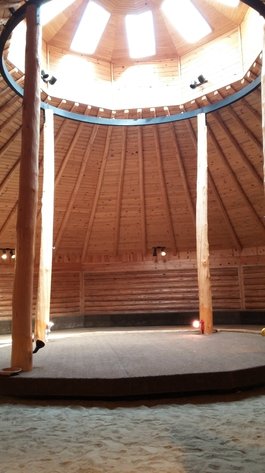 The Round House, a space used for ceremony, has nine walls to signify the nine bands that signed Treaty 3. The four cedar pillars in the centre represent the four directions. The sand on the ground is significant because Ojibway dancers believe that they should be connected to the earth. Thus, there is nothing between the sand and the earth below in this space. I had the pleasure of visiting White Otter Castle, a large log structure on White Otter Lake in Northwestern Ontario. This castle is a gem because it is located in an extremely remote location, not accessible by car. To get there, one needs to either paddle two lakes, or be flown in by a bush plane. My journey involved the latter, as a bush pilot agreed to take the museum staff on a research trip. The Story of Jimmy McQuat The story of White Otter Castle begins long before its construction. Its builder, Jimmy McQuat, was born in Argenteuil County, Ottawa Valley, in 1855. While a child, he had an unfortunate encounter with a codger who told Jimmy that he would “die in a shack.”[1] The words haunted him, and perhaps gave him future inspiration to build his very own Castle. As an adult he decided to move west to the Rainy River District to seek his fortune. At that time, there were many men traversing the area looking for gold. However, Jimmy, like many of his contemporaries, was never successful in this venture. In 1903, he built a small shack on the shores of White Otter Lake, the future site of his legacy. There, he worked for several years on the lake as a trapper, canoeing to the nearby town of Ignace to sell his pelts.[2] Denis Mahon, a Historical Architectural Consultant who examined the Castle in 1972, believed that Jimmy’s “relentless struggle for survival which had dominated his life until that time would appear to have been the driving force behind his secluded and hermit-like existence for the next seventeen years.”[3] He sustained himself by trapping, baking bread, growing a vegetable garden, fishing, picking wild berries, and hunting. Jimmy began construction on his Castle prior to the outbreak of World War One. At that time, he spent his days cutting down Norway pine, limbing each tree and dragging it to the site. These logs could weigh as much as 1600 pounds, adding to the awe of the Castle, especially considering that Jimmy built it alone.[4] Using a pulley-system he moved the logs into place to craft his dream. In 1912, the Shevlin-Clarke Logging Company commenced work on Turtle Lake; Jimmy was no longer alone in the bush. In the winter, the workmen piled logs into the water with hopes that once the ice thawed they would be driven down to Fort Frances. This event was never realized; instead they needed to rework their plans. Large Alligator boats (or Gator boats as they were affectionately nicknamed) were needed to transport the logs to locomotives waiting for them in the bush.[5] This work was a disruption to Jimmy because it resulted in water levels rising nearly to his front door. Deciding to take action, he wrote the Lands Department to apply for title. The office questioned his right to be on the land, and turned down his request. Years later, he attempted this action a second time. While waiting for a response, Jimmy drowned when one of his jacket buttons caught in his fishing net, pulling him into the lake. He was last seen alive in 1918.[6] Today, the castle stands as it was intended, in the wilderness, as it was incorporated into Turtle River-White Otter Lake Provincial Park in 1989. The Significance White Otter Castle offers a fine example of typical log house construction at the turn of the century. However, the tower’s addition is atypical, resulting in a remarkable building. Mark Denhez, heritage lawyer and scholar, states, “[s]ome structures deserve attention because of the uniqueness or ingenuity of the methods by which they came into existence.”[7] White Otter Castle not only has a distinct addition but its creator also made its history unique. The fact that Jimmy built the Castle alone is a remarkable feat. Although the structure is impressive it “blend[s] with the landscape instead of trying to subdue it,”[8] an impressive achievement considering its size. This sentiment speaks to the importance of nature as the fabric of the building, an important aspect of its history. White Otter Castle inspires an awareness of the history of our forefathers. This fact not only encompasses knowledge of historical events, but also a “keen feeling for their entire way of life.”[9] Jimmy McQuat’s life is a snapshot of the pioneering world of Northwestern Ontario, where people relied heavily on the land for sustenance. This sentiment can be surmised by Mahon, who states, “in a way the Castle stands as the result and manifestation not only of the odyssey of McQuat but of the countless quests that have driven the discoveries of man for centuries past.”[10] Myths of Jimmy and the Castle have resonated with community members and visitors alike, leading to the creation of myths, songs and poems. Thus, White Otter Castle is considered a remembered history, as its story has been passed down through oral, folk and popular traditions. The Castle has not yet been formally recognized as a historic site. The Friends of White Otter Castle have been working tirelessly to protect and restore the structure. Throughout the years there have been restoration projects completed to keep the structure vibrant so that it can be enjoyed by present and future generations. Presently, more work needs to be done to preserve the structure, as it has deteriorated over time. The Friends are currently fundraising to see this initiative happen. I believe that the White Otter Castle should be formally recognized because:
[1] Lynda Roberts. The Interpretation of White Otter Castle (honours thesis), Department of Outdoor Recreation, Lakehead University, 1984, 2.
[2] Peter G. Elliott, Nostalgia #7: Dream of James McQuat: The Castle of White Otter Lake (DVD), 2012. [3] Jim Mahon, Jim McQuat’s Castle: White Otter Lake, Architectural Report (Ministry of Natural Resources, 1972), 3. [4] Peter G. Elliott, Nostalgia #7: Dream of James McQuat: The Castle of White Otter Lake [5] Lynda Roberts. The Interpretation of White Otter Castle, 31. [6] Peter G. Elliott, Nostalgia #7: Dream of James McQuat: The Castle of White Otter Lake [7] M. Denhez. “Defining the Canadian Heritage: Existence, Aesthetic, Ethos, 49. [8] Peter G. Elliott, Nostalgia #7: Dream of James McQuat: The Castle of White Otter Lake (DVD), 2012. [9] M. Denhez. “Defining the Canadian Heritage: Existence, Aesthetic, Ethos, 46. [10] Jim Mahon, Jim McQuat’s Castle: White Otter Lake, Architectural Report, 23.  Canada prides itself on being a multicultural, inclusive country. Many identities now exist under the umbrella of Canadian identity, where individuals can express different value systems, opinions and perspectives. This reality poses a challenge to policy makers and cultural institutions since it becomes difficult to represent all Canadian voices. In order to create a more comprehensive history it is important to discuss the concept of social cohesion. This concept refers to the process that bonds individuals together at both the communal and national level, achieved by establishing common values, civic order, democratic participation, equal opportunities, and a sense of belonging.[i] Under Pierre Trudeau’s government the Constitution Act and Multiculturalism Act were passed as a means for creating a cross-cultural understanding and harmony in Canadian society. They aid in integrating different groups into society and allow them to take part in social, cultural, economic and political affairs.[ii] Acts like these paved the way for the Museum Act (1990), which resulted in museums becoming more democratic institutions. This Act states that its responsibility lies in “preserving and promoting the heritage of Canada and all its peoples throughout Canada and abroad and in contributing to the collective memory and sense of identity of all Canadians.”[iii] This policy shifted heritage institutions’ focus away from a one-dimensional nationalistic narrative and directed it towards creating a more inclusive story. Increased globalization and immigration have changed the way Canadian society has imagined itself and museums are now aiming to articulate these changes within their exhibits. [iv] Presently, museum experiences have become essential for enhancing citizens’ confidence about belonging and help foster a larger community identity.[v] For instance, the Canadian Museum of History is currently in the process of creating a more inclusive exhibit space. In the 1970s the museum decided to treat Aboriginal and Non-Aboriginal histories as two separate entities, with the creation of the First People’s Hall and the History Hall.[vi] These separate halls symbolically demonstrated that the Aboriginal story was still seen as separate from the Canadian narrative. By keeping them separate, the museum failed to provide a comprehensive view of Canadian history. Now, the museum is changing the History Hall into the Canadian History Hall, which is due to be complete by 2017 (in time for Canada’s 150th birthday). They state that “[t]he new Hall will tell the story of Canada and its people from the dawn of human habitation to the present day, through events, experiences and people that reflect and have shaped the country’s history and uniqueness.”[vii] It is the most comprehensive exhibit that they have worked on to date. This exhibit will give agency to many voices that have been previously marginalized in Canadian history. Dean Oliver, the museum’s Director of Research, stated that Canada’s First Nations will play more of a prominent role in the new space.[viii] Further examples of democratic principles are now seen in museum vision statements throughout the country. To give a few examples, the Canadian Museum Association states that inclusiveness is a cornerstone of their vision and express that they “embrace inclusion by respecting diversity and seeking different perspectives and opinions.”[ix] Similarly, the Burlington Museum in Ontario conveys that, “Burlington is a community that knows and celebrates its diverse cultural heritage…”[x] The Glenbow Museum in Calgary, Alberta articulates that it wants “more people to experience art and culture more often”[xi] These visions are especially important because in some sectors of the Canadian population “cultural insecurity and nostalgia for ‘Old Canada’” are reducing tolerance and compassion. [xii] By having museums become havens where every Canadian feels included, not only in the narrative, but also in the creation of the exhibits themselves, these archaic attitudes can be dispelled. [i] Policy Horizons Canada. “Diversity, Identity and the Social Cohesion Advantage,” (accessed July 15, 2015)
[ii] Government of Canada. "Canadian Multiculturalism: An Inclusive Citizenship,” (accessed July 25, 2015) [iii] The Museum Act, S.C. 1990, C.3, (accessed July 20, 2015) [iv] Ashley, Susan. “State Authority and the Public Sphere: Ideas on the Changing Role of the Museum as a Canadian Social Institution.” Museum and Society 3. No. 1 (March, 2005): 5-17. [v] Stanley, D. “Introduction: The Social Effects of Culture.” Canadian Journal of Communication 31, no. 1 (2006) [vi] Although these histories were treated as separate entities conjuring up the notion of Canadian history and the history of the “other”, it is worth noting that the Canadian Civilization Museum (now the Canadian Museum of History) took great care to include Aboriginal community members in the process of creating the narrative found in the First People’s Hall. Dean, David, and Peter E. Rider. “Museums, Nation and Political History in the Australian National Museum and the Canadian Museum of Civilization.” Museum and Society 3, no. 1. (2005): 35-50. [vii] The Canadian Museum of History. “The Canadian History Hall-Coming in July, 2017!” (accessed July 20, 2015) [viii] Unlisted Author, “Canadian Museum of History Plans Revealed,” CBC News, July 30, 2013. [ix] Canadian Museum Association, “CMA Strategic Plan 2015-2018.” [x] Museums of Burlington, “Our Vision,” (accessed July 20, 2015) [xi] Glenbow Museum. “About Us.” (accessed August 4, 2015) [xii] Jenson, Jane. “Identifying the Links: Social Cohesion and Culture.” 141. The Nelles Manor sits proudly along Main Street in Grimsby; nestled amongst other character homes. What makes this particular home significant is the fact that it was owned by Robert Nelles, who many claim to be Grimsby’s founder. Nelles first came to the Forty after fleeing the American Revolution when a bounty was placed on his head. He settled in Grimsby and began to build the manor in 1788, later completing the structure in 1798. This structure is so old that the Niagara Green Belt website claims that it is the oldest inhabited structure between Niagara and Kingston.[i] It is also significant because it showcases late 18th century Georgian architecture. The home’s contemporary story is just as fascinating as its historical counterpart. In 1963 Barry and Linda Coutts purchased the home. They were the first owners of the property outside the Nelles family, who owned the home for almost two hundred years. At the time of their purchase the home had drywall partitions used to create separate apartments. The Coutts family decided to tear down these dividers in order to restore the house to what they think “is a pretty accurate depiction of how it would have looked just before Robert’s death in 1842.”[ii] In the process of the renovation they uncovered many treasures including original flooring, fireplaces, and even a Red Coat jacket owned by Robert during the War of 1812.[iii] The Coutts have stated that they are the “keepers of the manor,” only being “one part of its history.”[iv] Throughout the years they have opened the door of their home to welcome community members, allowing them to appreciate and learn about the historic house and Grimsby’s rich history. Currently, they are in the process of turning their home into a public museum that all community members can enjoy. They have sold the house’s rights to a not-for-profit charitable corporation who is working tirelessly to make this transition. In one of my last blog posts I discussed Toronto’s issue of disposable architecture and how many older buildings are being torn down so that condos can be erected. I decided to write about this story to show the tireless work that many individuals are doing to preserve our heritage. Visible history is important to any community. Being able to see and experience a heritage building instills pride in where one lives as well as acting as a place of social exchange between community members, drawing people closer together. In this case, the museum will become the grounds where history and social interaction intermingle. It acts as a “living, breathing” entity, rather than a place you can only read about in a history book. I would like to note that my discussion might sound overly simplistic. I understand that there are many circumstances resulting in the destruction of older buildings. In this case, it is very fortunate that the Coutts family has the means to essentially donate their home in order to make it a museum. In many cases, this is not possible. However, I do believe that these actions should be applauded and that perhaps it can inspire others to find ways to keep heritage alive in their own communities. Additional Reading Niagara This Week. "Protecting Grimsby Heritage," February 2, 2016. Niagara This Week. "The Nelles Brothers and Their Impact on Grimsby," August 12, 2010. Niagara This Week. "Making of a Museum: Owners Spent Nearly 50 Years Restoring Grimsby's Nelles Manor," February 2, 2016. [i] Niagara Green Belt. “Nelles Manor,” (accessed February 13, 2016)
[ii] Amanda Moore. "Making of a museum: owners spent nearly 50 years restoring Grimsby’s Nelles Manor," Niagara This Week, February 2, 2016. [iii] Ibid. [iv] Ibid. In recent months there has been much excitement over the announcement to build a memorial for the workers who lost their lives while building the Welland Canal. In fact, the Department of Canadian Heritage confirmed that $150,000 would be given for the project through its Legacy Program funding. This amount will help towards the $450,000 goal that the Welland Canal Fallen Workers Task Force has set to raise for the design, construction and installation of the project. There are also several private donors making contributions to help push the project into fruition. It is set to be unveiled in 2017 on a site along the canal north of Lock 3 in St. Catharines.[i] The Welland Canal: A Brief History The Welland Canal is important to Canadian history because it links Lake Ontario to Lake Erie, allowing easier transport of goods. Work began with construction of the first canal in 1829 and ended with the completion of the fourth canal in 1932. Prior to its creation, goods were transported overland between Queenston and Chippawa along Portage Road, a longer and more laborious process.[ii] Since its completion, over three thousand vessels have used the canal as a passage.[iii] The canal is also significant because many cities began to grow along its banks- most notably St. Catharines and Welland. This project was a dangerous and difficult one to complete. Numerous immigrant men (many of them Irish) laboured in poor conditions in order to drastically alter the landscape to create this passage. Rob Foley in his book, “The Welland Canal: The Niagara Story Vol. 3” paints a scene of what these men experienced: Men with hundred pound sacks on their shoulders struggled up the slippery slope to load wagons that would get bogged down in the bottom. Many a man lost his footing and tumbled back to the mud below. If he were lucky he lifted the sack to his shoulders and started again, but many were injured, losing their jobs. There was no such thing as workman’s compensation to feed the sick and injured. No work, no pay was the cruel reality that they faced every day.[iv] Working on the canal was so dangerous that the City of St. Catharines declared that it is “believed to be the largest loss of life on a federal government infrastructure project in Canadian heritage.” One tragic case worth noting is that of Antonio Collini, who was just fifteen years old when he died on the job. Sadly, he was buried in a suit that he purchased with his first pay cheque.[v] It is important to note that the number of recorded deaths by accident (137) is not entirely conclusive. St. Catharine’s Mayor and Co-Chair of the task force, Walter Sendzik acknowledged that many workers were killed in the building of the first, second and third canals that were not recorded.[vi] Many also died from diseases like Cholera and Typhoid that resulted from poor living conditions, and thus can be considered indirect casualties of the perilous project. Tying Memories to Physical Places Although the tragic events occurred many years ago, it is important to commemorate these workers’ experiences. Connecting memories with a physical place allows communities to incorporate the stories into its collective narrative. Grounding these stories in a physical location connects them with the community’s identity. Additionally, the monument will serve as a vehicle used for healing. In the article, “Sites of Hurtful Memory” Gabi Dolff-Bonekamper discusses what Sigmund Freud termed “working through.” This notion suggests a parallel between individual trauma therapy and collective work on traumatic events in history. Essentially, once a community has allowed the truth to be revealed, in this case, by public commemoration, healing seams achievable.[vii] Judging from the Niagara this Week newspaper article, “Welland Canal Memorial a long forgotten promise” this process has already begun. The article shares stories from relatives remembering those who perished while building the canal.[viii] As the nation approaches the celebration of its 150th year since Confederation, such stories are important for remembering the grand, sometimes dangerous projects that shaped our economy and connected Canadians, and are an essential part of our national tapestry. [i] City of St. Catharines. "Welland Canal Fallen Workers Memorial," (accessed February 3, 2016)
[ii] Pritchard, Jean and Allen. The Welland Canal in Story and Picture: Yesterday, Today Tomorrow (Port Robinson: Jean Pritchard Publications, 1975), 1. [iii] City of St. Catharines. Brochure, (accessed February 3, 2016) [iv] Foley, Rob. The Welland Canal: Niagara Story Vol. 3 (Niagara Falls: The Haunted Press, 1941), 25. [v] Legislative Assembly of Ontario, Monday April 28, 2014, (accessed February 3, 2016) [vi] Forsyth, Paul. "Welland Canal Memorial a long forgotten promise," Niagara This Week, August 6, 2015. [vii] Dolff-Bonekämper, Gabi. “Sites of Hurtful Memory.” Conservation 17, no. 2, 2002, 4-10. Los Angeles: Getty Conservation Institute, 10. [viii] Forsyth, Paul. Welland Canal Memorial a long forgotten promise This snapshot of the Toronto skyline crowding the historic Fort York can be viewed as a microcosm of larger developments, showcasing problems the heritage field is facing when it comes to preserving historic buildings. I have grown up in the Greater Toronto Area and like many others have witnessed firsthand the vast changes that Toronto has experienced in the past generation. What was once a picturesque skyline, marked with iconic buildings, now resembles a dystopian science fiction novel. Modernist, large, ubiquitous, and often poorly built condos and corporate towers have sprung out of the earth at an alarming rate, forever changing the characteristics of the neighbourhoods they occupy. There have been countless examples of Toronto buildings being demolished so that new condos, often built by foreign developers with little care for local communities, can go up in their place. When driving into the city along the Gardiner Expressway twenty years ago, the once prominent Rogers Centre (formerly the Skydome) and CN Tower were on display for all visitors to see, creating a grand but inviting picture of the city, showcasing its reputation for innovative architecture. Now, those landmarks are mostly hidden behind ugly condominiums that resemble prisons or apartment blocks from the former Soviet Union. What does this trend say about contemporary Canadian culture? Where is the sense of permanence? Where is the pride in our history? Perhaps most importantly, if this trend continues, will our cultural heritage survive at all? A few months ago I was reading an article that M. Denhez published in 1978 called “Defining the Canadian Heritage: Existence, Aesthetics, Ethos.” In the article he had very prophetic insights when discussing the transient nature of contemporary culture. He explained that we have entered the age of disposable architecture, stating that this trend was a product of consumer society where things have become “mass producible, mass usable, mass disposable.” He went on to state: “The heritage movement stands for the principle that man has consciously attempted to bring lasting improvements to his environment. A society which is not capable of appreciating that effort is not capable of understanding the meaning of initiative and creativity in particular, and lasting values in general. Such a society is consequently not likely to produce any lasting achievements of its own.”[i] These statements were meant as an encompassing account of Canadian culture and what could happen if we are not more careful with our heritage. I believe that Toronto offers a perfect example of what can occur if we invest in “disposable architecture” at the cost of historic buildings. Nevertheless, it is important to acknowledge that there are many institutions and individuals who work towards preserving Toronto’s heritage, and they should be applauded. We can only hope more like them will pop up, and hopefully at a faster rate than the condominiums that now threaten to destroy the beautiful character that once defined Toronto’s downtown core and surrounding areas. Further Reading CBC Video, New Condos Rise from Historic Toronto Facades A list of demolished Toronto buildings CBC, Growing List of Potential Heritage Buildings Threatened by lack of funds and Maintenance A List of the Oldest Toronto Structures [i] Denhez, M. Defining the Canadian Heritage: Existence, Aesthetics, Ethos. In M. Denhez, Heritage Fights Back. Heritage Canada. Toronto: Fitzhenry and Whiteside, 1978, 66-67.
|
Help support this blog!
Archives
January 2020
Categories
All
|

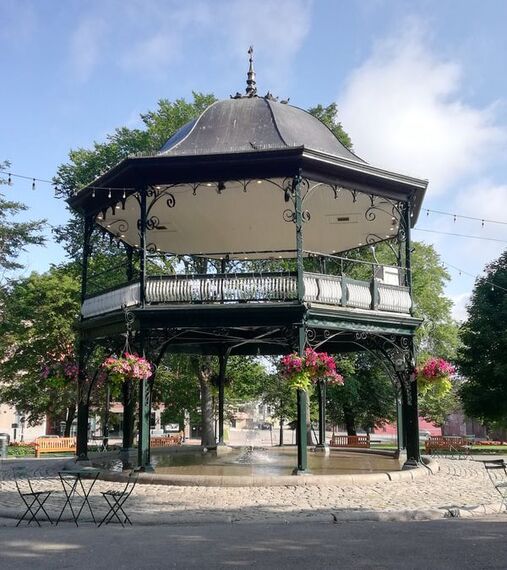
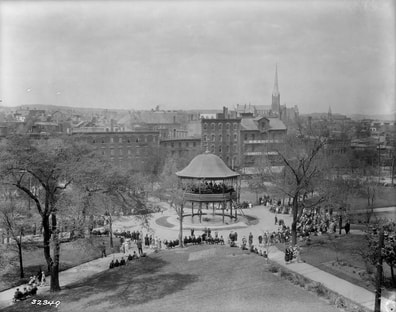
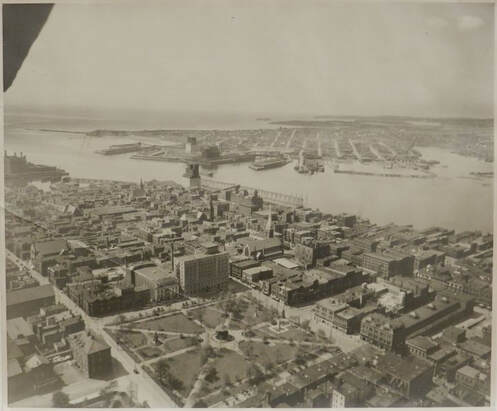
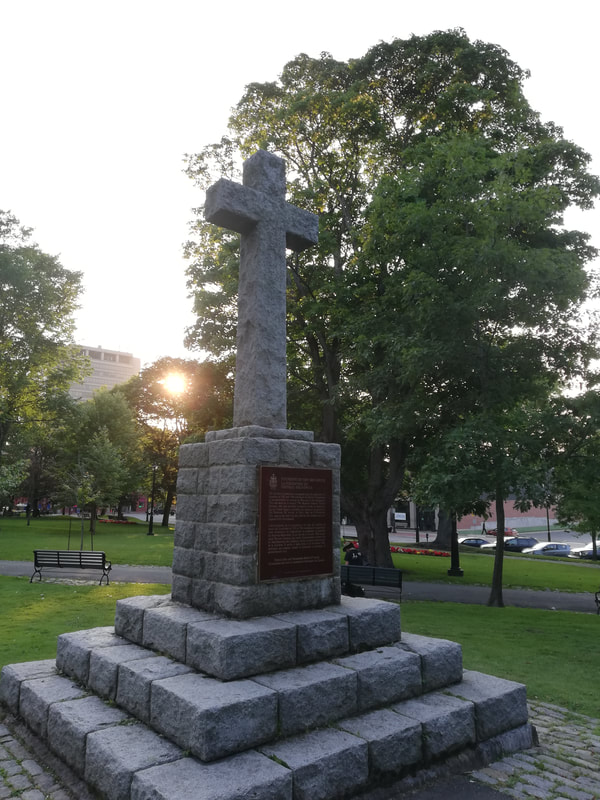
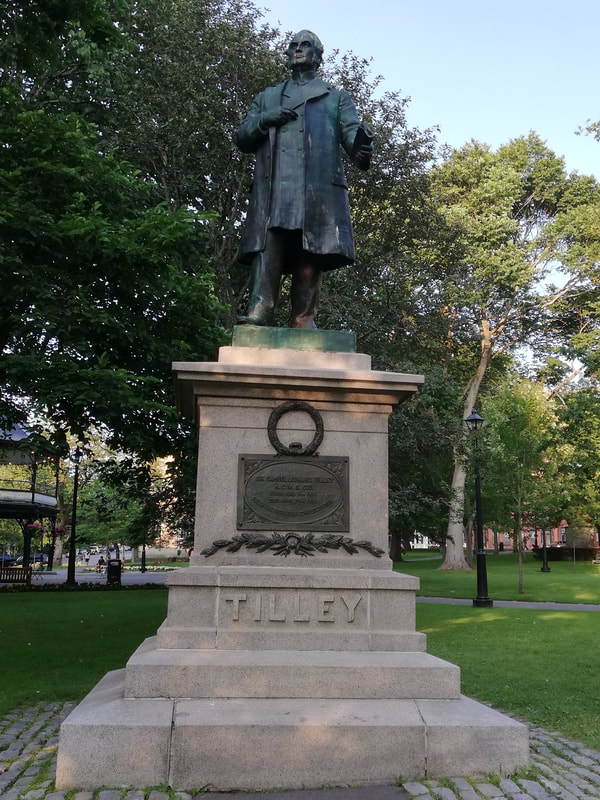
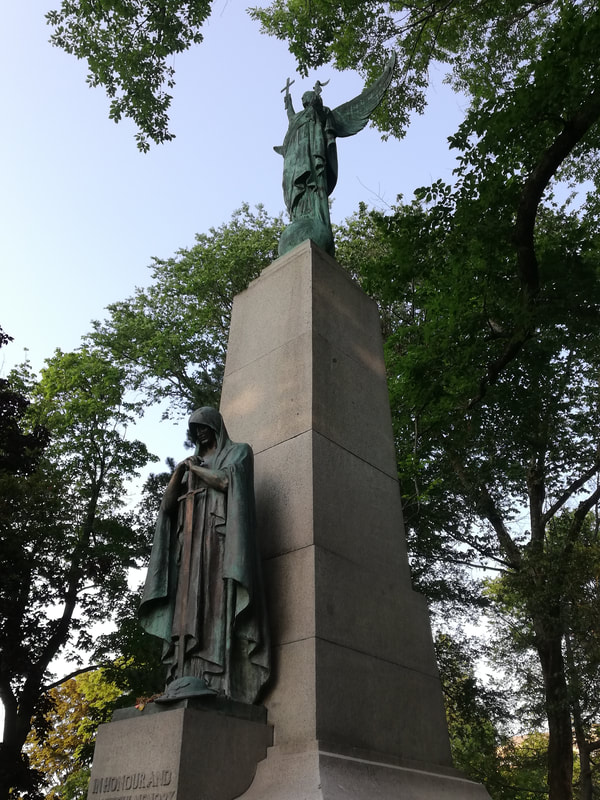
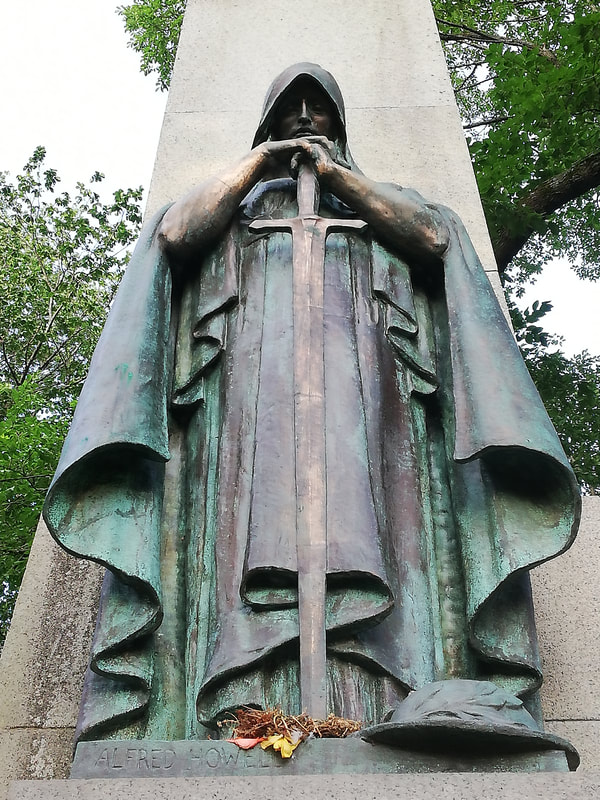
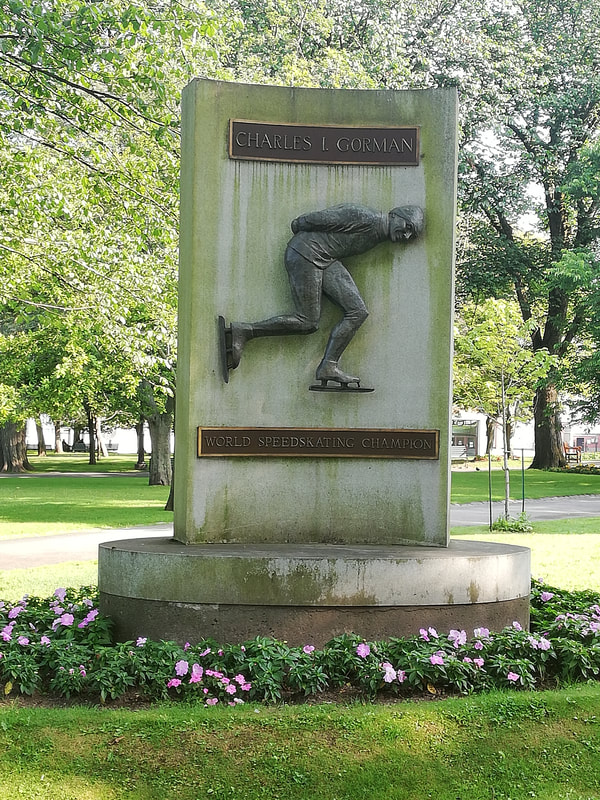
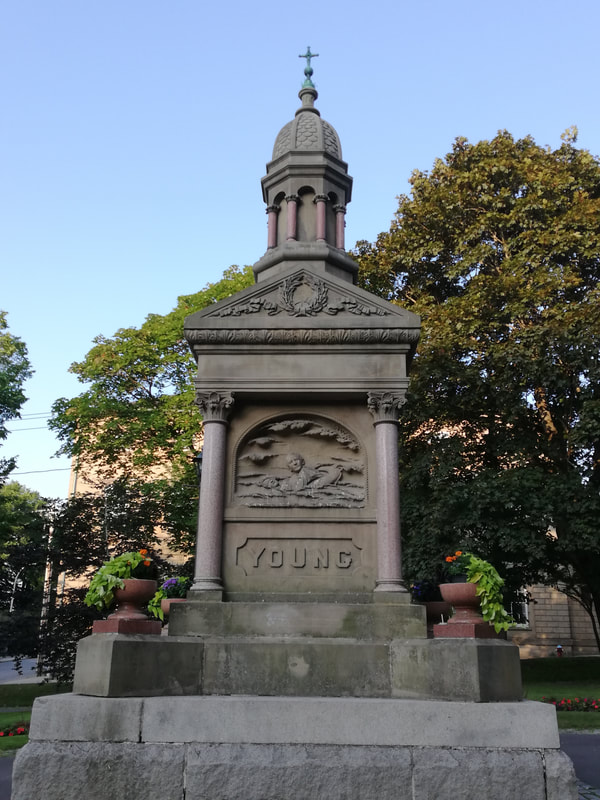
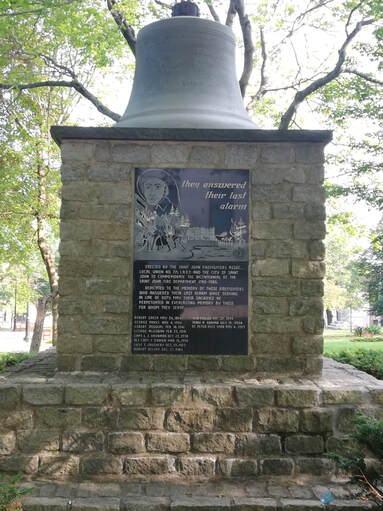
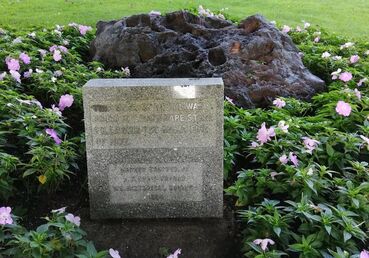
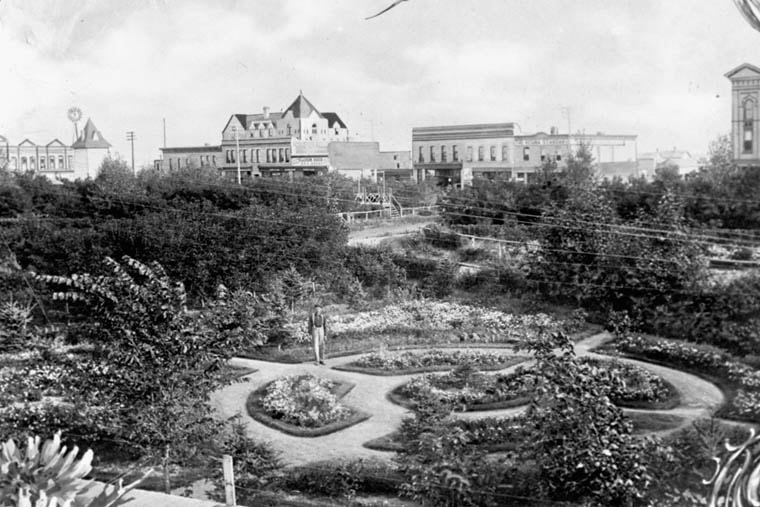
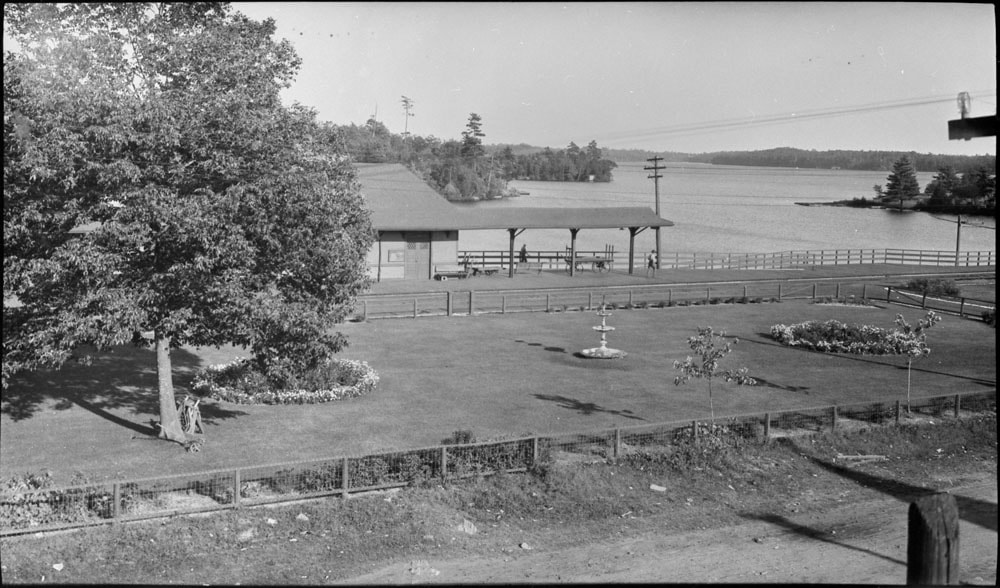
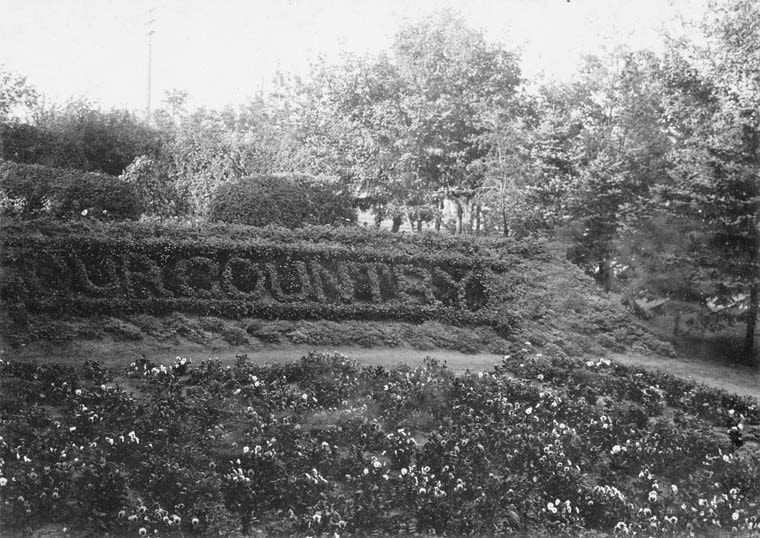
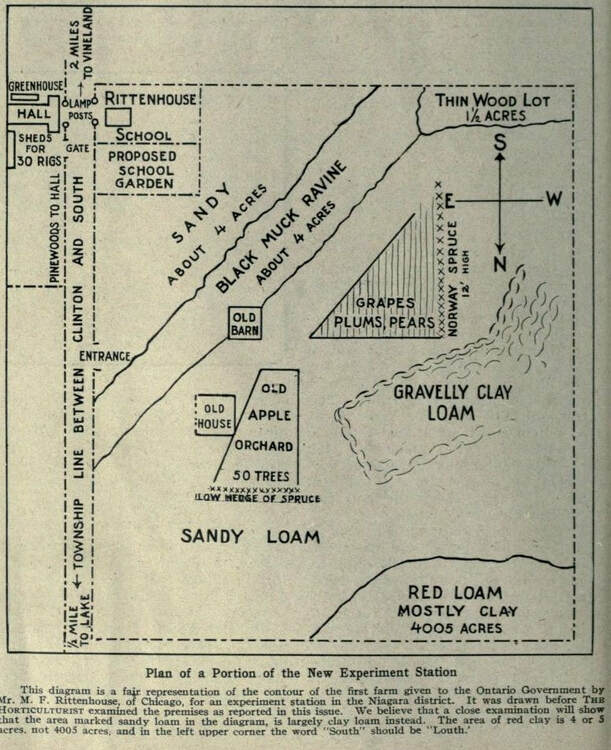
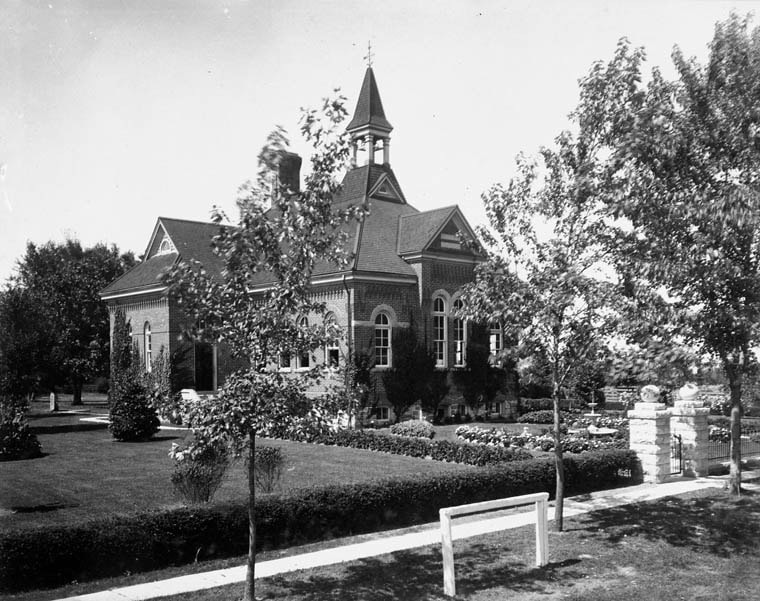
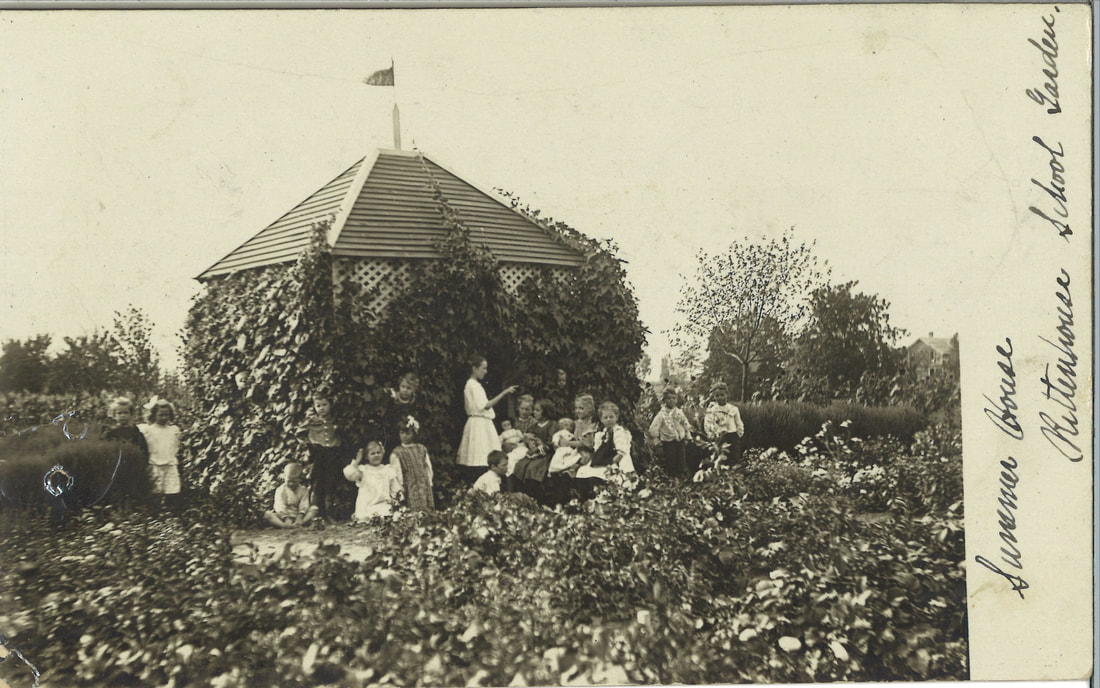
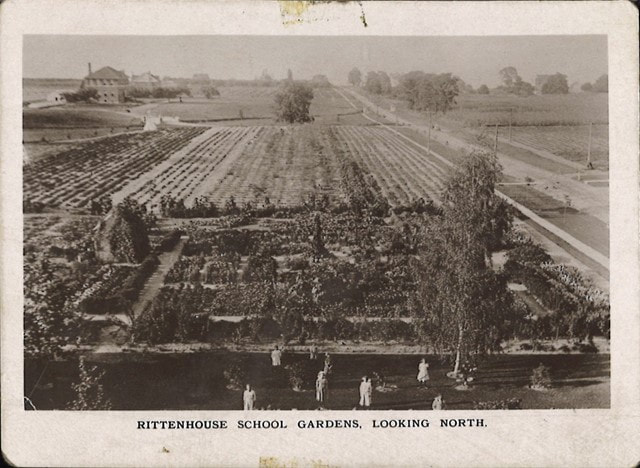
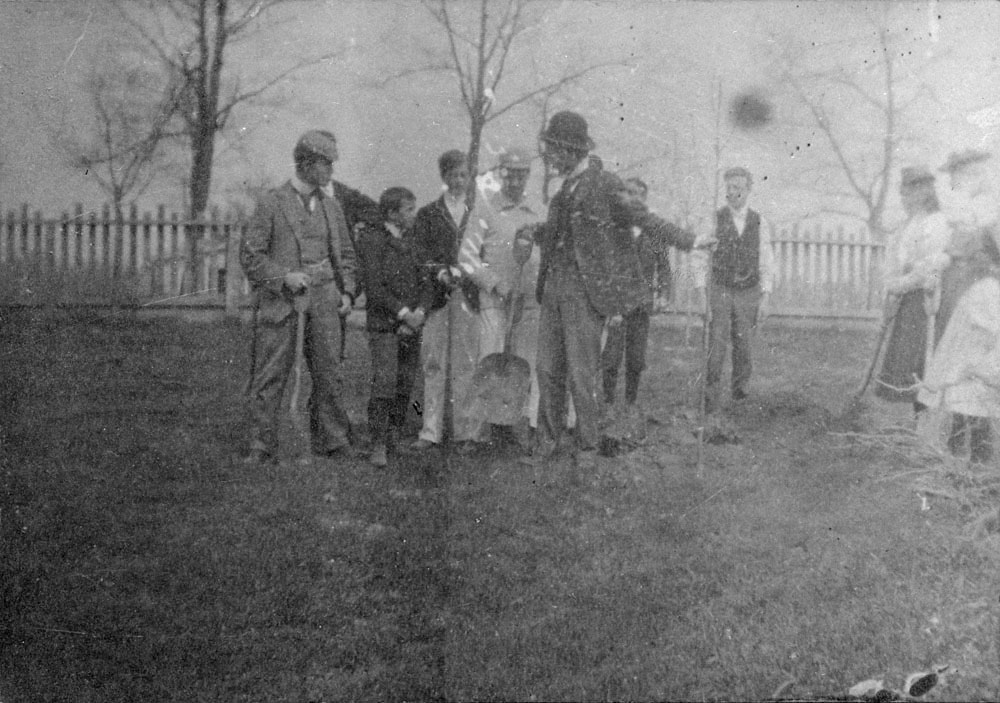
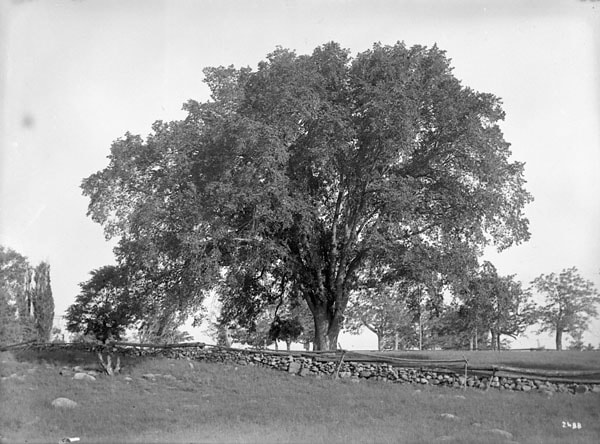
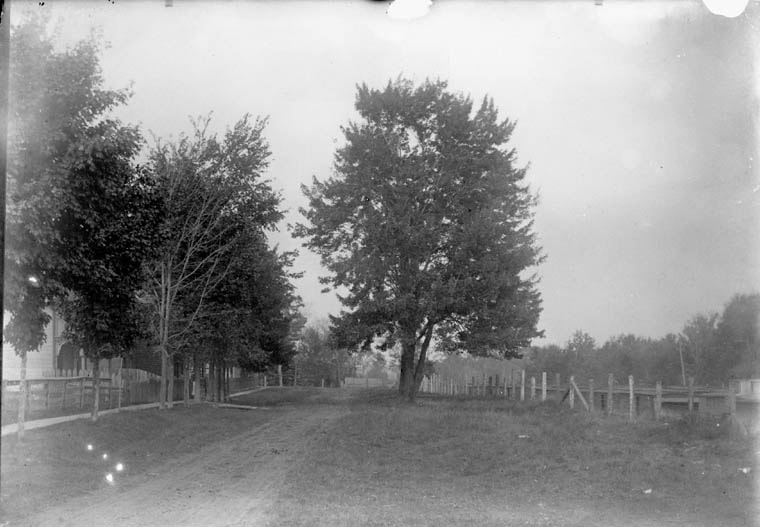
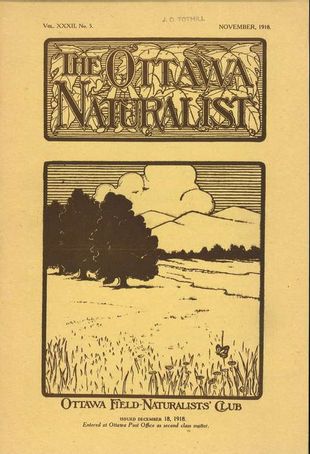
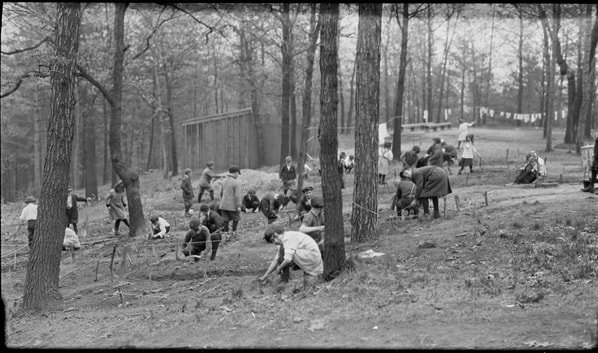
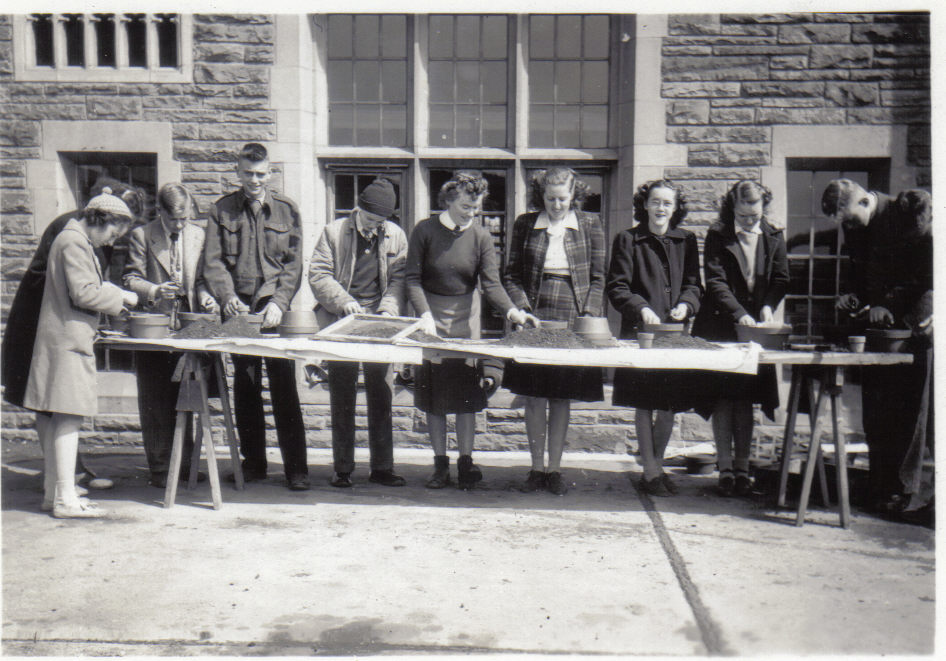
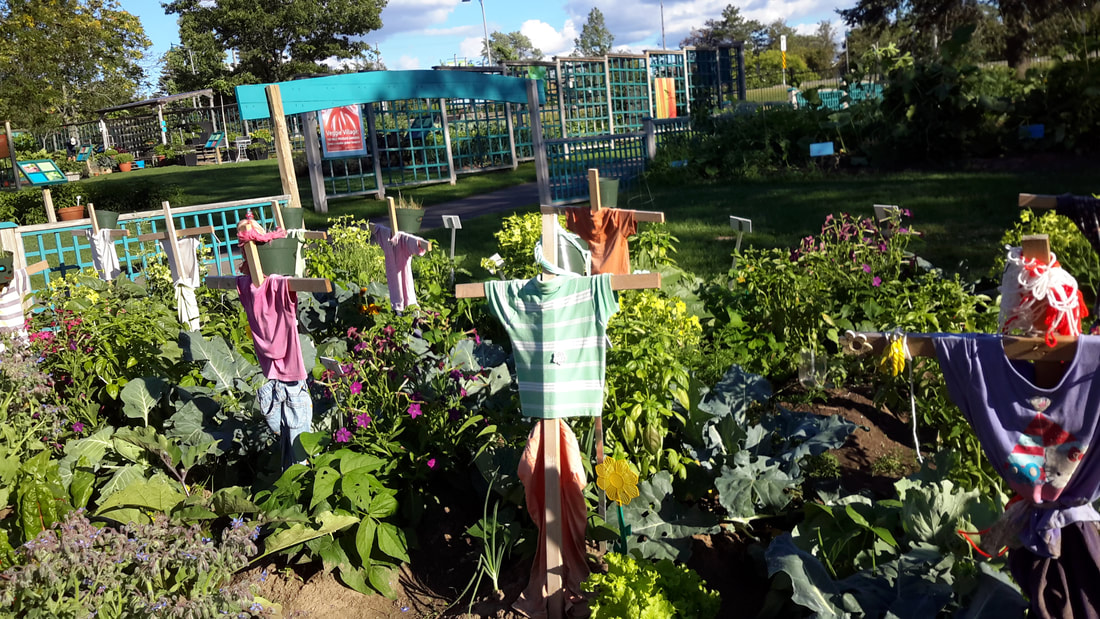



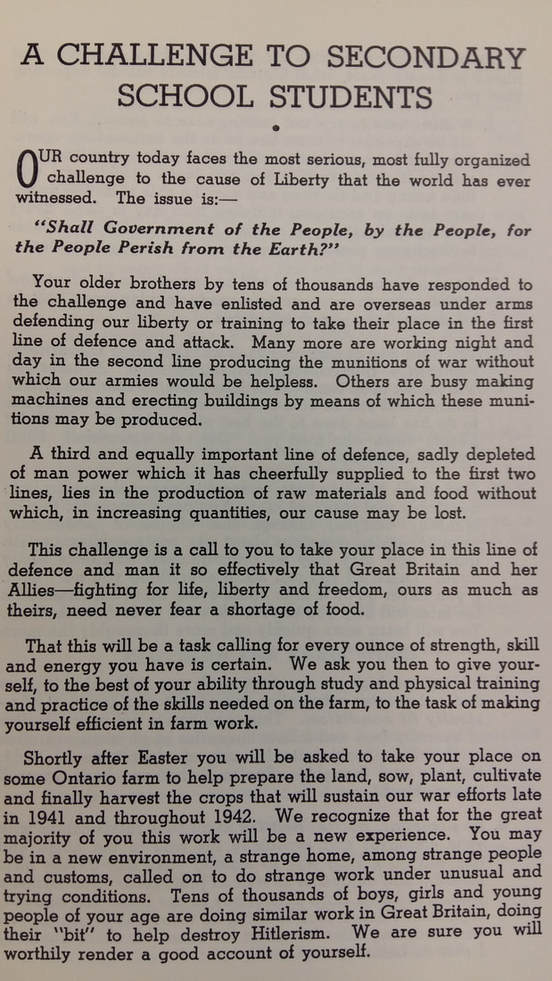
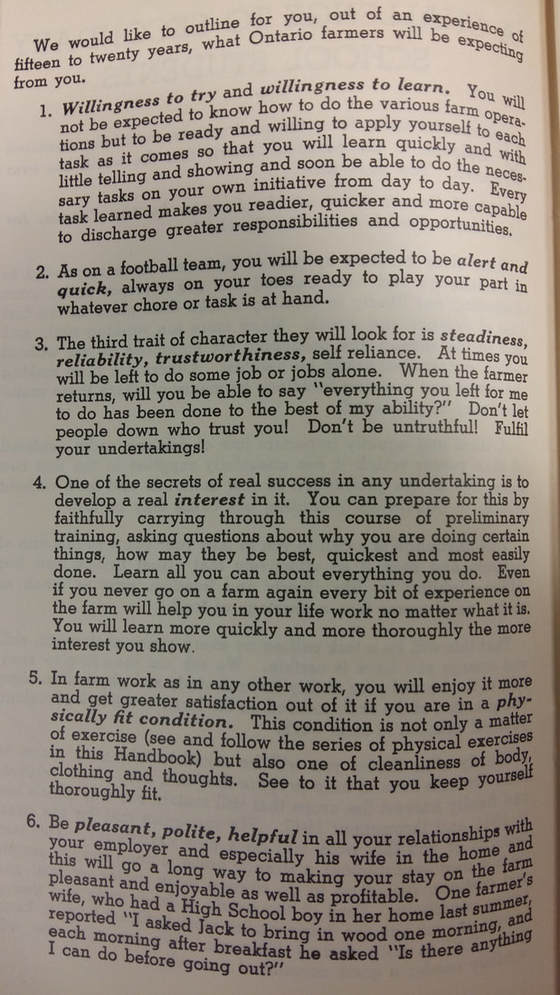

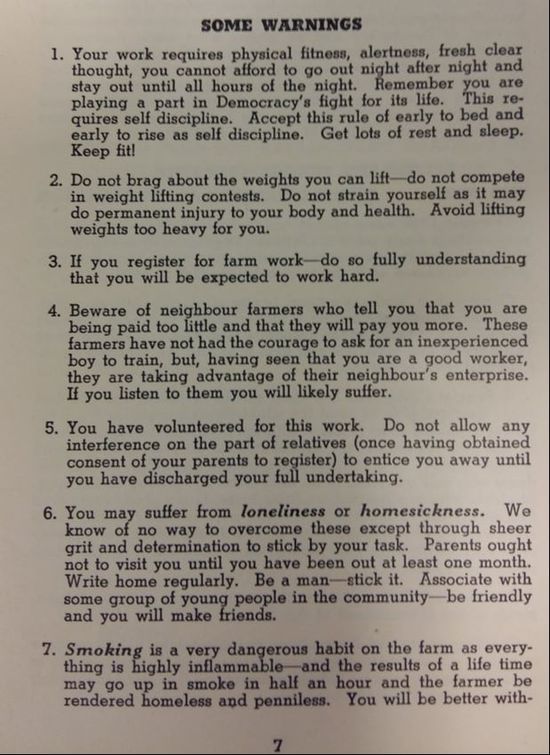
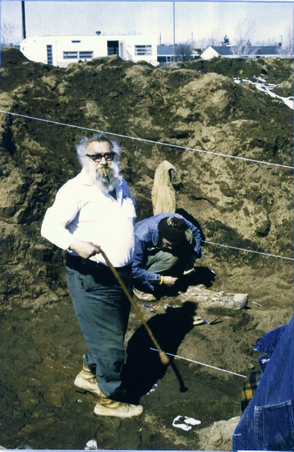
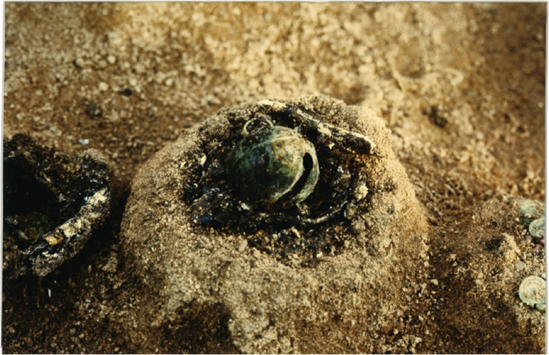
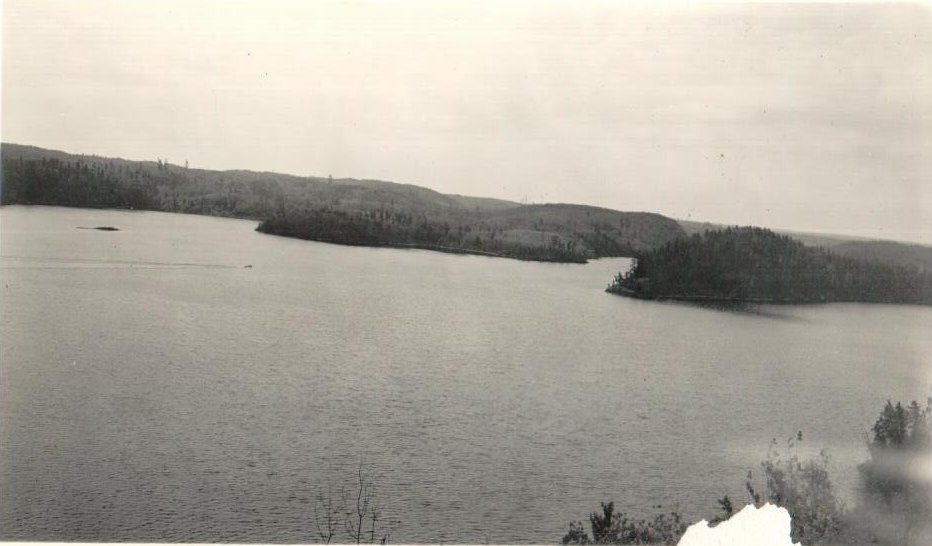
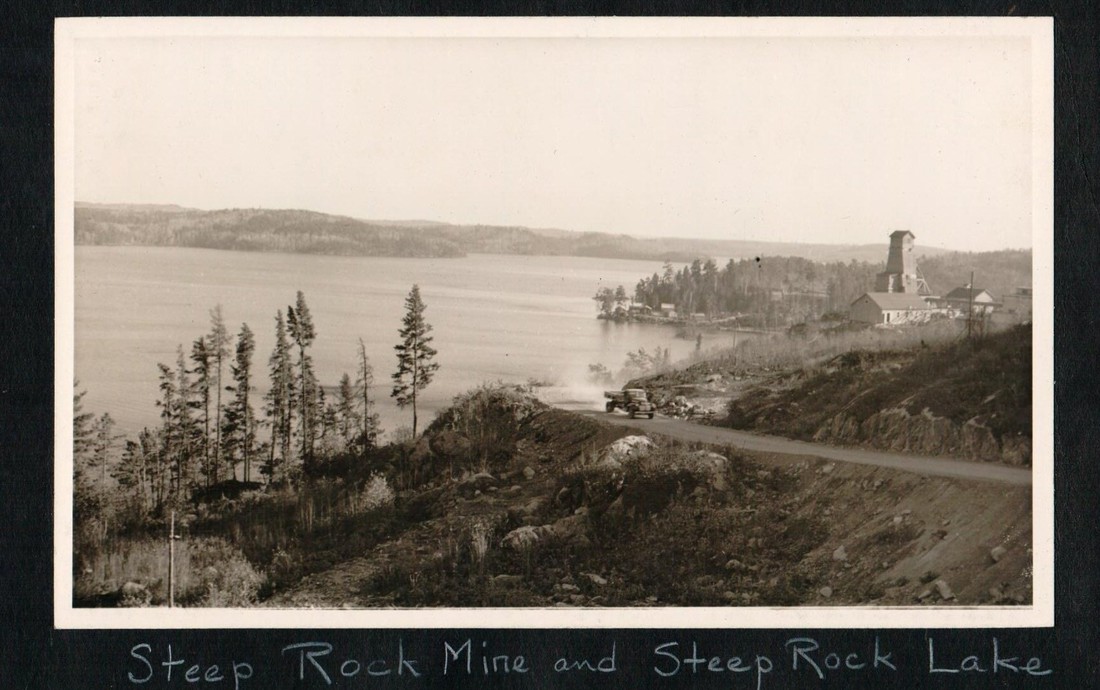
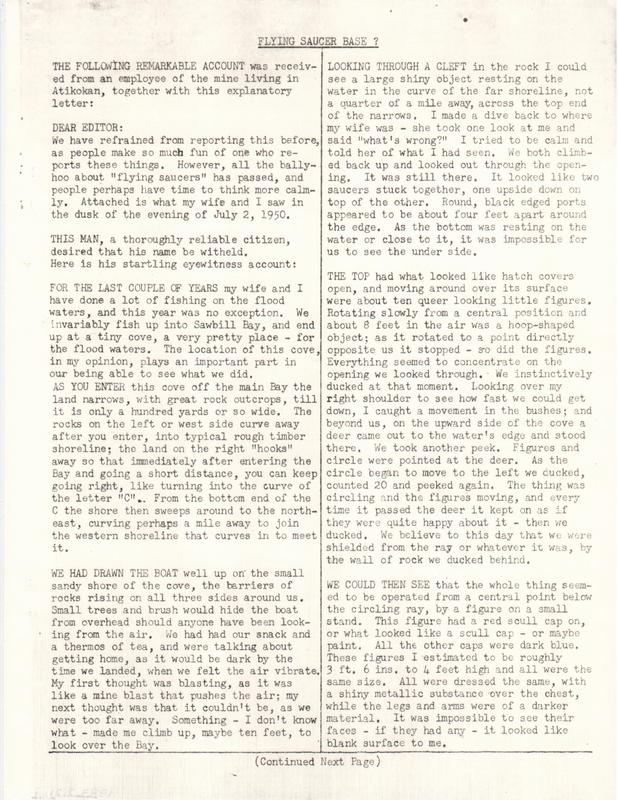


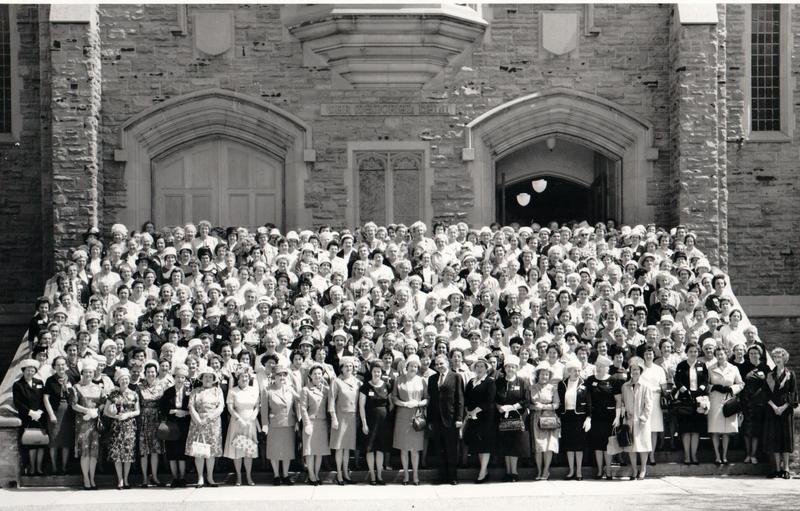

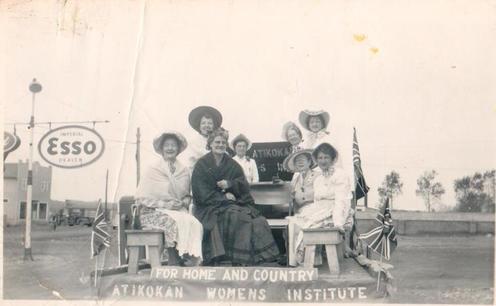
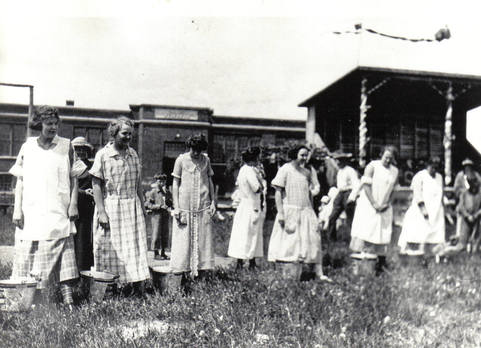
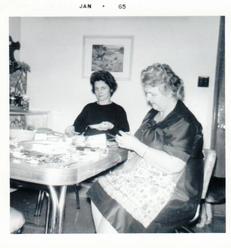
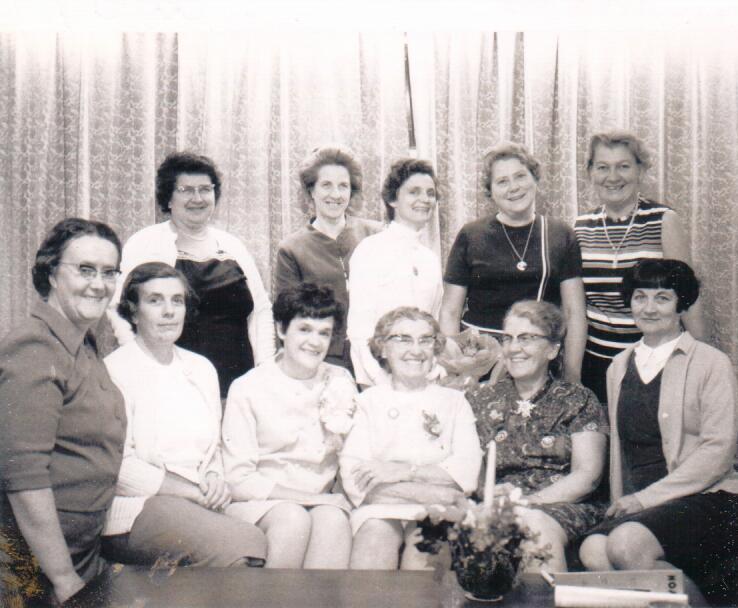
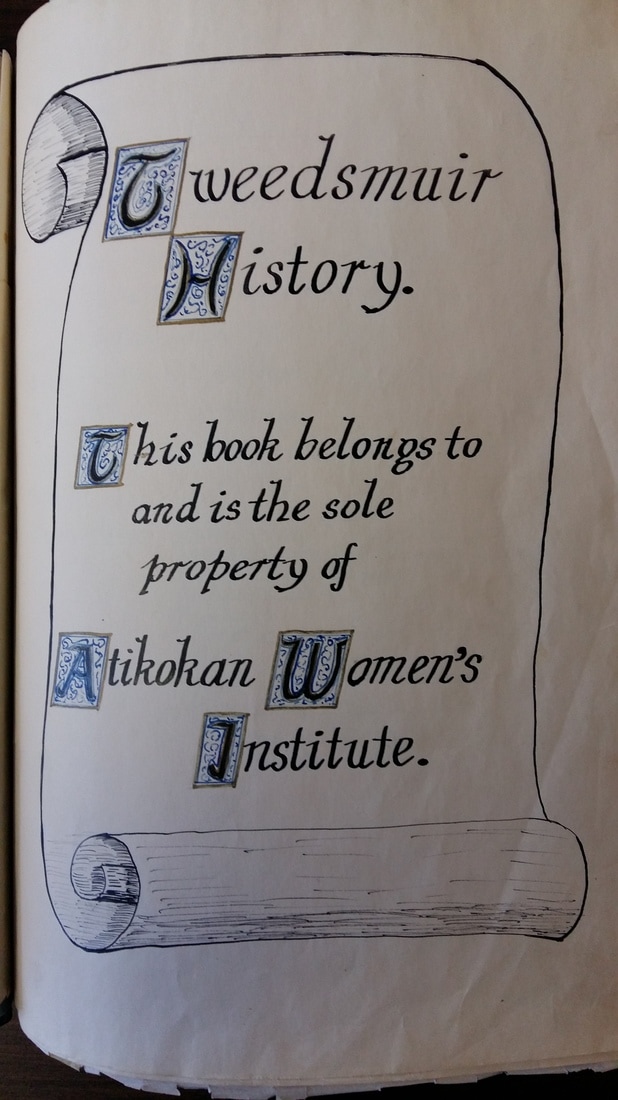
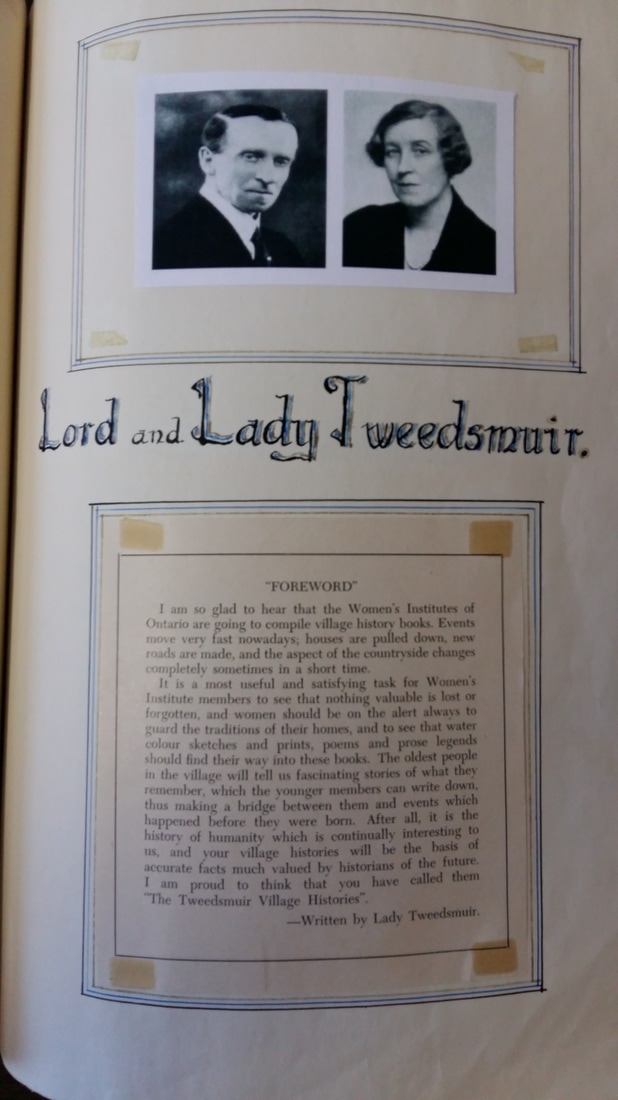
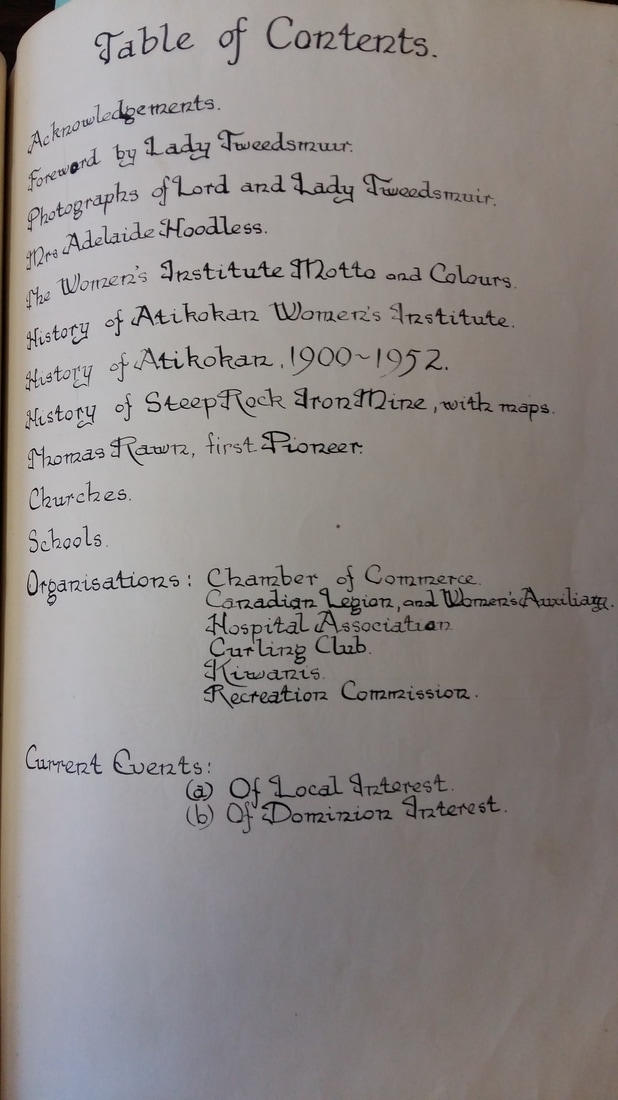
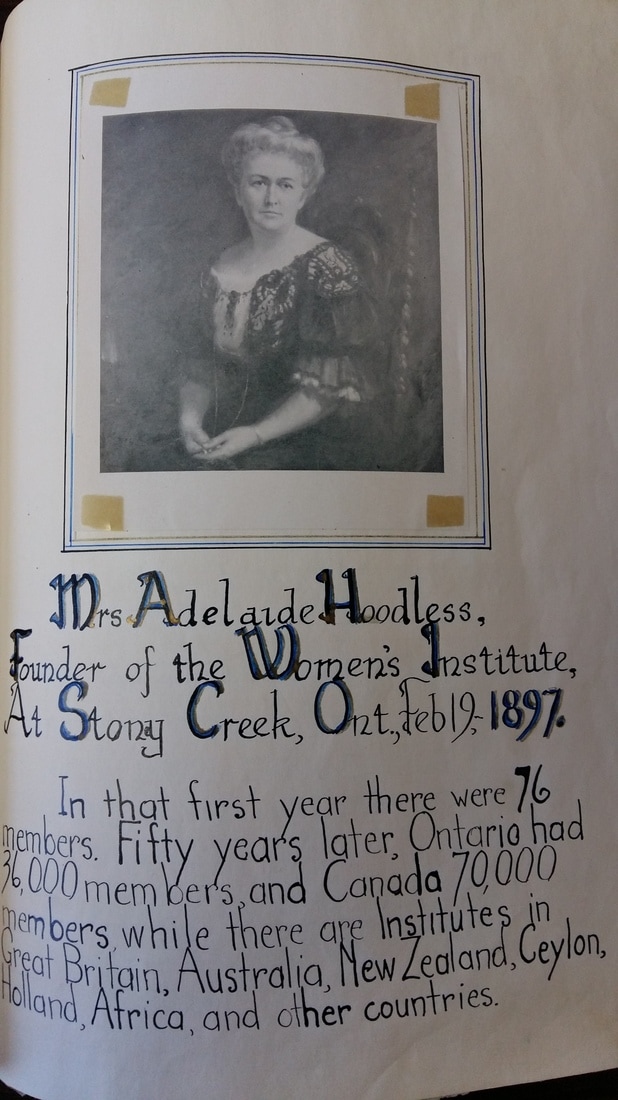
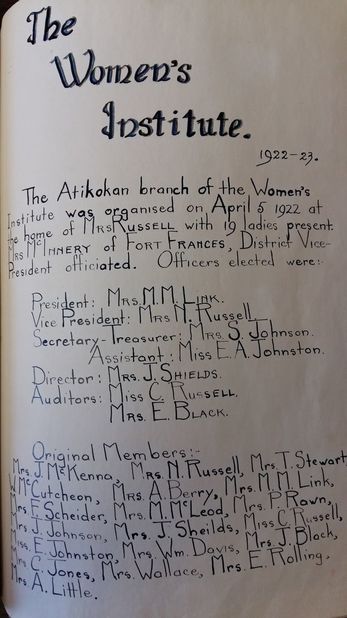
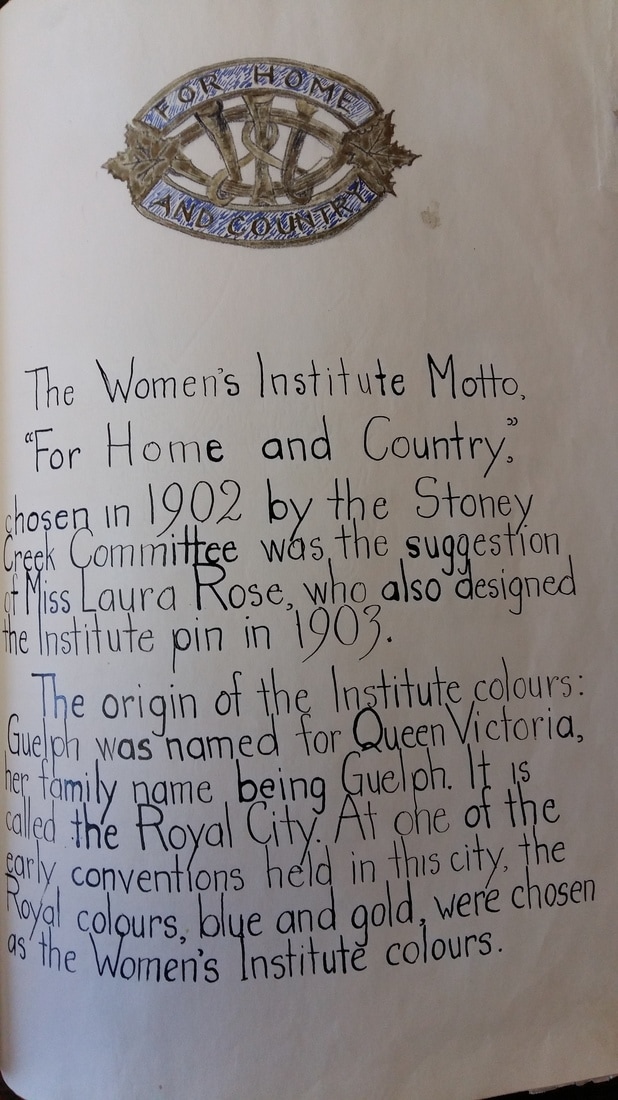
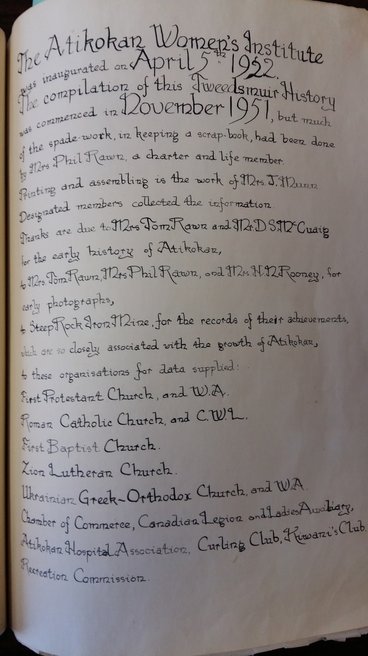
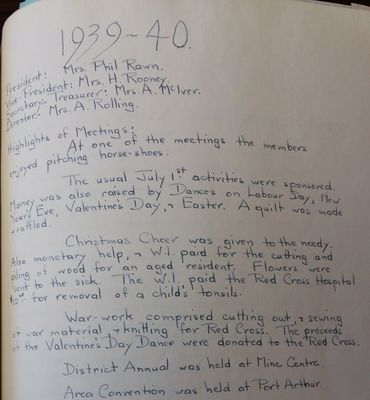
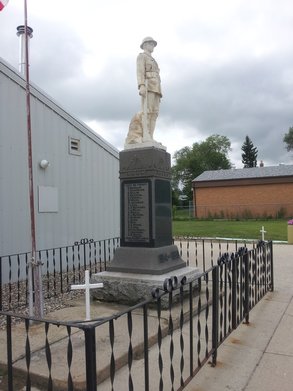
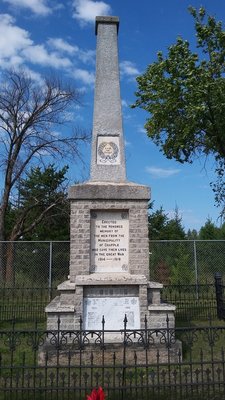
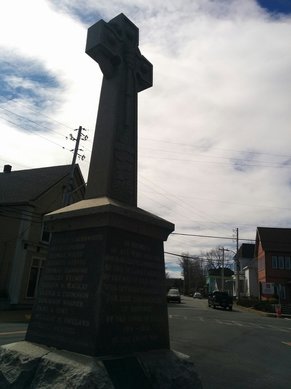
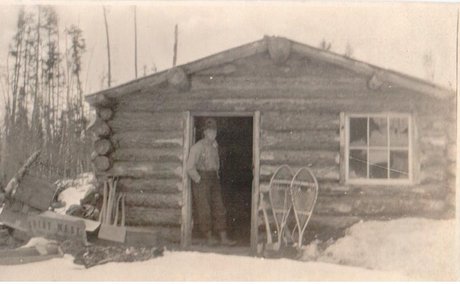
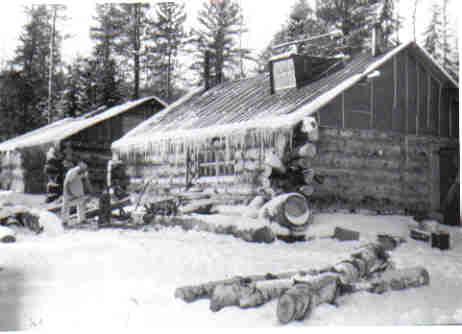
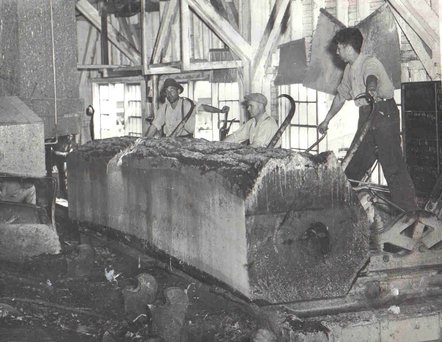
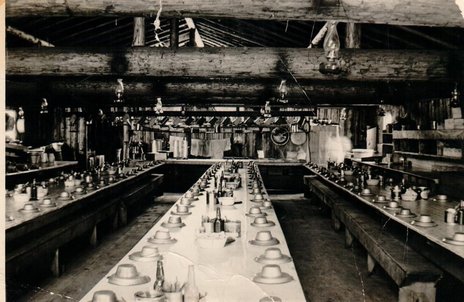
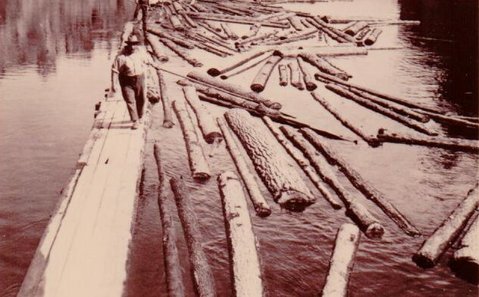
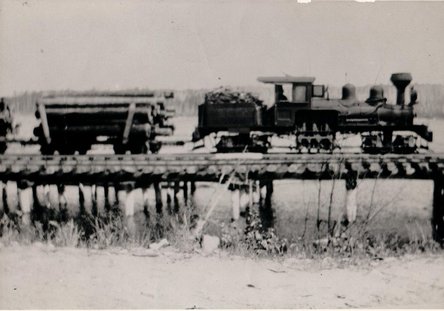
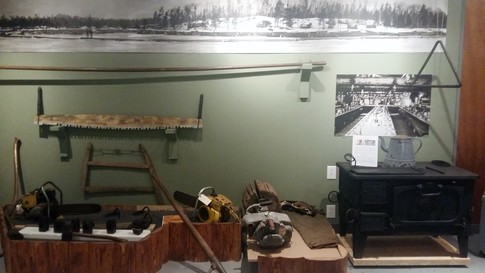
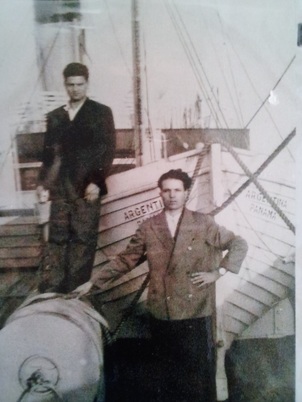
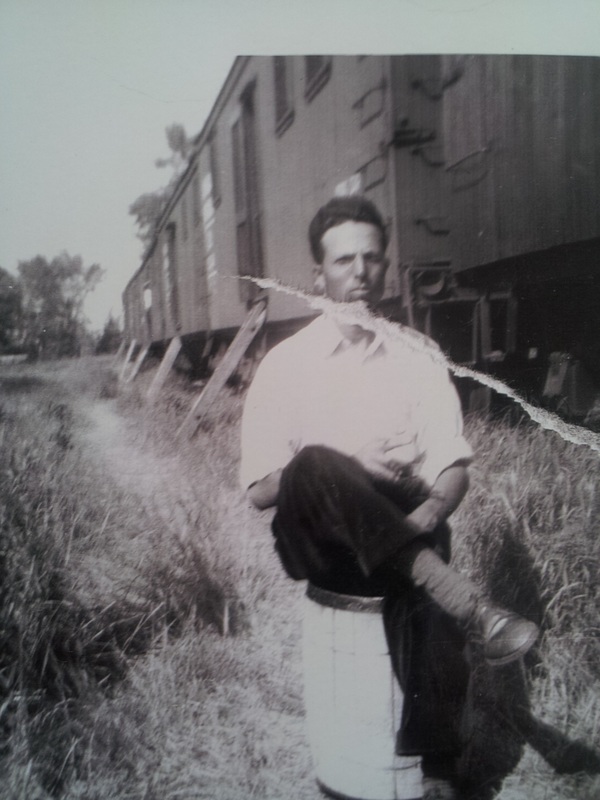
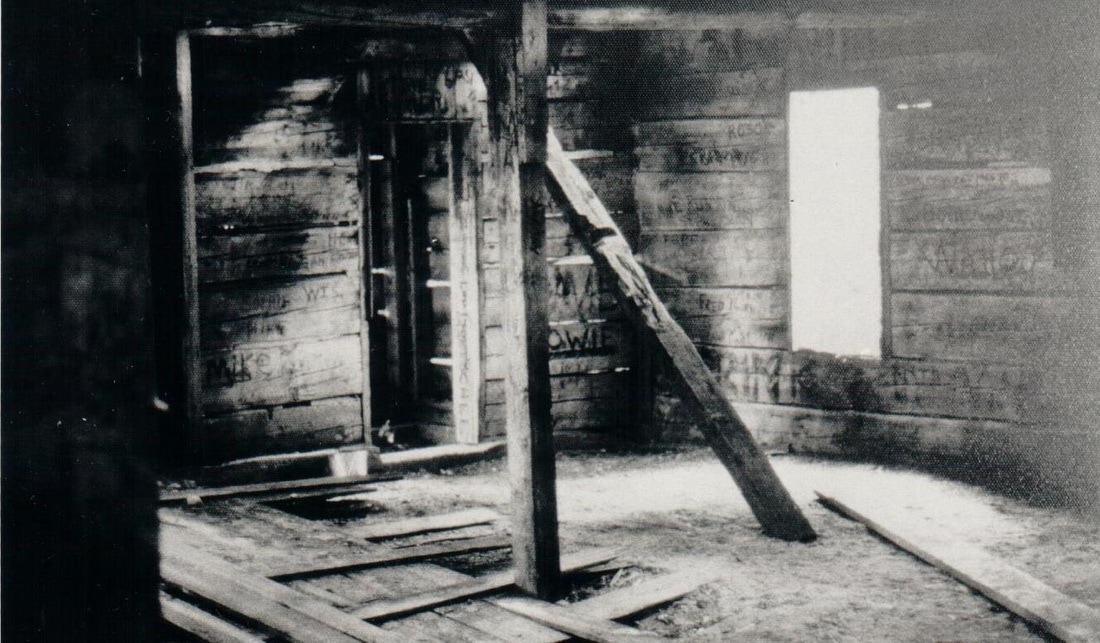
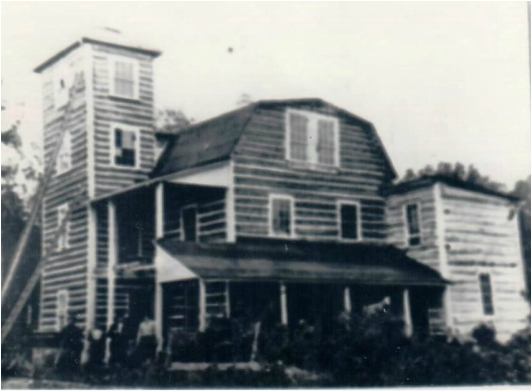
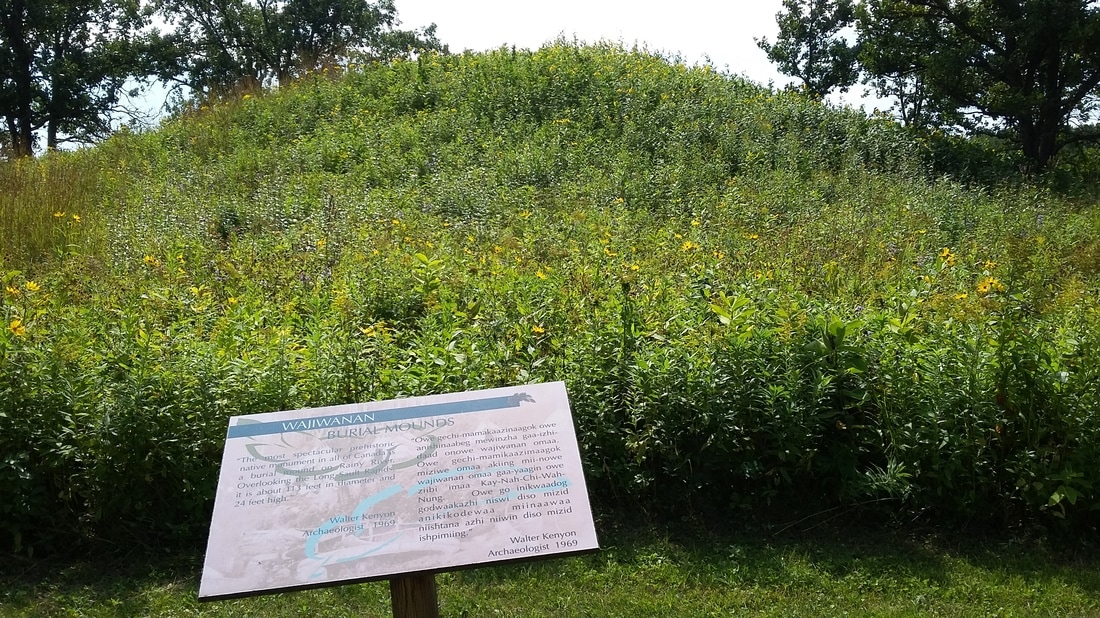

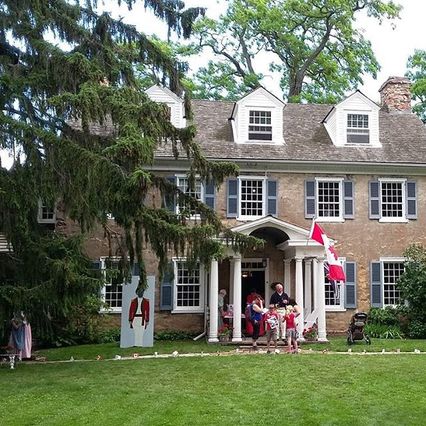
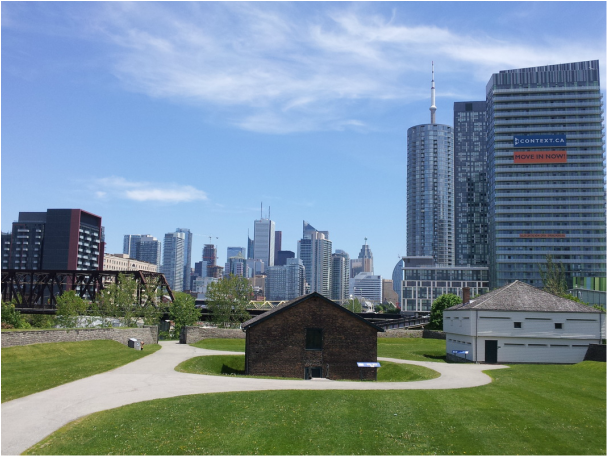
 RSS Feed
RSS Feed
